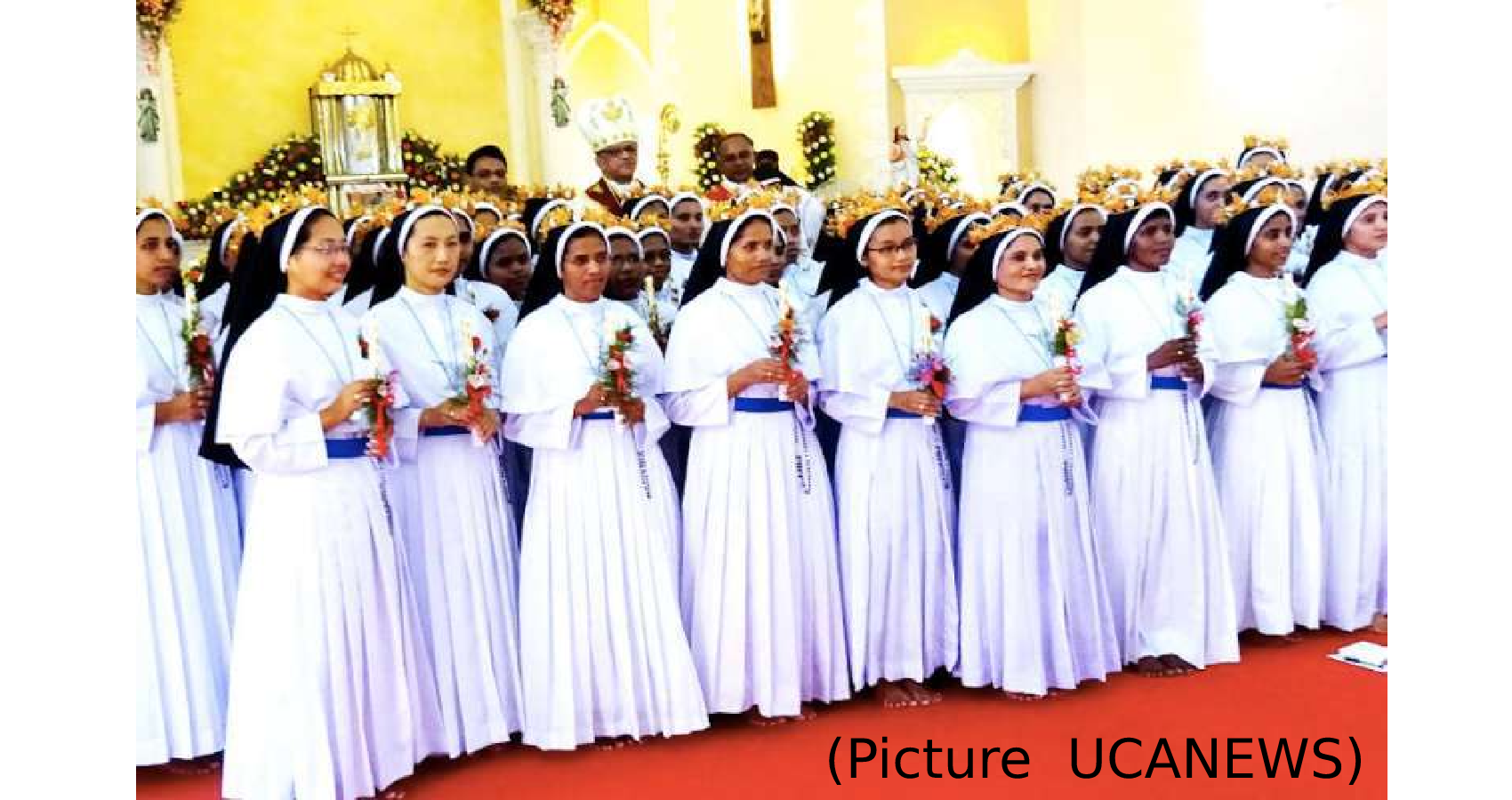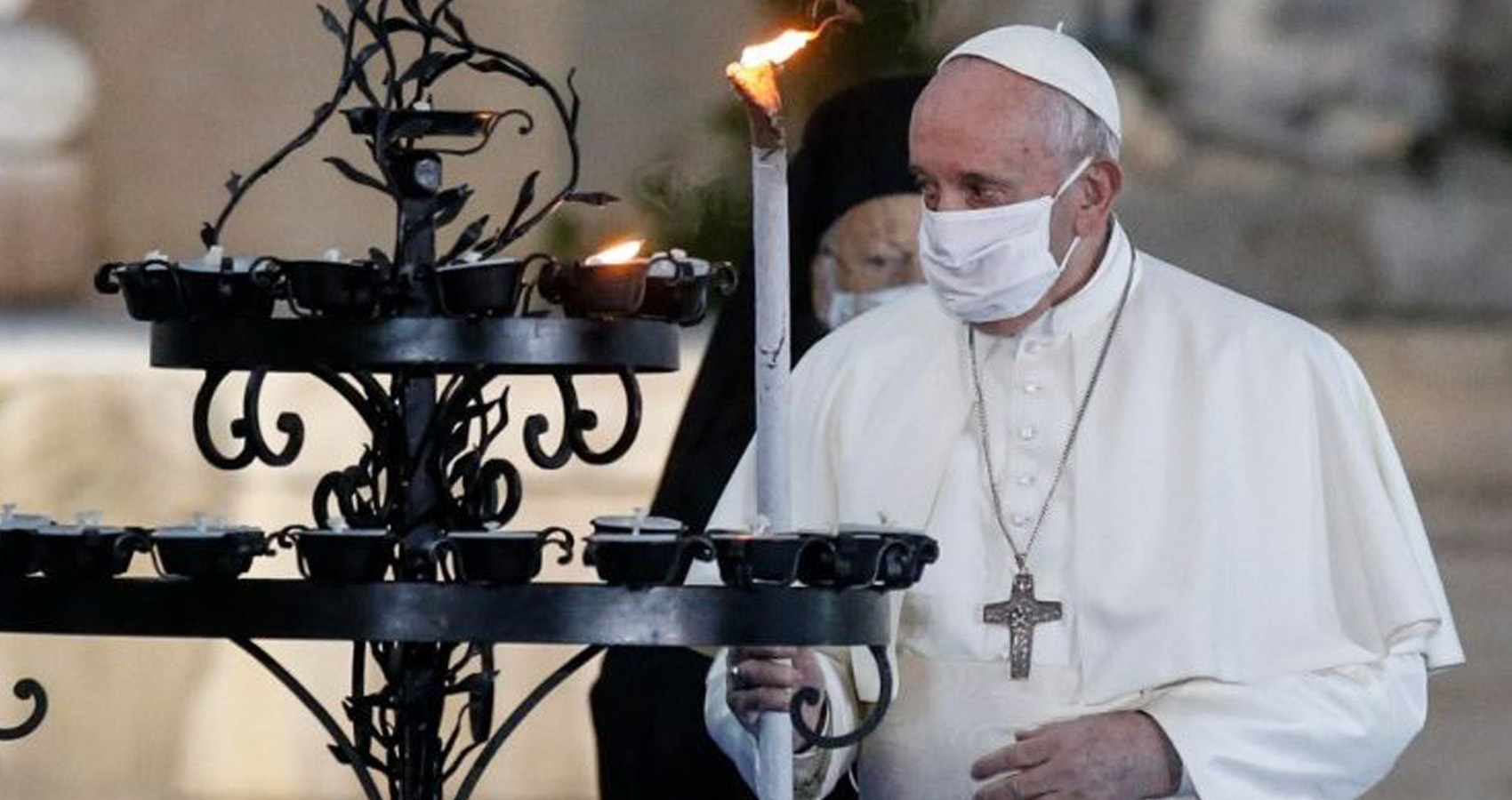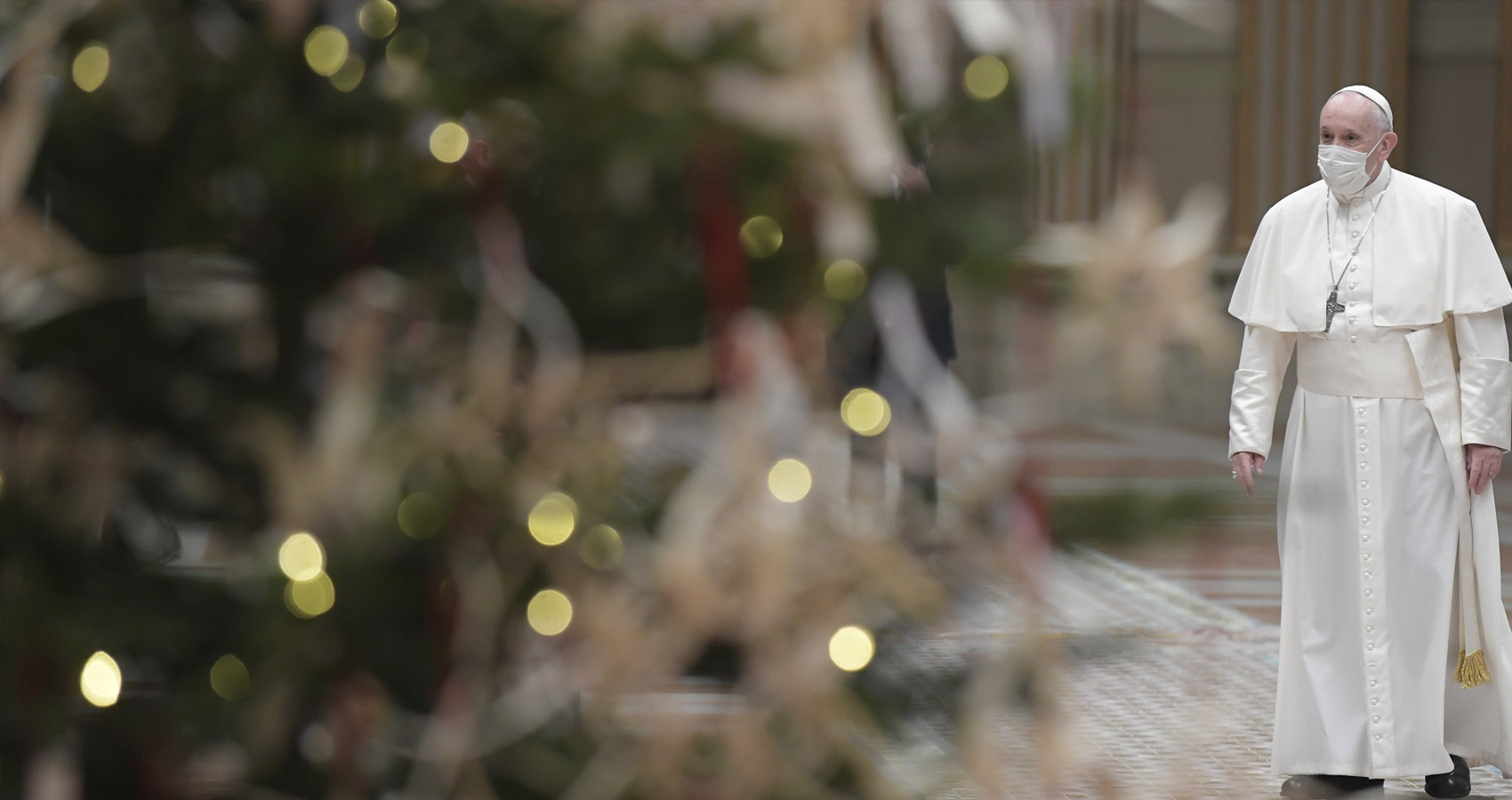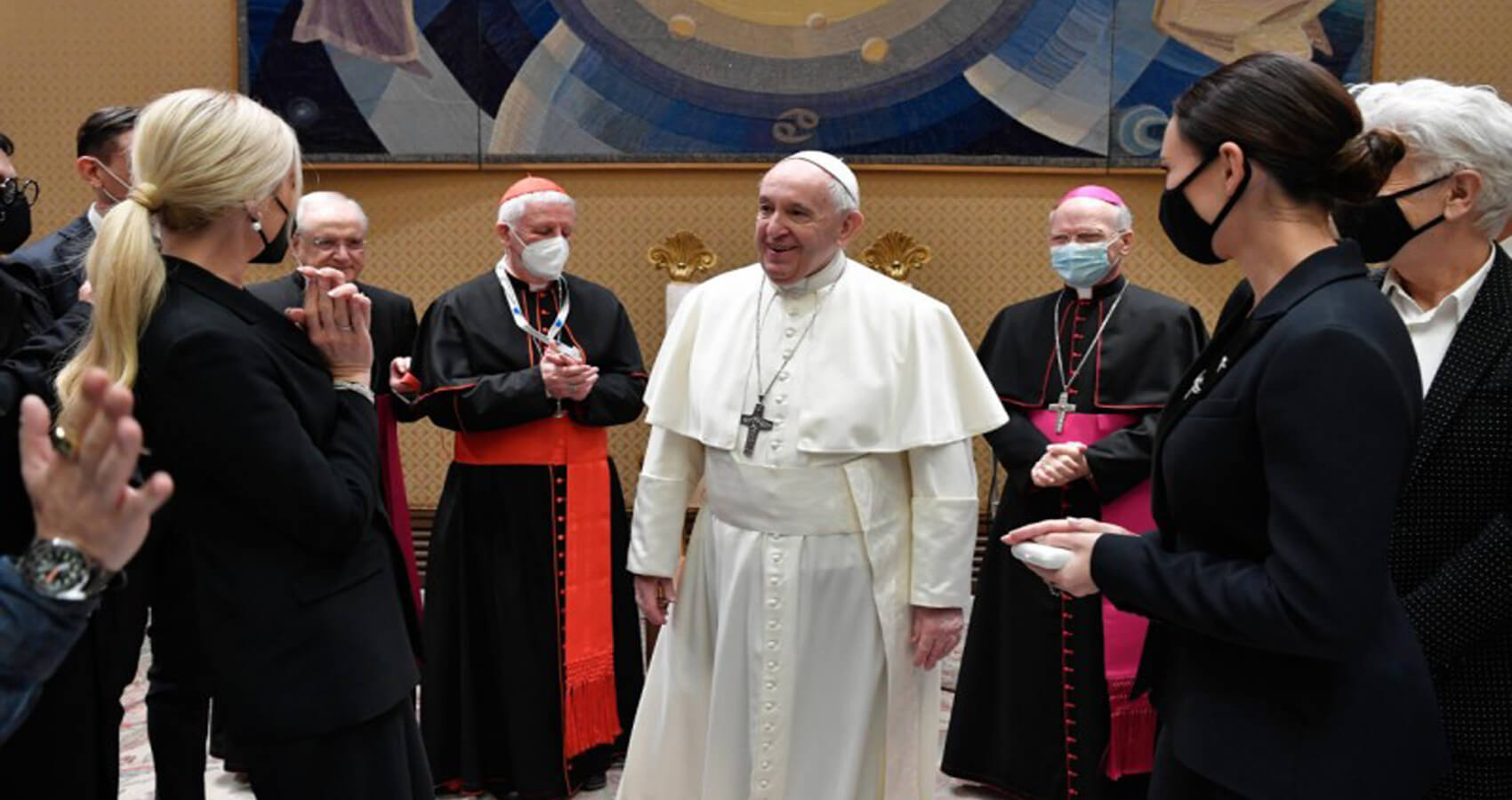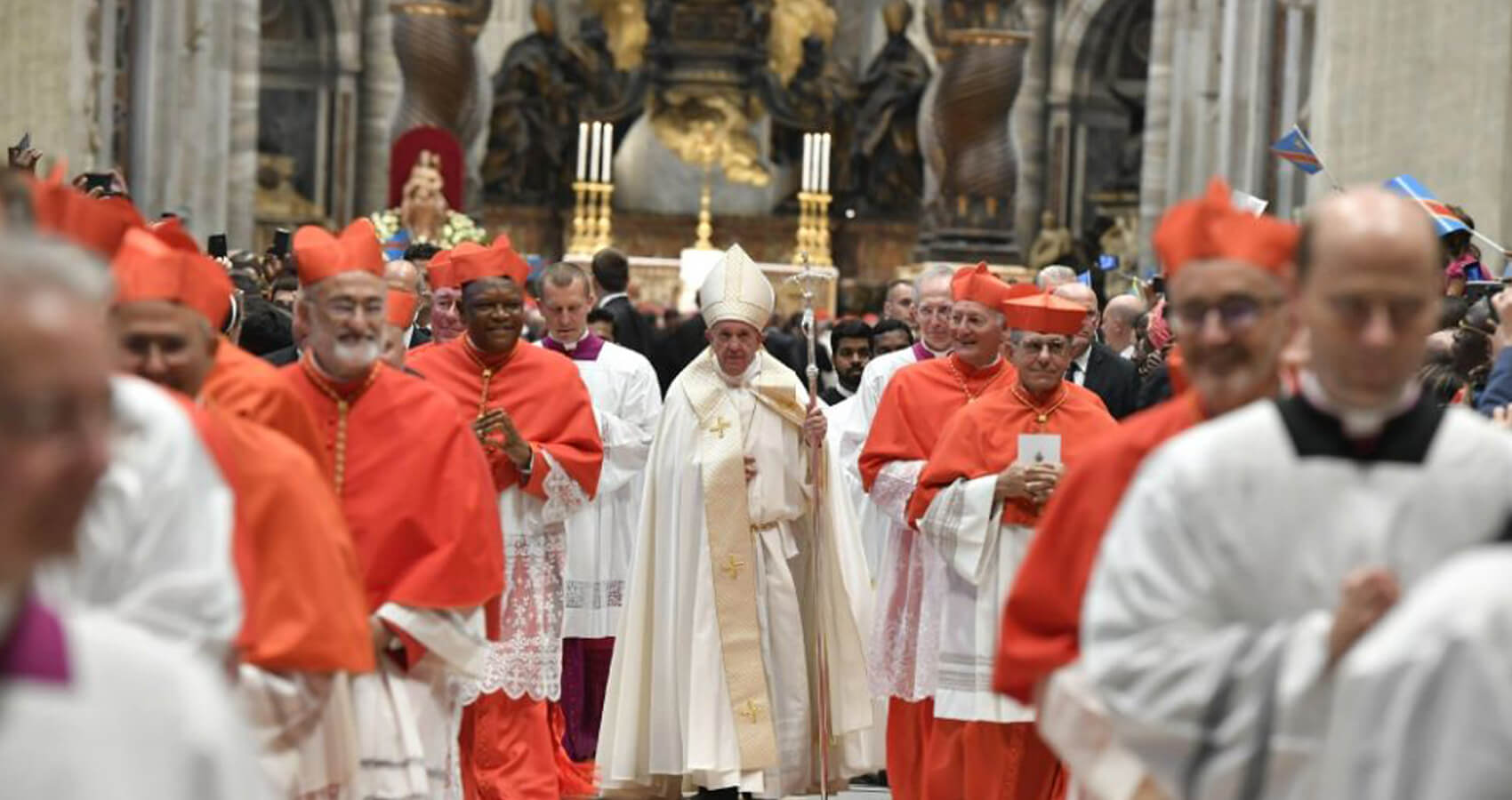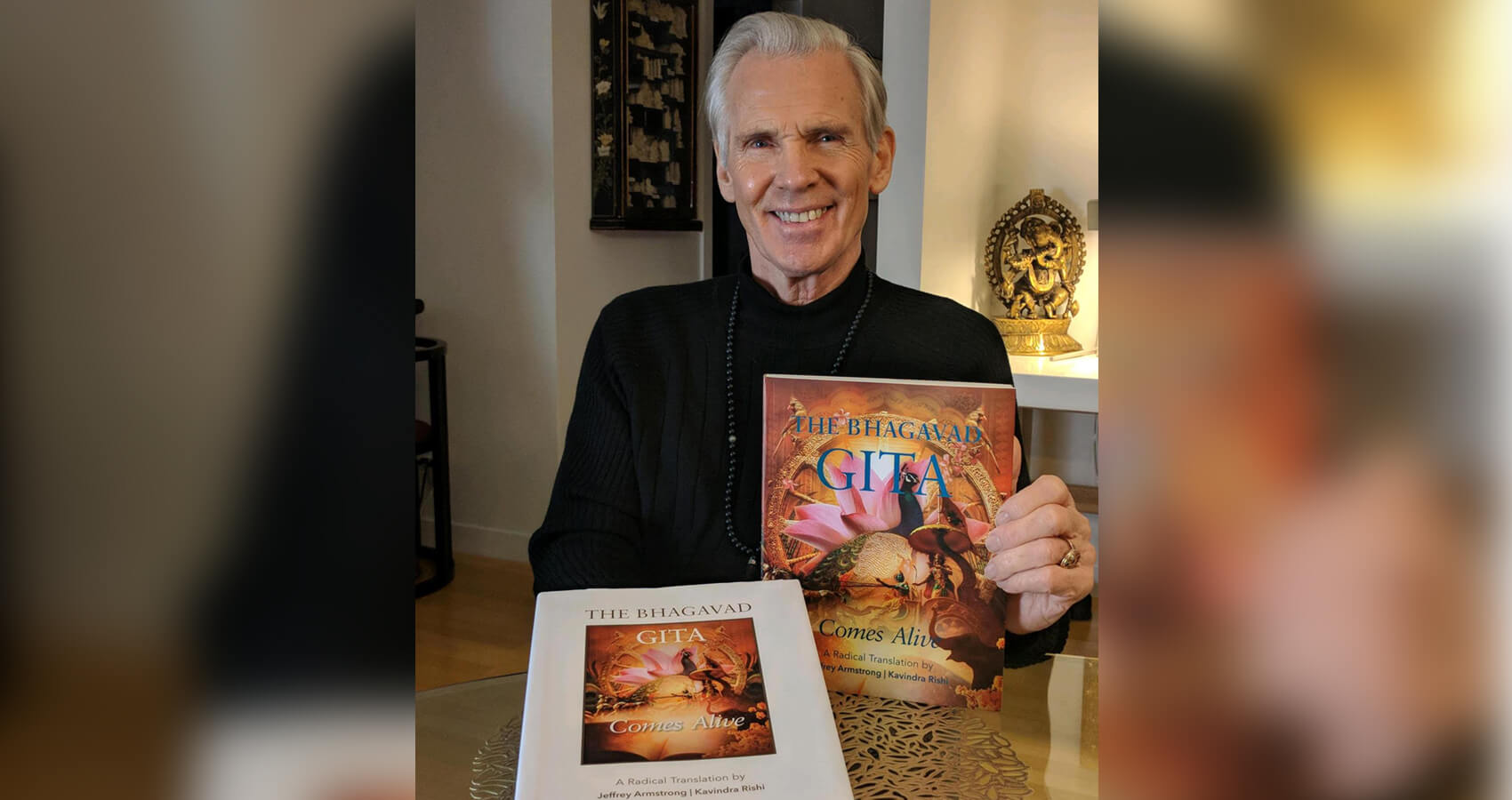On Friday (Oct. 29), Pope Francis is set to hold a highly anticipated private audience with President Joe Biden at the Vatican. It will be the first in-person meeting between the pontiff and the Catholic head of state since Biden’s election.
 Biden is the 14th U.S. president to meet a pontiff at the Vatican, and the Eternal City is bubbling with speculation over what the two are likely to discuss. The meeting is expected to be cordial, focusing on what the two have in common, but historically the relationship between the Vatican and the Oval Office has often been tense — even occasionally hostile.
Biden is the 14th U.S. president to meet a pontiff at the Vatican, and the Eternal City is bubbling with speculation over what the two are likely to discuss. The meeting is expected to be cordial, focusing on what the two have in common, but historically the relationship between the Vatican and the Oval Office has often been tense — even occasionally hostile.
From public reprimands to diplomatic faux pas, Religion News Service takes a look back at the history of meetings between popes and U.S. presidents.
More than a hundred years ago, on Jan. 4, 1919, President Woodrow Wilson became the first American head of state to meet with a pope at the Vatican, during a European tour in the aftermath of World War I, which had left the continent in shambles and rife with tensions.
The pontiff at the time, Pope Benedict XV, had spoken fervently against war and in 1917 wrote a letter “to the Heads of State of the Belligerent Peoples,” which outlined a plan for peace and reconstruction for Europe and beyond. In January of 1918, Wilson pronounced his 14 points for the establishment of a new postwar world. Some observers at the time suggested Wilson felt as if the frail Italian pontiff had stolen his thunder by releasing his vision first.
 The first encounter between a U.S. president and a pope was also a meeting of two global visions for peace, at times opposing and sometimes aligned. The evolving contours of these visions would go on to define the relationship for a century.
The first encounter between a U.S. president and a pope was also a meeting of two global visions for peace, at times opposing and sometimes aligned. The evolving contours of these visions would go on to define the relationship for a century.
Eisenhower and Pope John XXIII: ‘That was a beaut!’
President Dwight D. Eisenhower and Pope John XXIII met at the Vatican in December 1959. John XXIII, known as “the good pope” for his affable and gregarious attitude, tried to learn a few words in English to put the president at ease. Despite his efforts, the elderly pope stumbled through his English and at the end of the speech ironically quipped “that was a beaut!” in Italian. The president, accompanied by his family, burst out laughing along with everyone present, blessing the papal annals with some rather playful pictures of the historic event.
Kennedy and Pope Paul VI: To kiss the ring or to not kiss the ring?
The first Catholic president, John F. Kennedy faced significant scrutiny back home for how he would handle his July 1963 meeting with Pope Paul VI. Anti-Catholic sentiment remained strong in the U.S., and even before his visit, cartoons popped up showing Kennedy bowing to the pope in Rome. The media at the time questioned whether the U.S. president would follow Catholic protocol and bow to kiss the pope’s ring.
Instead, Kennedy and Pope Paul VI exchanged a firm handshake during their meeting and spoke in English. Five months after the visit, Kennedy was fatally shot. People close to the pope said he “wept uncontrollably” at the news and later publicly condemned Kennedy’s assassination.
Johnson and Pope Paul VI: American egos and Vietnam
President Lyndon B. Johnson’s visit to the Vatican on Dec. 23, 1967, came as the Catholic Church prepared to celebrate Christmas, but according to witnesses, it was less than jolly. Paul VI made his objection to the Vietnam War heard during the meeting, with some claiming he slammed his fist on the table in anger. Johnson made sure to leave a lasting impression — literally — gifting the pope a bronze bust of himself.
Nixon and Pope Paul VI: From amicable to acrimonious
President Richard Nixon met with Pope Paul VI at the Vatican twice. The first time, in March 1969, the two discussed the ongoing war in Vietnam and the possibility for peace. Nixon praised the pope for his words, stating they were “a source of profound inspiration” and promising to make do on his peace-building efforts.
When they met again on Sept. 28, 1970, as the Vietnam War continued to escalate, the encounter was “less than pleasant, even acrimonious,” according to Peter Hebblethwaite’s biography of Pope Paul VI.
Ford and Pope Paul VI: A divided Europe, a divided world
With Europe increasingly divided by the Cold War, the meeting between President Gerald Ford and Pope Paul VI focused on how to promote unity. The two met at the Vatican on June 3, 1975. Secretary of State Henry Kissinger was also in attendance.
During the brief encounter, the pope encouraged the U.S. to leverage its now established position of leadership for unity. They also addressed the rising tension between Israel and Egypt, with the pope promoting a “peaceful coexistence” between Christians and Muslims. The Middle East would increasingly became a point of contention in U.S.-Vatican diplomacy.
Carter and Pope John Paul II: Bookish alliances
In 1979, Pope John Paul II became the first pope to visit the White House. A year later, on June 21, 1980, he met with President Jimmy Carter in the papal library at the Vatican.
During the meeting, Carter condemned the Soviet Union’s expansion in the Middle East, especially its invasion of Afghanistan. John Paul II directed the president’s attention to finding a resolution to the conflict between Israel and Palestine.
At the end of the meeting, the pope gifted Carter with a leather-bound copy of the Bible for the president to read. Seeing that the text was in Latin, Carter jokingly told the pope, “It would be easier for you than me!”
Reagan and Pope John Paul II: The ‘bromance’ that defeated communism
A number of books and films have been made documenting the synergy between President Ronald Reagan and Pope John Paul II, a relationship many argue contributed to the defeat of communism and the Soviet Union. The two met twice at the Vatican and twice in the United States.
When Reagan and John Paul II met for the first time at the Vatican on June 7, 1982, they already had much in common. In 1981, they both survived assassination attempts, and they viewed their meeting as a divine sign that they had a purpose to fulfill. “God saved us both,” John Paul II reportedly said, “so that we can do what we are about to do. How else can it be explained?”
The meeting, which lasted 50 minutes, marked the first time a pope and a president spoke alone behind closed doors. The two had exchanged a flurry of letters in the months leading up to the meeting, addressing the future of Europe and an end to the escalating nuclear tensions.
For the next six years, the Reagan and John Paul II partnership reshaped Europe amid the tumult of the Cold War, revealing the potential of a union between two global and moral superpowers. Two years after the meeting, the Holy See and the United States established official diplomatic relations.
H.W. Bush and Pope John Paul II: Failing papal appeals for peace
President George H.W. Bush met with Pope John Paul II twice at the Vatican — in 1989 and 1991 — but both times the shadow of war hung over the encounters. John Paul II’s appeals for peace had become louder after the U.S. engaged in the First Gulf War, which the pope had described as “an adventure with no turning back.”
“The dignity of America,” the pope said before the cameras at their second Vatican meeting, “the reason she exists, the condition for her survival; yes, the ultimate test of her greatness: to respect every human person, especially the weakest and most defenseless ones, those as yet unborn.”
Clinton and Pope John Paul II: Roast beef and culture wars
President Bill Clinton met with Pope John Paul II at the Vatican on June 2, 1994. The two had met three times before in the United States, where the contentious question of abortion hung over the meetings. The pope called on the “responsibility of the great American nation, which always upheld the ethical values at the base of every society.” Clinton gifted the pope artwork representing an olive branch, promising “joint efforts to promote the central role of the family in society.”
Bush, Pope John Paul II and Pope Benedict XVI: Failure to launch
No president has visited the Vatican more often than President George W. Bush, who made four trips to the Eternal City, plus a fifth meeting with the pope just outside Rome.
On May 28, 2002, Bush had his first encounter with Pope John Paul II at the Vatican, just months after the attacks on the World Trade Center. The pope failed in convincing Bush to halt the U.S. invasion in Iraq and chastised the war in a following meeting in June 2004.
Despite the tensions, Bush praised the pope and said “being in his presence is an awesome experience.” On their last meeting at the Vatican, Bush awarded Pope John Paul II the Medal of Freedom.
Bush also met with Pope John Paul II’s successor, Benedict XVI, at the Vatican in both 2007 and 2009. Their conversations centered mostly on tensions in the Middle East, and their differing views on Iraq and the Israeli-Palestinian conflict overshadowed common agreement on abortion.
Obama and Pope Benedict XVI: Lessons on star quality and bioethics
The meeting between President Barack Obama and Pope Benedict XVI at the Vatican on March 27, 2014, lasted roughly 40 minutes. As cameras flashed furiously before them, Obama told the pope, “Your holiness, I’m sure you’re used to having your picture taken,” adding that he was “getting used to it.”
To underline his opposition to abortion and contraception, Benedict XVI gifted Obama with a document from the Congregation for the Doctrine of the Faith, which Benedict once headed, on bioethics titled “Dignitatis Personae” or “The Dignity of Persons.”
The two met again in March 2014, where they discussed “the exercise of the rights to religious freedom, life and conscientious objection,” according to the official Vatican statement on the meeting.
Trump and Pope Francis: The walls, the bridges and the frown
Tensions had already formed before Pope Francis and President Donald Trump met at the Vatican on May 24, 2017. Only a year before, the bridge-building pope had seemed to criticize Trump’s intentions to build a wall on the U.S.-Mexico border, stating “a person who thinks only about building walls, wherever they may be, and not building bridges, is not Christian.”
Trump pushed back against the papal jab on Twitter, describing the pontiff’s remarks as “disgraceful.” The Vatican meeting culminated with a photo capturing one of the pope’s most infamous frowns.
After the short meeting, the mood seemed to lighten slightly, with Trump thanking the pope and telling him, “I won’t forget what you said.” Pope Francis gifted the president a copy of his “green” encyclical on the environment, “Laudato Si’.” But in 2020, Trump announced the United States would withdraw from the Paris climate agreements.
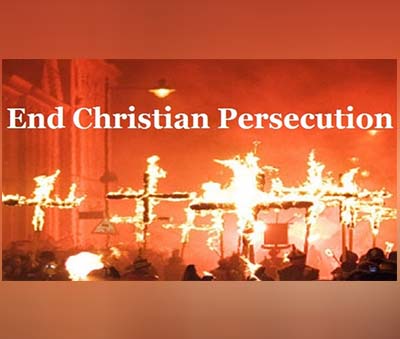 “A week from now, on December 9 and 10, the Biden Administration will be hosting the Summit for Democracy, with Indian Prime Minister Narendra Modi as an advisor. The U.S. government must state to him clearly that it will not tolerate continued religious violence in India,” said Rasheed Ahmed, Executive Director of the Indian American Muslim Council.
“A week from now, on December 9 and 10, the Biden Administration will be hosting the Summit for Democracy, with Indian Prime Minister Narendra Modi as an advisor. The U.S. government must state to him clearly that it will not tolerate continued religious violence in India,” said Rasheed Ahmed, Executive Director of the Indian American Muslim Council.
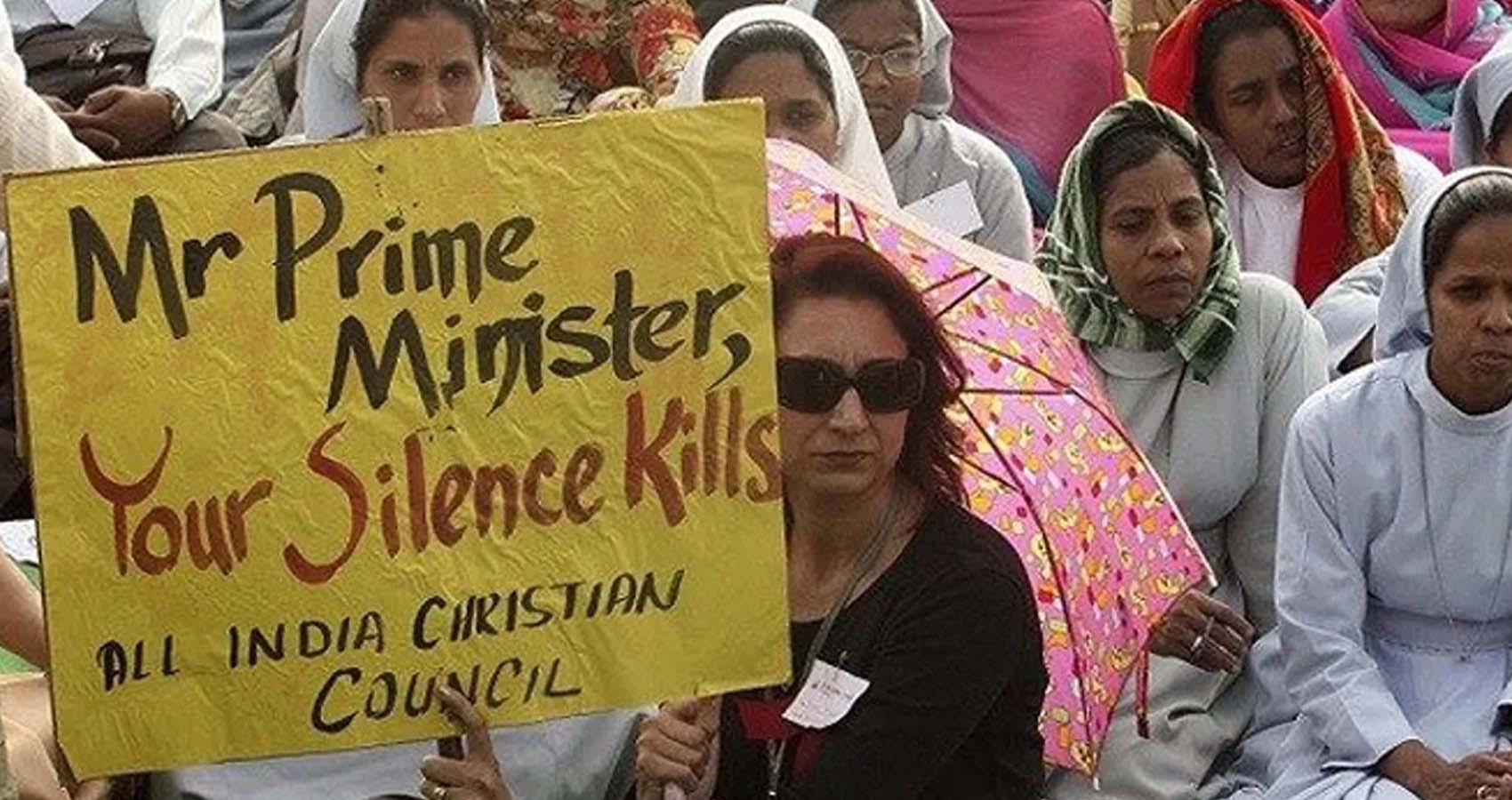
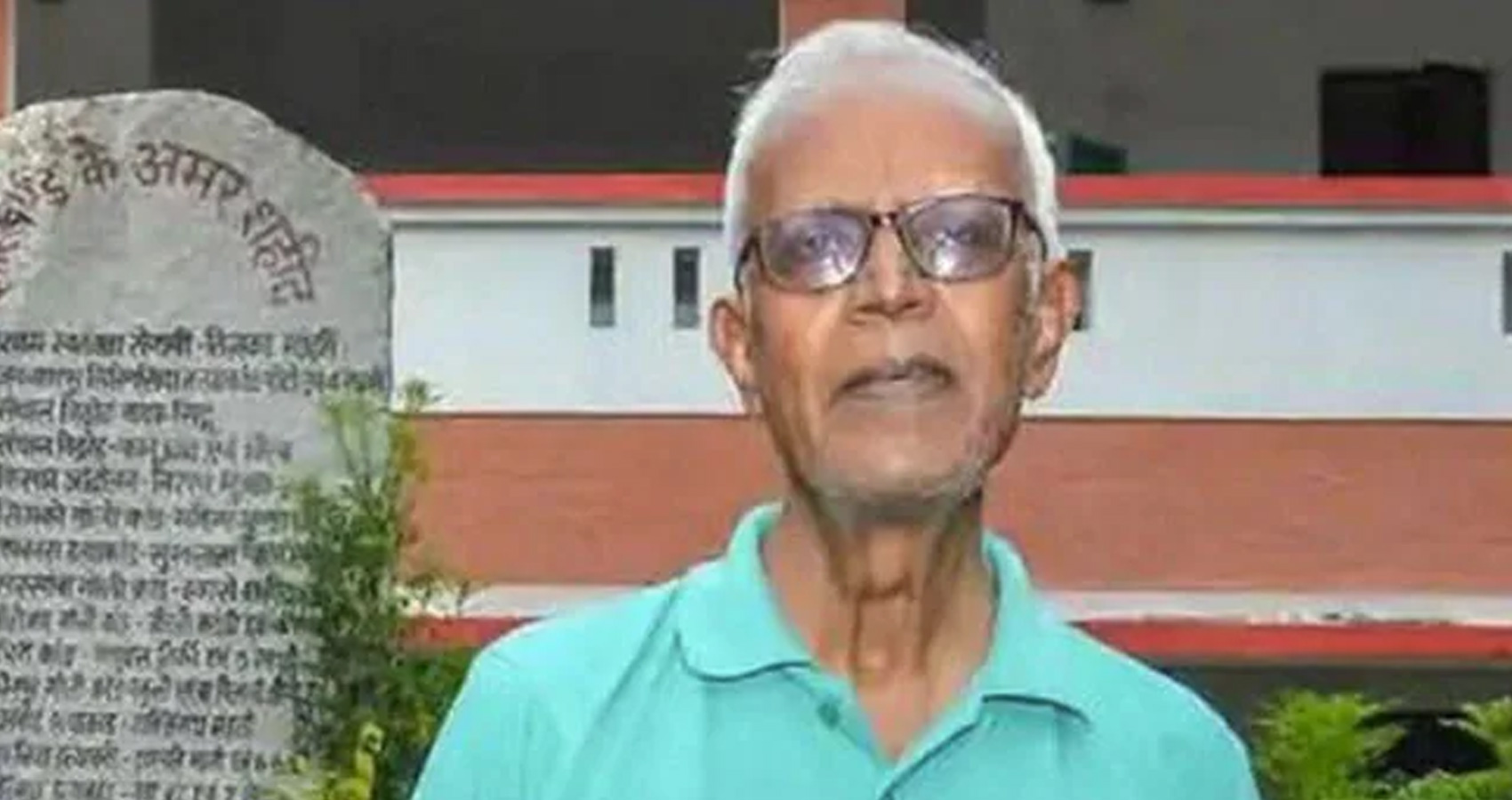
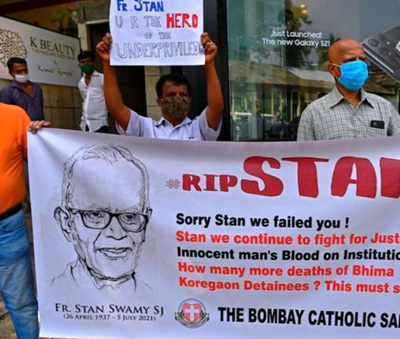 The 84-year-old Jesuit was arrested on Oct. 8, 2020, by the National Investigation Agency (NIA), a federal anti-terror combat unit, from his residence on the outskirts of Jharkhand’s state capital Ranchi in eastern India.
The 84-year-old Jesuit was arrested on Oct. 8, 2020, by the National Investigation Agency (NIA), a federal anti-terror combat unit, from his residence on the outskirts of Jharkhand’s state capital Ranchi in eastern India.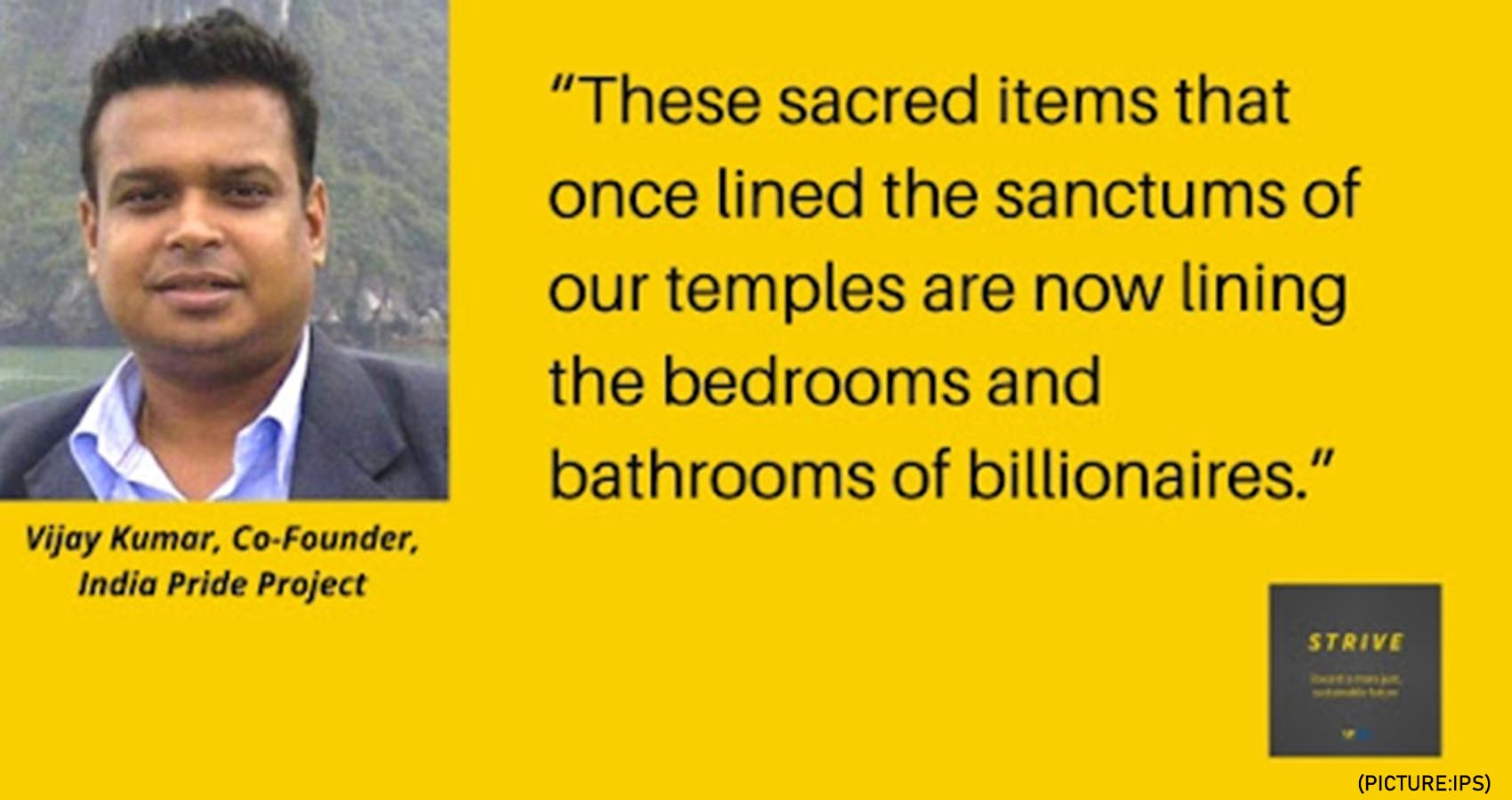
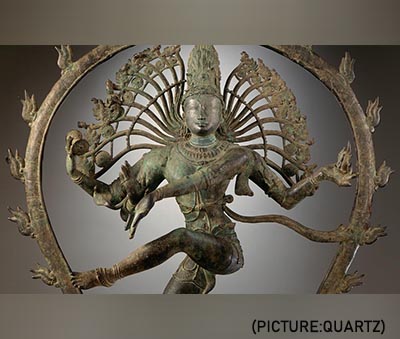 For 16 years he has been working to repatriate gods and goddesses looted from India over the years, and the challenges remain huge, he tells us in today’s episode. For example, in 2020, police seized 19,000 stolen artefacts in an international art trafficking crackdown. 101 suspects were arrested with treasures from around the world, including Colombian and Roman antiquities. One activist estimates that in France alone there are 116,000 African objects that should be returned.
For 16 years he has been working to repatriate gods and goddesses looted from India over the years, and the challenges remain huge, he tells us in today’s episode. For example, in 2020, police seized 19,000 stolen artefacts in an international art trafficking crackdown. 101 suspects were arrested with treasures from around the world, including Colombian and Roman antiquities. One activist estimates that in France alone there are 116,000 African objects that should be returned.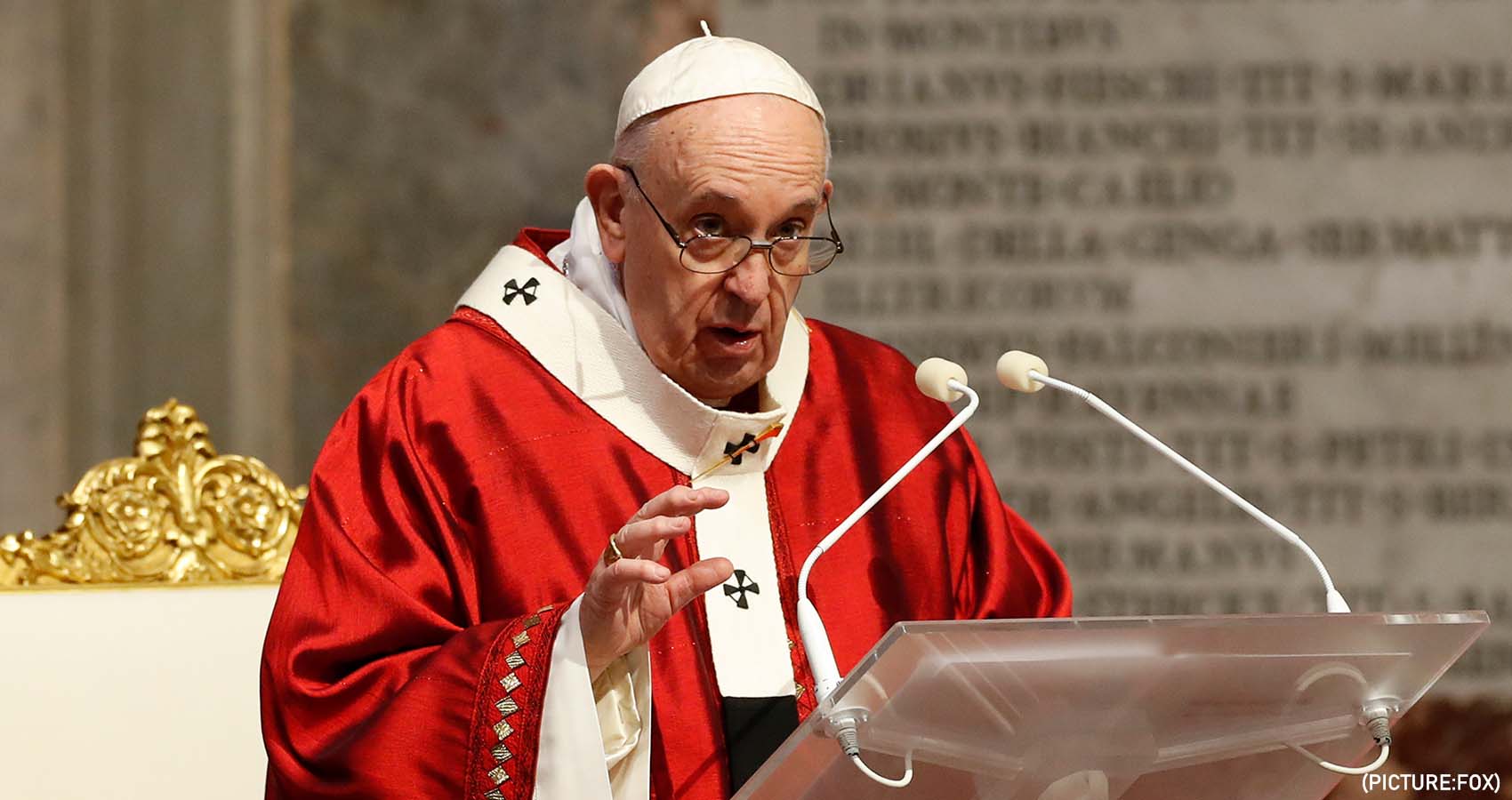
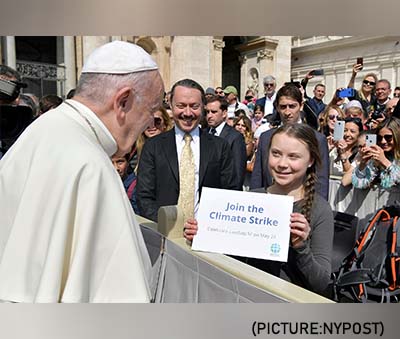 Francis expressed thanks “for all those times when you cultivate the dream of fraternity, work to heal the wounds of God’s creation, fight to ensure respect for the dignity of the vulnerable and spread the spirit of solidarity and sharing.”
Francis expressed thanks “for all those times when you cultivate the dream of fraternity, work to heal the wounds of God’s creation, fight to ensure respect for the dignity of the vulnerable and spread the spirit of solidarity and sharing.”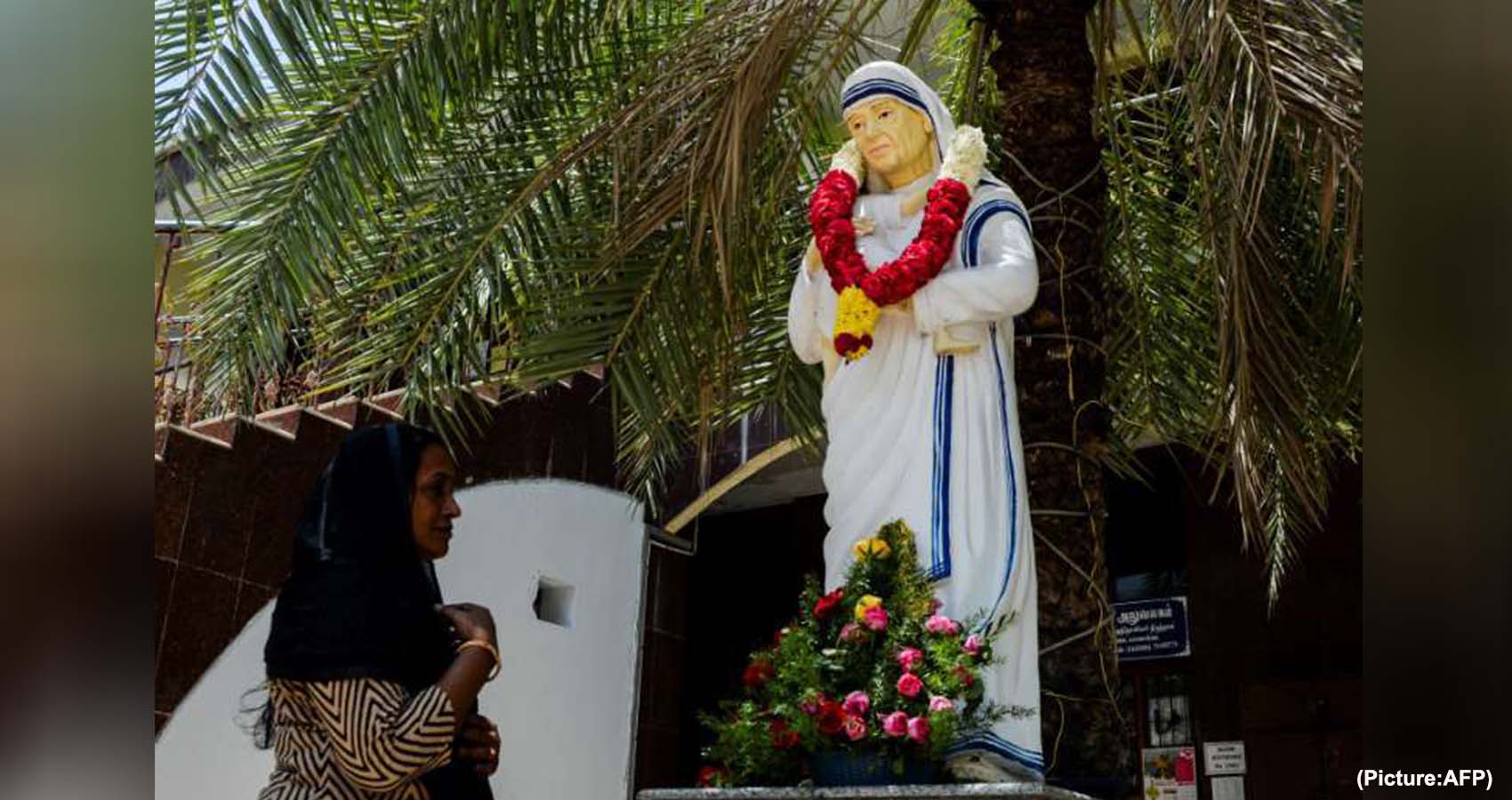
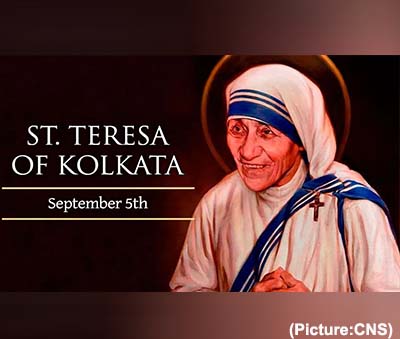 Committee policy, established in 1992, requires four conditions for the inscription of saints and blesseds on the U.S. calendar: They should have been inscribed on diocesan proper calendars for at least five years; the “cultus” of the candidate “should exist in a significant number of dioceses, broader than the area or region of the country”; the candidate should have served in the United States; and a new inscription would ordinarily have the rank of an optional memorial.
Committee policy, established in 1992, requires four conditions for the inscription of saints and blesseds on the U.S. calendar: They should have been inscribed on diocesan proper calendars for at least five years; the “cultus” of the candidate “should exist in a significant number of dioceses, broader than the area or region of the country”; the candidate should have served in the United States; and a new inscription would ordinarily have the rank of an optional memorial.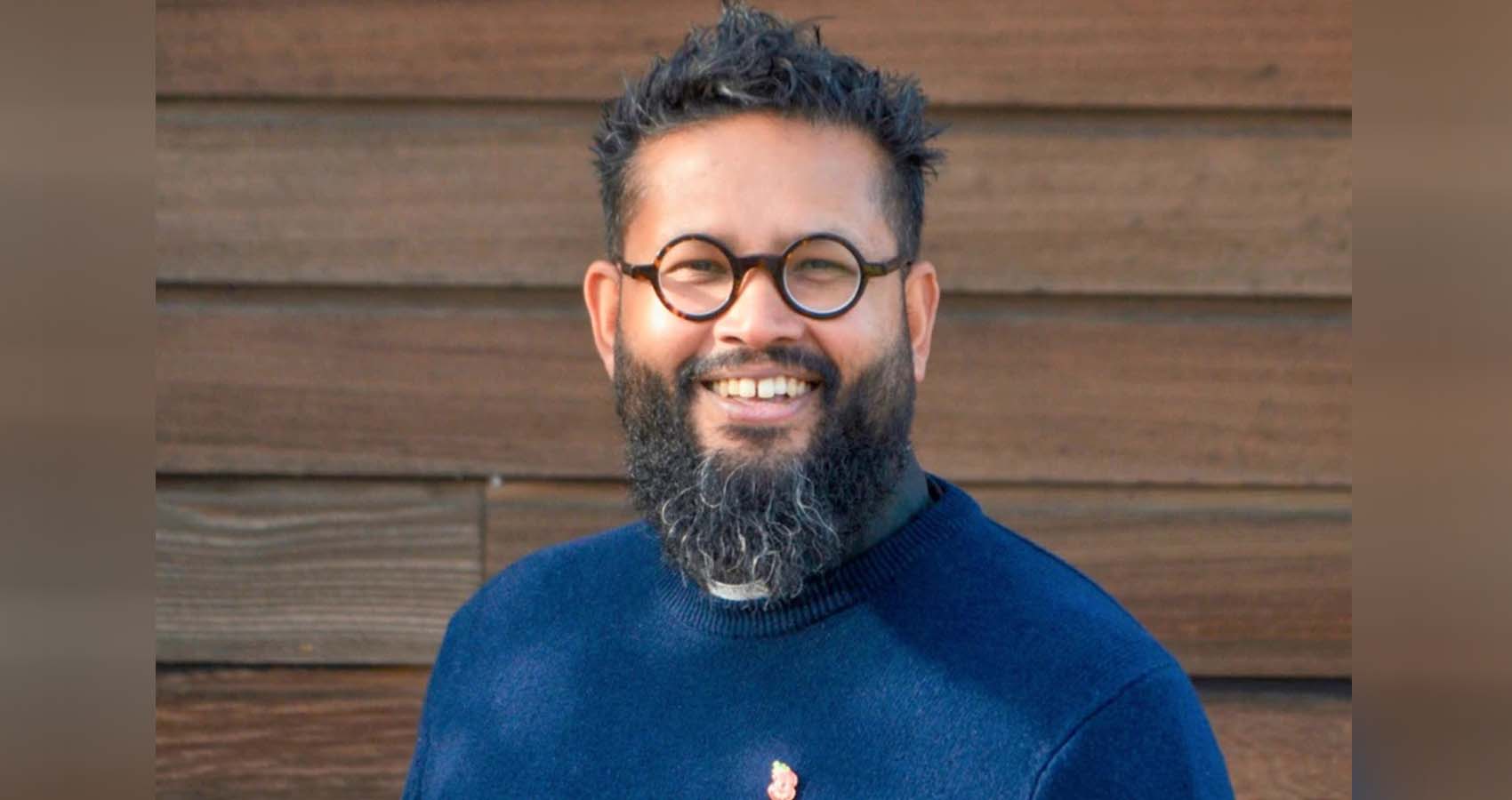
 Known as Saju among friends and family, Rev Muthalaly is currently the Vicar of St Mark’s, Gillingham in the diocese of Rochester in England. Ordained in the Church of England in 2008, he has served at St. Marks for six years after curacies in the dioceses of Blackburn and Carlisle.
Known as Saju among friends and family, Rev Muthalaly is currently the Vicar of St Mark’s, Gillingham in the diocese of Rochester in England. Ordained in the Church of England in 2008, he has served at St. Marks for six years after curacies in the dioceses of Blackburn and Carlisle.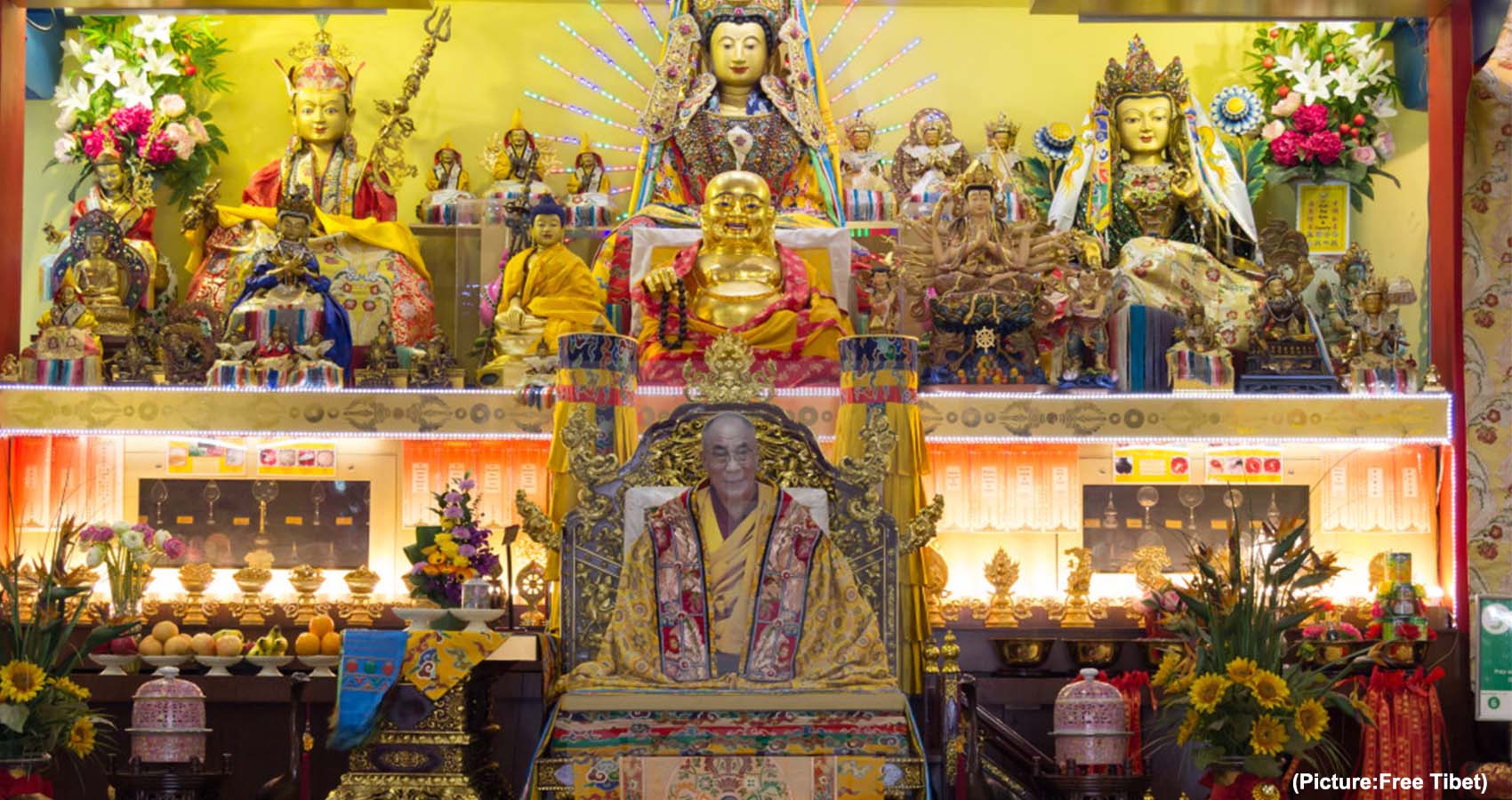
 She also said that the Chinese want everything to be melted into the communist style. “So be it Buddhism or anything they want everything to be changed into them.” Speaking over the so-called freedom in Tibet, the Deputy Speaker said: “If there is any freedom in Tibet, why don’t the Chinese let world media go there and see for themselves. “When they shy away from world media that shows that they are hiding something. Why do they have to give all the time white paper on Tibet? This shows that all is not well there,” she said.
She also said that the Chinese want everything to be melted into the communist style. “So be it Buddhism or anything they want everything to be changed into them.” Speaking over the so-called freedom in Tibet, the Deputy Speaker said: “If there is any freedom in Tibet, why don’t the Chinese let world media go there and see for themselves. “When they shy away from world media that shows that they are hiding something. Why do they have to give all the time white paper on Tibet? This shows that all is not well there,” she said.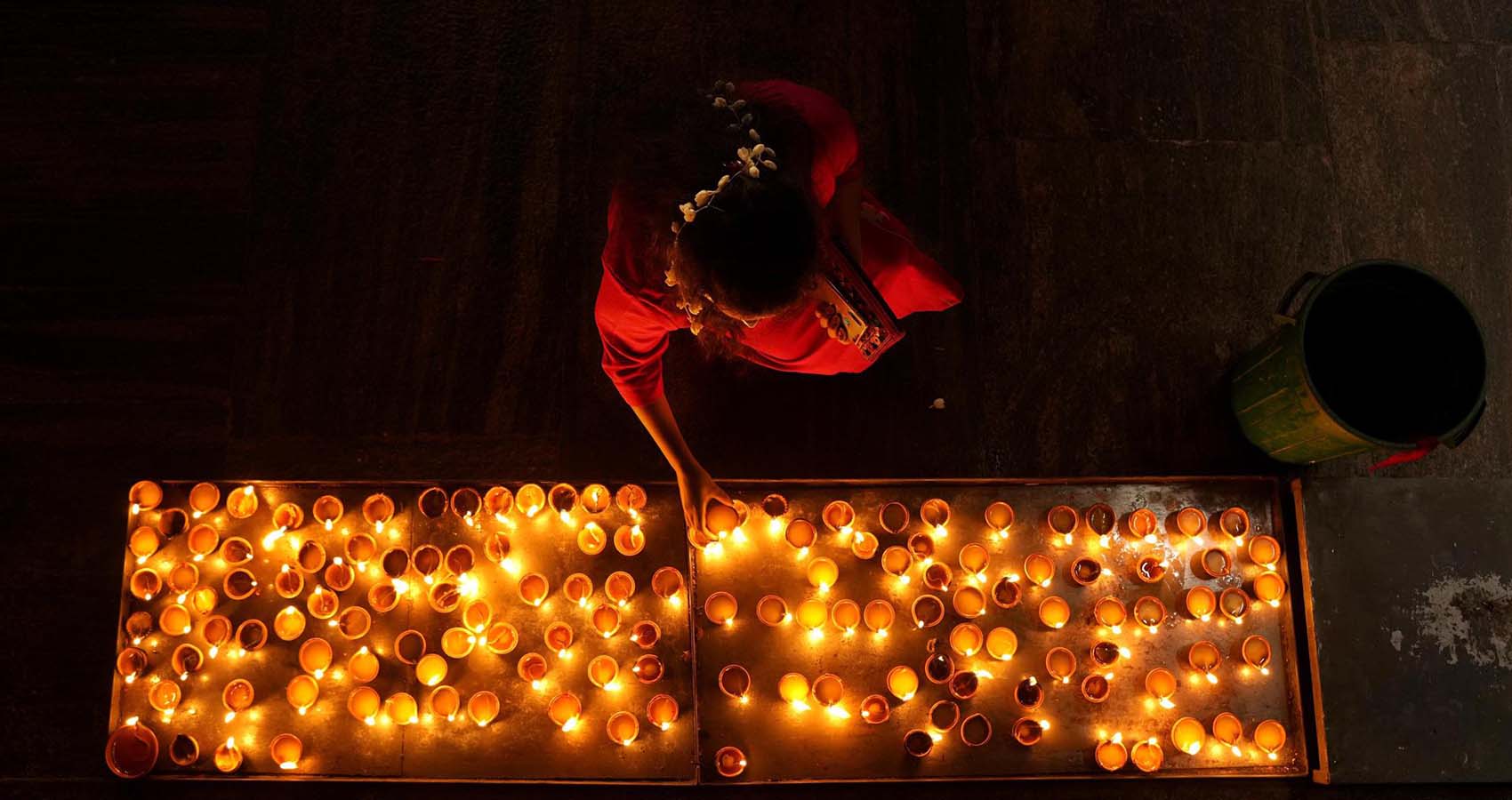
 Indians across the country began celebrating Diwali, the Hindu festival of lights, the triumphant return of Lord ram to Ayodhya after rescuing Sita from Sri Lanka. Diwali is typically celebrated by socializing and exchanging gifts with family and friends. Many light oil lamps or candles to symbolize a victory of light over darkness, and fireworks are set off as part of the celebrations.
Indians across the country began celebrating Diwali, the Hindu festival of lights, the triumphant return of Lord ram to Ayodhya after rescuing Sita from Sri Lanka. Diwali is typically celebrated by socializing and exchanging gifts with family and friends. Many light oil lamps or candles to symbolize a victory of light over darkness, and fireworks are set off as part of the celebrations.
 Those questions and many more like them are completely valid and worthwhile to ask. But until about 10 years ago, my answer was something like, “It is statistically difficult, if not impossible, to answer with any degree of accuracy.” (This is how quantitative scholars talk.) Until the mid-2000s, the data that most researchers had available was limited in ways that made many potential areas of inquiry problematic.
Those questions and many more like them are completely valid and worthwhile to ask. But until about 10 years ago, my answer was something like, “It is statistically difficult, if not impossible, to answer with any degree of accuracy.” (This is how quantitative scholars talk.) Until the mid-2000s, the data that most researchers had available was limited in ways that made many potential areas of inquiry problematic.
 “But one of the things that concern me most about the last few years is another type of pandemic, the invisible pandemic that we are in the midst of. That’s a pandemic of polarization where it feels increasingly people have turned against each other, where they have demonized one another, called each other evil and treated each other as so. That’s a particular kind of darkness,” he said.
“But one of the things that concern me most about the last few years is another type of pandemic, the invisible pandemic that we are in the midst of. That’s a pandemic of polarization where it feels increasingly people have turned against each other, where they have demonized one another, called each other evil and treated each other as so. That’s a particular kind of darkness,” he said.
 The virtual conference showcased the diversity of views within the Hindu world, feature friends of the Hindu community, and address a troubling trend of anti-Hindu sentiment (Hindudvesha or Hinduphobia) which has more recently plagued the Hindu diaspora in the United States, Canada and other parts of the world.
The virtual conference showcased the diversity of views within the Hindu world, feature friends of the Hindu community, and address a troubling trend of anti-Hindu sentiment (Hindudvesha or Hinduphobia) which has more recently plagued the Hindu diaspora in the United States, Canada and other parts of the world.
 The two leaders discussed with Pope Francis issues covering a range of areas of interest, including COVID-19, general global perspectives and maintaining peace and tranquility. After the meeting, Modi tweeted, with pictures of him embracing the Pope, “Had a very warm meeting with Pope Francis. I had the opportunity to discuss a wide range of issues with him and also invited him to visit India.”
The two leaders discussed with Pope Francis issues covering a range of areas of interest, including COVID-19, general global perspectives and maintaining peace and tranquility. After the meeting, Modi tweeted, with pictures of him embracing the Pope, “Had a very warm meeting with Pope Francis. I had the opportunity to discuss a wide range of issues with him and also invited him to visit India.” Pope Francis and the Prime Minister then exchanged gifts. Modi gave the Pope a silver candlestick and a copy of The Climate Climb. Pope Francis gave Modi a bronze plaque with the inscription “the desert will become a garden,” and copies of the pope’s writings, including his encyclicals “Laudato Si’” and “Fratelli Tutti,” as well as the “
Pope Francis and the Prime Minister then exchanged gifts. Modi gave the Pope a silver candlestick and a copy of The Climate Climb. Pope Francis gave Modi a bronze plaque with the inscription “the desert will become a garden,” and copies of the pope’s writings, including his encyclicals “Laudato Si’” and “Fratelli Tutti,” as well as the “ “The meeting should not be seen merely as the one between two country heads, rather it was the head of the largest democracy and an ancient culture of the world meeting the head of the largest religious community in the world. This brings in hope for enhancing human fraternity and caring for the poor, because that’s what Christianity stands for. It would bring in positive efforts in India for a mutual trust and collaboration between people of different religious groups. It would also contribute to the very need for dialogues. We are very delighted that the Prime Minister has opened ways for a Papal visit to India,” the Cardinal Cleemis told the media.
“The meeting should not be seen merely as the one between two country heads, rather it was the head of the largest democracy and an ancient culture of the world meeting the head of the largest religious community in the world. This brings in hope for enhancing human fraternity and caring for the poor, because that’s what Christianity stands for. It would bring in positive efforts in India for a mutual trust and collaboration between people of different religious groups. It would also contribute to the very need for dialogues. We are very delighted that the Prime Minister has opened ways for a Papal visit to India,” the Cardinal Cleemis told the media.
 It took place amid tight security on what was her 70th birthday and was attended by only around 50 guests — mostly family members — due to the Covid-19 pandemic.
It took place amid tight security on what was her 70th birthday and was attended by only around 50 guests — mostly family members — due to the Covid-19 pandemic.
 “Our mission is to ensure clean power supply round the clock at Sri Darbar Sahib, saving 33 per cent of its annual electricity bill,” United Sikh Mission President Rashpal Singh Dhindsa told the media here.
“Our mission is to ensure clean power supply round the clock at Sri Darbar Sahib, saving 33 per cent of its annual electricity bill,” United Sikh Mission President Rashpal Singh Dhindsa told the media here.
 Biden is the 14th U.S. president to meet a pontiff at the Vatican, and the Eternal City is bubbling with speculation over what the two are likely to discuss. The meeting is expected to be cordial, focusing on what the two have in common, but historically the relationship between the Vatican and the Oval Office has often been tense — even occasionally hostile.
Biden is the 14th U.S. president to meet a pontiff at the Vatican, and the Eternal City is bubbling with speculation over what the two are likely to discuss. The meeting is expected to be cordial, focusing on what the two have in common, but historically the relationship between the Vatican and the Oval Office has often been tense — even occasionally hostile. The first encounter between a U.S. president and a pope was also a meeting of two global visions for peace, at times opposing and sometimes aligned. The evolving contours of these visions would go on to define the relationship for a century.
The first encounter between a U.S. president and a pope was also a meeting of two global visions for peace, at times opposing and sometimes aligned. The evolving contours of these visions would go on to define the relationship for a century.
 Cardinal Pietro Parolin, the Vatican’s secretary of state, read the pontiff’s message by video to a special two-day gathering in Milan of the Women’s Forum for the Economy & Society, founded by Publicis public relations to highlight women’s voices in government and diplomacy. The forum is taking place days before the summit in Rome of the heads of state of the world’s largest economies. Before the event,
Cardinal Pietro Parolin, the Vatican’s secretary of state, read the pontiff’s message by video to a special two-day gathering in Milan of the Women’s Forum for the Economy & Society, founded by Publicis public relations to highlight women’s voices in government and diplomacy. The forum is taking place days before the summit in Rome of the heads of state of the world’s largest economies. Before the event, 
 The number of Catholics in the world grew by more than 15 million from 2018 to 2019, according to a census by the Vatican news agency Fides published on Thursday (Oct. 21). “The increase applies to all continents, except Europe,” which saw the number of Catholic faithful decrease by almost 300,000, the survey found.
The number of Catholics in the world grew by more than 15 million from 2018 to 2019, according to a census by the Vatican news agency Fides published on Thursday (Oct. 21). “The increase applies to all continents, except Europe,” which saw the number of Catholic faithful decrease by almost 300,000, the survey found.
 The study, “
The study, “
 The fragility of the democratic process, that is still non-existent in Pakistan, is on full display with this latest failure to protect the most vulnerable members of Pakistan’s society, especially Christians, Hindus and other minorities in Sindh and Punjab.
The fragility of the democratic process, that is still non-existent in Pakistan, is on full display with this latest failure to protect the most vulnerable members of Pakistan’s society, especially Christians, Hindus and other minorities in Sindh and Punjab.
 The first female governor of the great state of New York thanbked the organiZers and leaders of the Indian American community: “I want to just thank Uma SenGupta for all you’ve done for us, and to your family, your mother, and the influence of your late father – you are the reason why we celebrate today, people like you who came to this country humbly, not sure of what the future would bring, but you always had that deep rooted faith in your traditions and to know that Diwali followed you to this country, that you had this light within your heart that you could bring to America and let shine and let all of us gather here in honor of the Goddess Lakshmi. Many of the traditions honor the male gods but this is one that’s dedicated to women so I think this is particularly special as well. Dr. Sumita Sengupta, I want to thank you as well. Randhir Jaiswal, the Consul General, is here as well. Dr. Hari Shukla, I want to thank him for making me feel so welcome, the founder of South Asians of New York.”
The first female governor of the great state of New York thanbked the organiZers and leaders of the Indian American community: “I want to just thank Uma SenGupta for all you’ve done for us, and to your family, your mother, and the influence of your late father – you are the reason why we celebrate today, people like you who came to this country humbly, not sure of what the future would bring, but you always had that deep rooted faith in your traditions and to know that Diwali followed you to this country, that you had this light within your heart that you could bring to America and let shine and let all of us gather here in honor of the Goddess Lakshmi. Many of the traditions honor the male gods but this is one that’s dedicated to women so I think this is particularly special as well. Dr. Sumita Sengupta, I want to thank you as well. Randhir Jaiswal, the Consul General, is here as well. Dr. Hari Shukla, I want to thank him for making me feel so welcome, the founder of South Asians of New York.”
 It has been reported that President Biden will meet with Francis on October 29th. While serving as the U.S. Vice President, Biden had met with Pope Francis for the first time in September 2015, when the pope visited the United States to attend the World Meeting of Families in Philadelphia.
It has been reported that President Biden will meet with Francis on October 29th. While serving as the U.S. Vice President, Biden had met with Pope Francis for the first time in September 2015, when the pope visited the United States to attend the World Meeting of Families in Philadelphia. Francis’ private meeting with Pelosi, a Catholic and a defender of abortion rights, came as American Catholic bishops consider how to press the church’s teaching against abortion while the country’s second Catholic president, Joe Biden, heads an avowedly pro-choice Democratic administration
Francis’ private meeting with Pelosi, a Catholic and a defender of abortion rights, came as American Catholic bishops consider how to press the church’s teaching against abortion while the country’s second Catholic president, Joe Biden, heads an avowedly pro-choice Democratic administration The speaker, in her statement on the meeting, emphasized the pontiff’s support for measures to combat climate change. “His Holiness’s encyclical Laudato Si’ is a powerful challenge to the global community to act decisively on the climate crisis with special attention to the most vulnerable communities.” She went on to praise “the immense moral clarity and urgency that His Holiness continues to bring to the climate crisis.”
The speaker, in her statement on the meeting, emphasized the pontiff’s support for measures to combat climate change. “His Holiness’s encyclical Laudato Si’ is a powerful challenge to the global community to act decisively on the climate crisis with special attention to the most vulnerable communities.” She went on to praise “the immense moral clarity and urgency that His Holiness continues to bring to the climate crisis.”
 Rep. Krishnamoorthi, said he joins the many Hindu faithful in the United States in recognizing October as Hindu Heritage Month. Several Hindu organizations in the U.S., including Vishwa Hindu Parishad of America (VHPA), have declared October as Hindu Heritage Month, and several states including New Jersey, Delaware, Ohio, Texas, Florida, Nevada, North Carolina, Minnesota, Virginia and Massachusetts have proclaimed October as Hindu Heritage Month, according to the website hindumonth.org, as have several cities like Dallas, TX, and La Palma, CA.
Rep. Krishnamoorthi, said he joins the many Hindu faithful in the United States in recognizing October as Hindu Heritage Month. Several Hindu organizations in the U.S., including Vishwa Hindu Parishad of America (VHPA), have declared October as Hindu Heritage Month, and several states including New Jersey, Delaware, Ohio, Texas, Florida, Nevada, North Carolina, Minnesota, Virginia and Massachusetts have proclaimed October as Hindu Heritage Month, according to the website hindumonth.org, as have several cities like Dallas, TX, and La Palma, CA.
 “We are recognizing the importance of the role of young people,” the group’s secretary-general, Azza Karam, said in an interview with Religion News Service earlier this week. “It’s essential that they have a voice.” Founded in 1970 as a forum for fostering dialogue between members of different faiths, Religions for Peace normally draws more than 1,000 delegates from around the world. This year, coronavirus restrictions restricted the gathering to just 130 in-person participants at the event. Organizers said that more than 1,700 tuned in via video link.
“We are recognizing the importance of the role of young people,” the group’s secretary-general, Azza Karam, said in an interview with Religion News Service earlier this week. “It’s essential that they have a voice.” Founded in 1970 as a forum for fostering dialogue between members of different faiths, Religions for Peace normally draws more than 1,000 delegates from around the world. This year, coronavirus restrictions restricted the gathering to just 130 in-person participants at the event. Organizers said that more than 1,700 tuned in via video link.
 Since then, Pandher, who lives in a remote cabin in the Yukon, has become an international YouTube sensation. He views the dance videos as a way to spread positivity and cross-cultural understanding — a calling he’s especially taken seriously since March 2020. A March 2, 2021, video of Pandher, with his signature animated grin, dancing on a frozen lake after getting his first dose of the COVID vaccine has more than 3 million views on Twitter. Collectively, his videos have been watched more than 50 million times. In September, he was featured on YouTube billboards across Canada that read, “Taught people to dance. Moved the whole country.”
Since then, Pandher, who lives in a remote cabin in the Yukon, has become an international YouTube sensation. He views the dance videos as a way to spread positivity and cross-cultural understanding — a calling he’s especially taken seriously since March 2020. A March 2, 2021, video of Pandher, with his signature animated grin, dancing on a frozen lake after getting his first dose of the COVID vaccine has more than 3 million views on Twitter. Collectively, his videos have been watched more than 50 million times. In September, he was featured on YouTube billboards across Canada that read, “Taught people to dance. Moved the whole country.”
 According to the Library of Congress, Jefferson’s Quran will be the “first object on display after guests emerge from a sound and light experience that showcases the U.S. founding principles, particularly its innovations. Jefferson and the Quran are the first example of those goals.” The pavilion will also feature a SpaceX rocket and rock taken from the Moon during a NASA mission.
According to the Library of Congress, Jefferson’s Quran will be the “first object on display after guests emerge from a sound and light experience that showcases the U.S. founding principles, particularly its innovations. Jefferson and the Quran are the first example of those goals.” The pavilion will also feature a SpaceX rocket and rock taken from the Moon during a NASA mission.
 According to a poll conducted by the Pew Research Center last month (Sept. 20-26), the vast majority of Catholics (83%) hold a favorable view of Francis, compared with just 14% who view him unfavorably. Those views are virtually unchanged since March, when 82% viewed the pope favorably. In fact, Francis’ current favorability rating among Catholics is almost identical to when Pew first polled on the subject in March 2013 (84%), although, researchers were careful to note, Pew shifted to an online surveying method in 2020 — a departure from their accustomed telephone calls.
According to a poll conducted by the Pew Research Center last month (Sept. 20-26), the vast majority of Catholics (83%) hold a favorable view of Francis, compared with just 14% who view him unfavorably. Those views are virtually unchanged since March, when 82% viewed the pope favorably. In fact, Francis’ current favorability rating among Catholics is almost identical to when Pew first polled on the subject in March 2013 (84%), although, researchers were careful to note, Pew shifted to an online surveying method in 2020 — a departure from their accustomed telephone calls.
 A young Dalit girl, with the dream of becoming a dancer in her eyes, and her soul mate Bheem leave their caste-ridden existence behind and relocate to Bombay. They have learnt the hard way that the preaching of oneness by their religion does not work in the real world. Drawing its title, “Two and a half Rivers” (Niyogi Books), from the historicity of the Partition which has left in its wake only half the rivers to India from the land of the five rivers, Anirudh Kala’s novel offers a poignant commentary on the turbulent connection between religion and terrorism.
A young Dalit girl, with the dream of becoming a dancer in her eyes, and her soul mate Bheem leave their caste-ridden existence behind and relocate to Bombay. They have learnt the hard way that the preaching of oneness by their religion does not work in the real world. Drawing its title, “Two and a half Rivers” (Niyogi Books), from the historicity of the Partition which has left in its wake only half the rivers to India from the land of the five rivers, Anirudh Kala’s novel offers a poignant commentary on the turbulent connection between religion and terrorism.

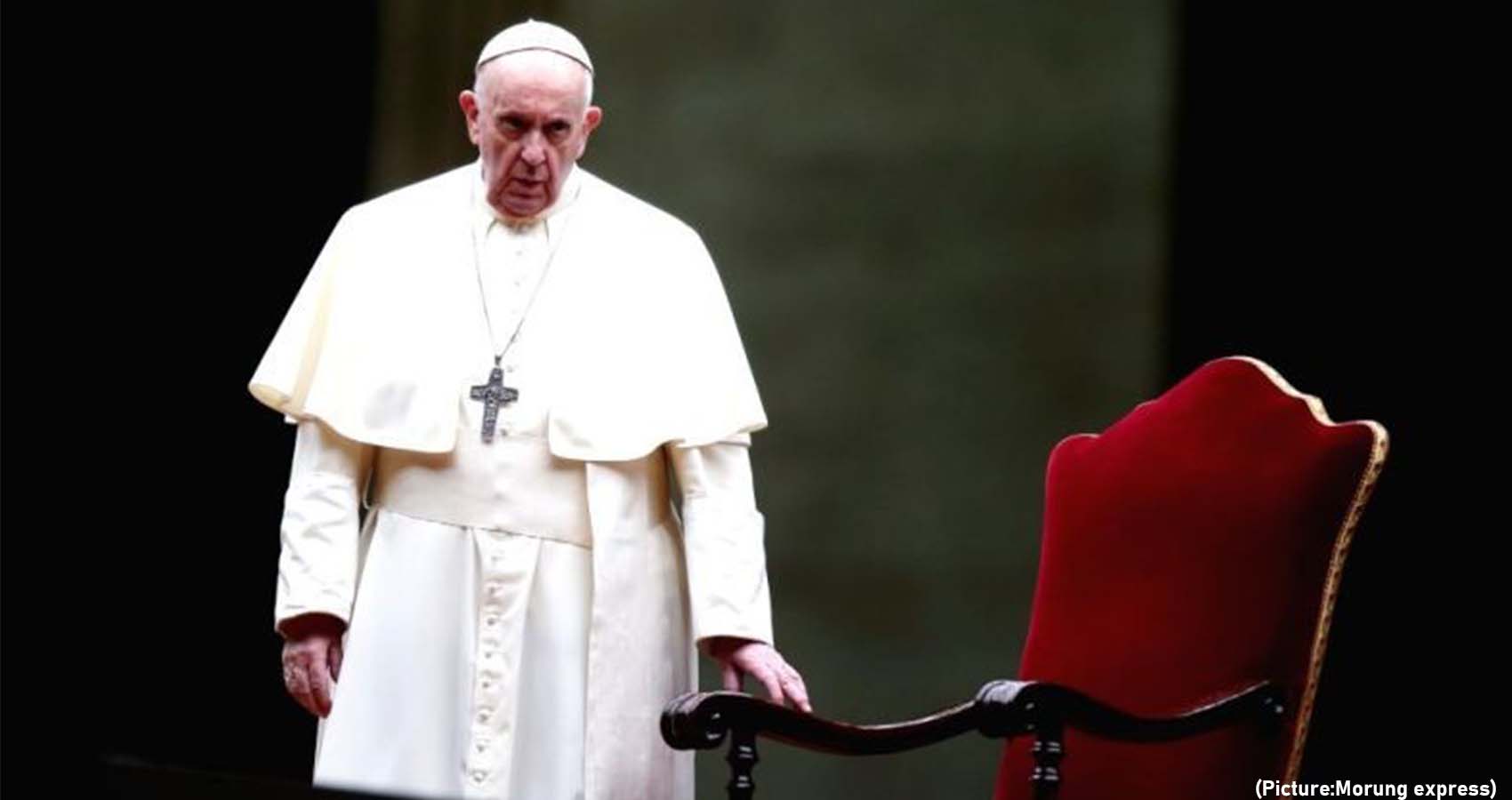
 When a Jesuit in Slovakia asked Pope Francis “How are you?,”the pope stunned them with his answer: “Still alive, even though some people wanted me to die. There were even meetings between prelates who thought the pope’s condition was more serious than the official version. They were preparing for the conclave,” Pope Francis said.
When a Jesuit in Slovakia asked Pope Francis “How are you?,”the pope stunned them with his answer: “Still alive, even though some people wanted me to die. There were even meetings between prelates who thought the pope’s condition was more serious than the official version. They were preparing for the conclave,” Pope Francis said.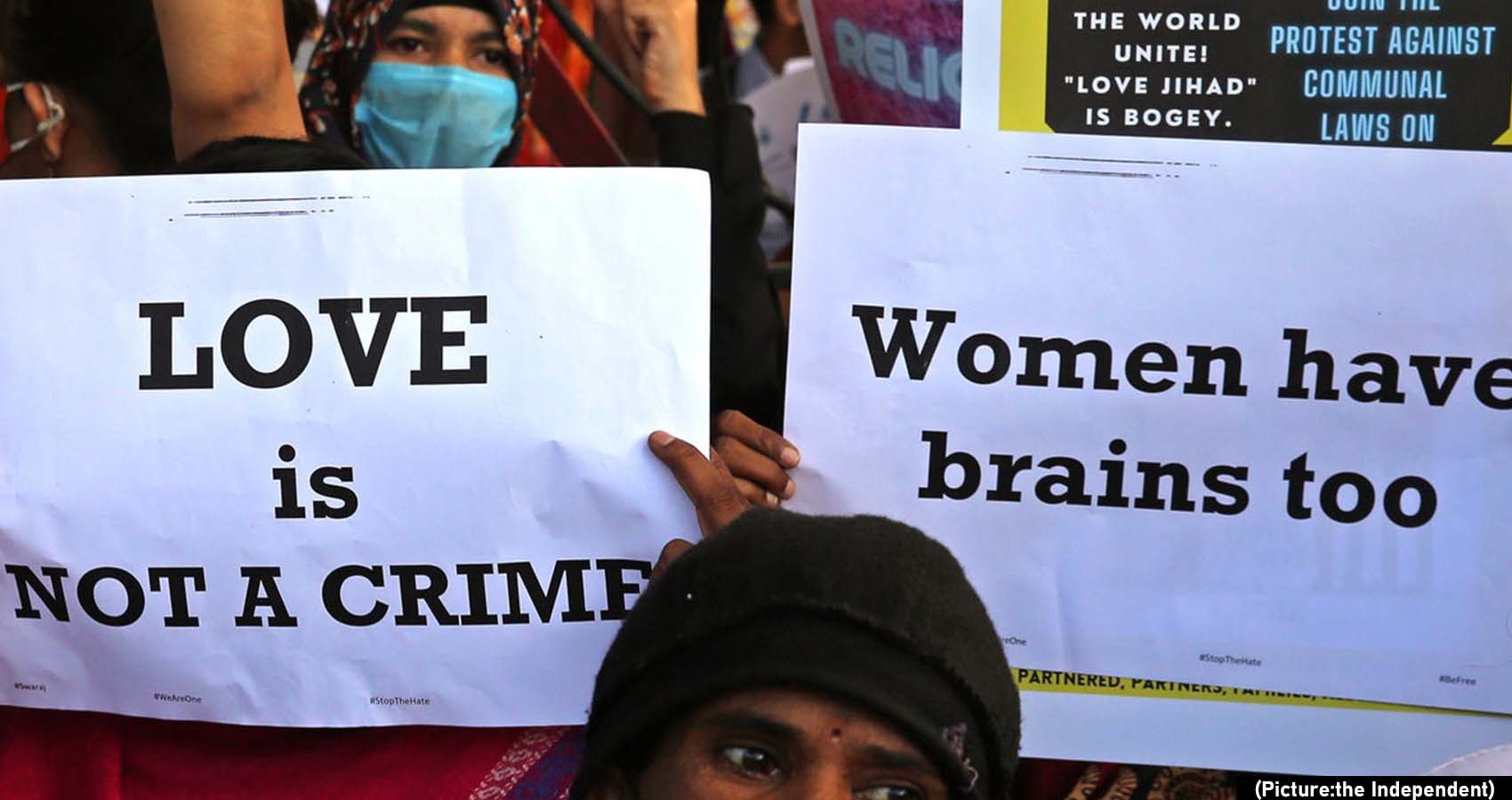
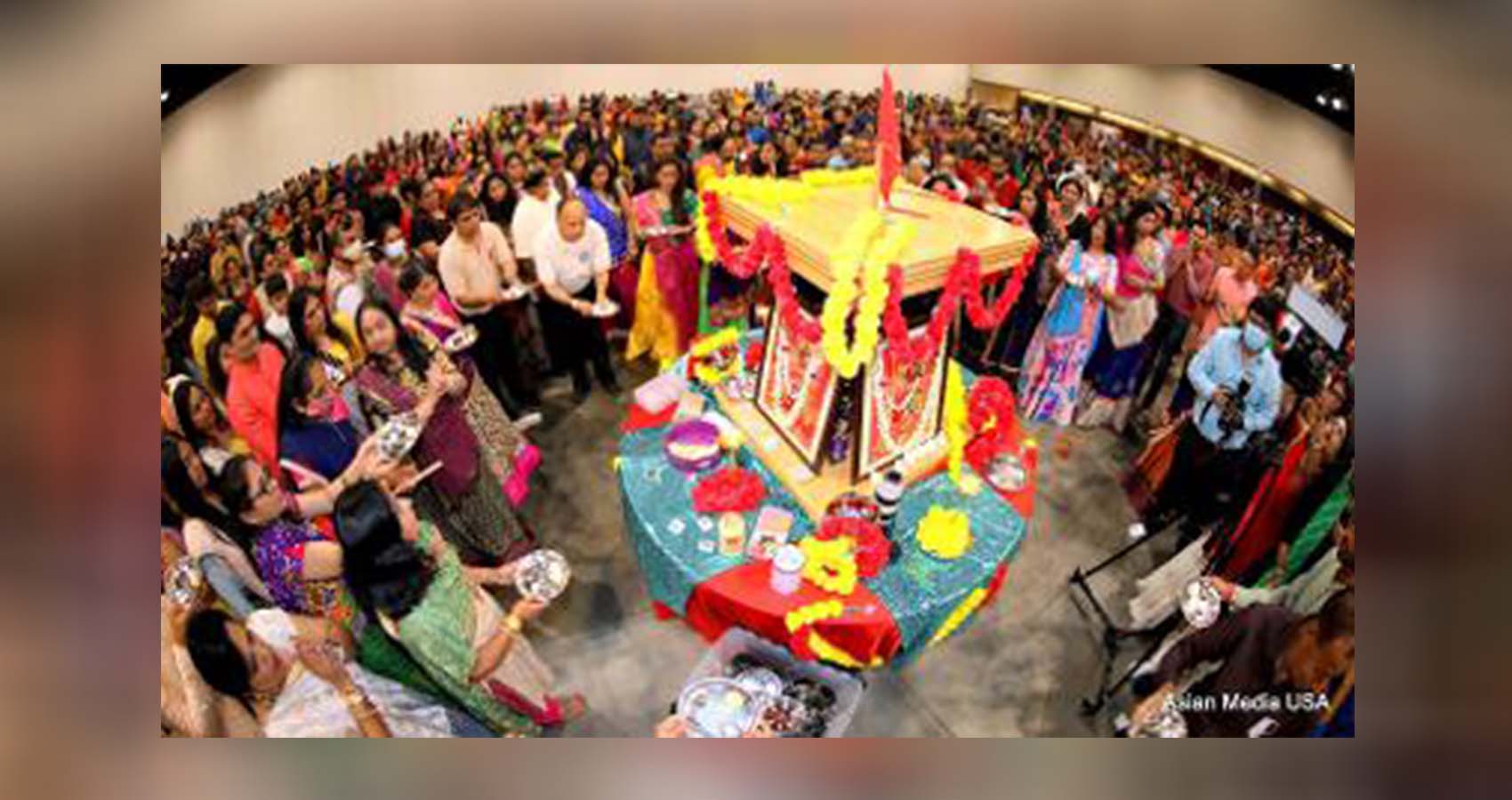
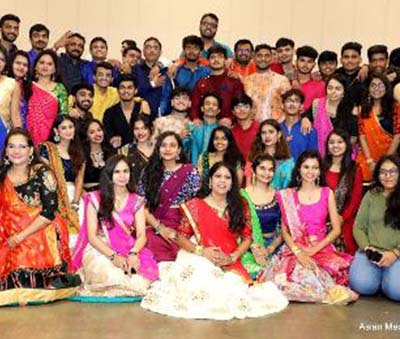 “The best karma is not the one that has a good result, the best karma is the one that has the best purpose.” Shri Jalaram Mandir follows the similar path of public service, with all its revenue from such programs going to the contribution of the temple. The selfless and free service of Shri Jalaram Mandir, its managing committee and all the volunteers was as excellent as ever with beautiful sound system lighting, security, photography, videography and booths for different businesses. There was free entry for children below 10 years of age, free parking, tea and snacks at reasonable prices, provision of water, cold drinks and free covid testing. The contribution of donors from different fields as sponsors was commendable. All the devotees who came were also very supportive and co-operative.
“The best karma is not the one that has a good result, the best karma is the one that has the best purpose.” Shri Jalaram Mandir follows the similar path of public service, with all its revenue from such programs going to the contribution of the temple. The selfless and free service of Shri Jalaram Mandir, its managing committee and all the volunteers was as excellent as ever with beautiful sound system lighting, security, photography, videography and booths for different businesses. There was free entry for children below 10 years of age, free parking, tea and snacks at reasonable prices, provision of water, cold drinks and free covid testing. The contribution of donors from different fields as sponsors was commendable. All the devotees who came were also very supportive and co-operative.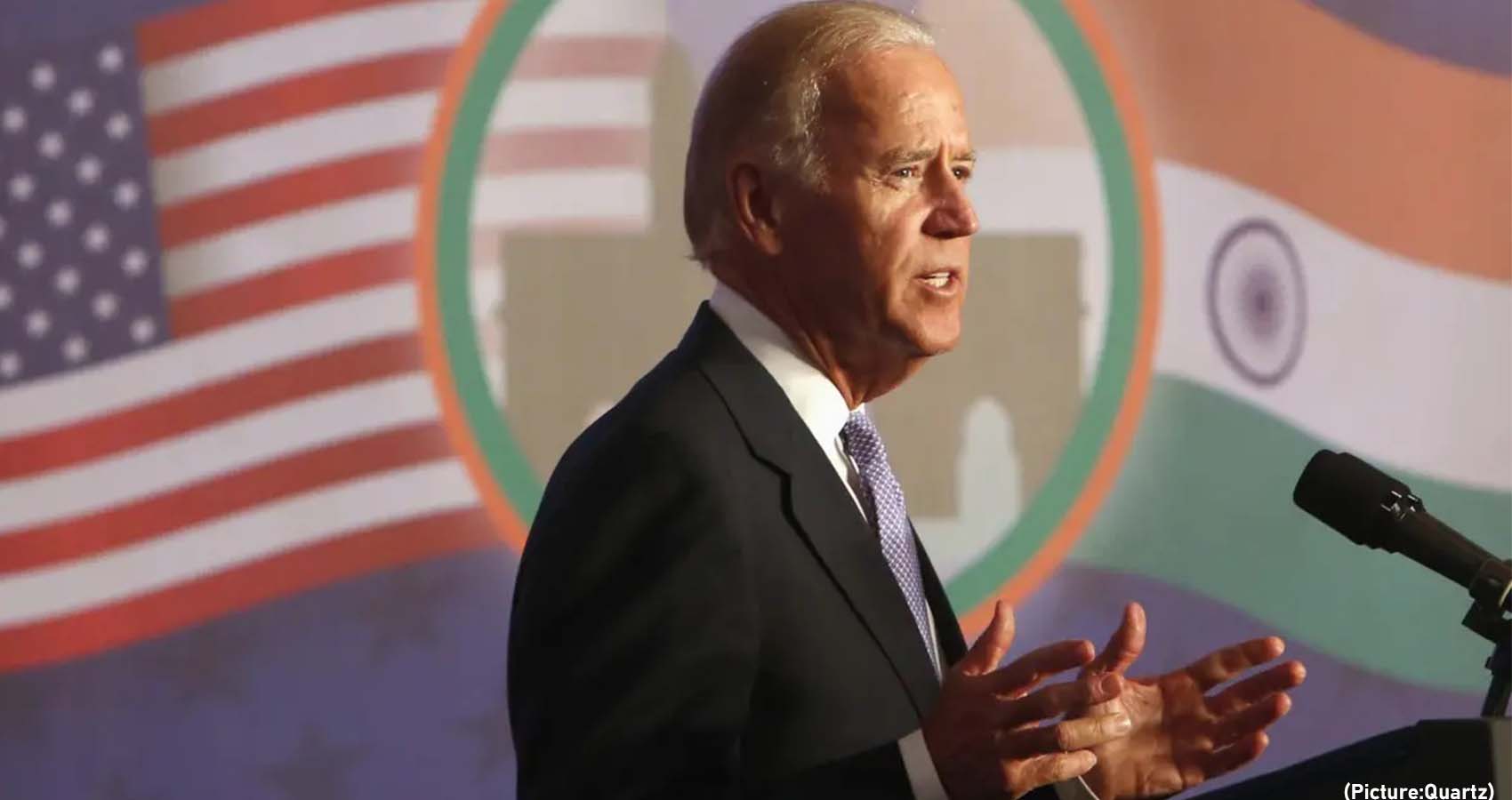
 FIACONA has urged the President Biden and Vice President Harris “to be more direct and explicit in expressing that India should not and could not afford to go down the path of religious nationalism at the expense of pluralist democratic principles that values Christian and other religious segments of the population. Should Modi and his party choose to continue down this path of religious nationalism despite warnings from leaders of the free world, there is no reason to assume that India would end up any better than Pakistan, Sri Lanka, or Myanmar in that region, thus jeopardizing the stability and commerce in the Indo-Pacific region.”
FIACONA has urged the President Biden and Vice President Harris “to be more direct and explicit in expressing that India should not and could not afford to go down the path of religious nationalism at the expense of pluralist democratic principles that values Christian and other religious segments of the population. Should Modi and his party choose to continue down this path of religious nationalism despite warnings from leaders of the free world, there is no reason to assume that India would end up any better than Pakistan, Sri Lanka, or Myanmar in that region, thus jeopardizing the stability and commerce in the Indo-Pacific region.”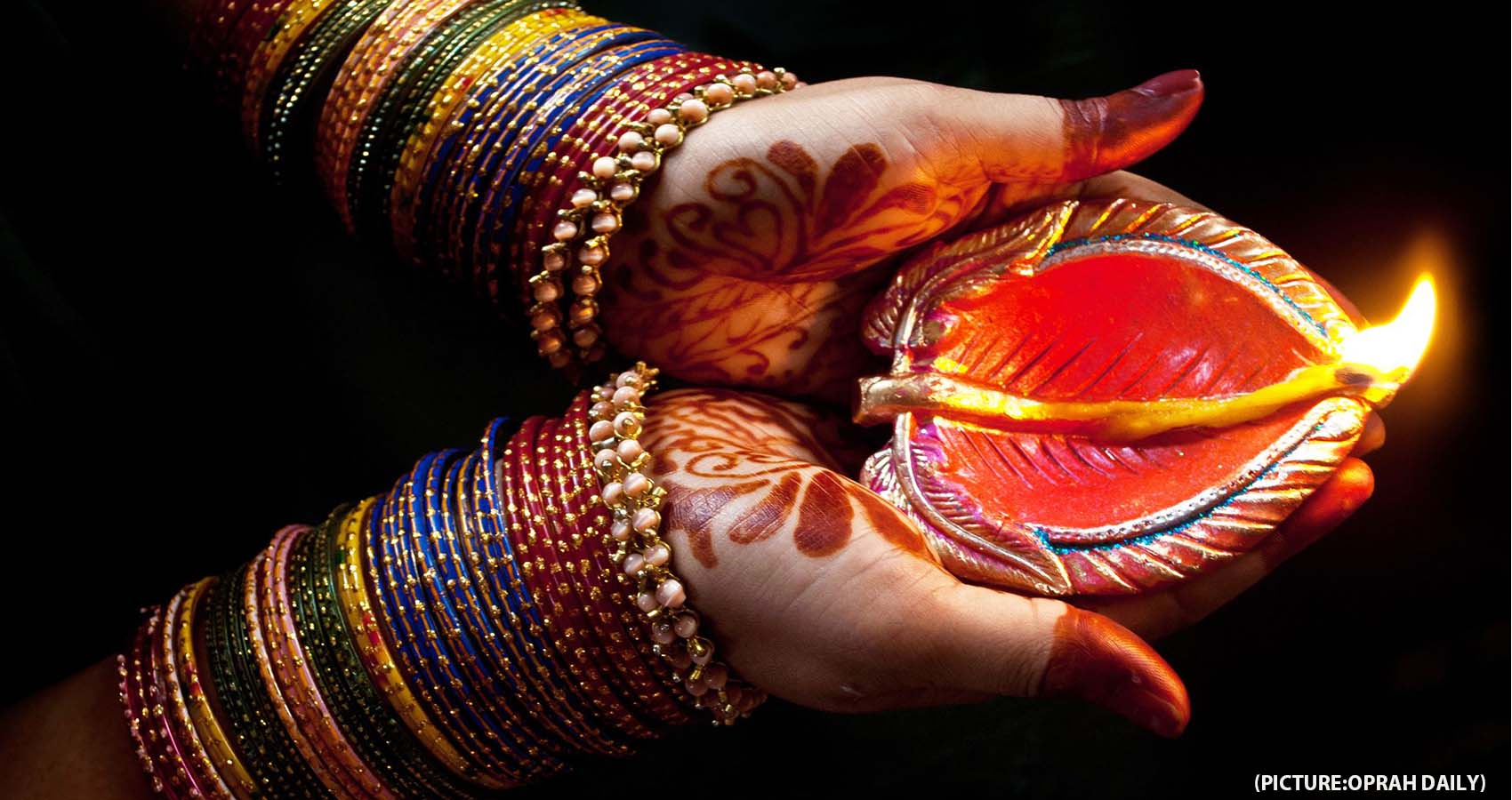

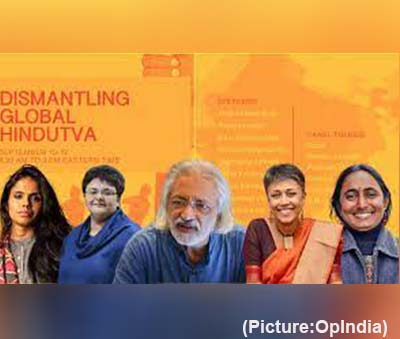 The organizers claim, Hindutva Is Not Hinduism. In a statement signed by nearly 1,000 leading professionals and academicians stated: “As scholars and members of academic communities around the world, we strongly condemn the campaign of harassment and intimidation against the Dismantling Global Hindutva conference, and stand in solidarity with the 49+ universities and 60+ departments and centers sponsoring the event.” They opposed the “besieging of cosponsoring institutions by political extremists who have disingenuously sought to smear the conference as “Hinduphobic” or “anti-Hindu.” We firmly reject these misleading attempts to conflate Hindutva and Hinduism.”
The organizers claim, Hindutva Is Not Hinduism. In a statement signed by nearly 1,000 leading professionals and academicians stated: “As scholars and members of academic communities around the world, we strongly condemn the campaign of harassment and intimidation against the Dismantling Global Hindutva conference, and stand in solidarity with the 49+ universities and 60+ departments and centers sponsoring the event.” They opposed the “besieging of cosponsoring institutions by political extremists who have disingenuously sought to smear the conference as “Hinduphobic” or “anti-Hindu.” We firmly reject these misleading attempts to conflate Hindutva and Hinduism.”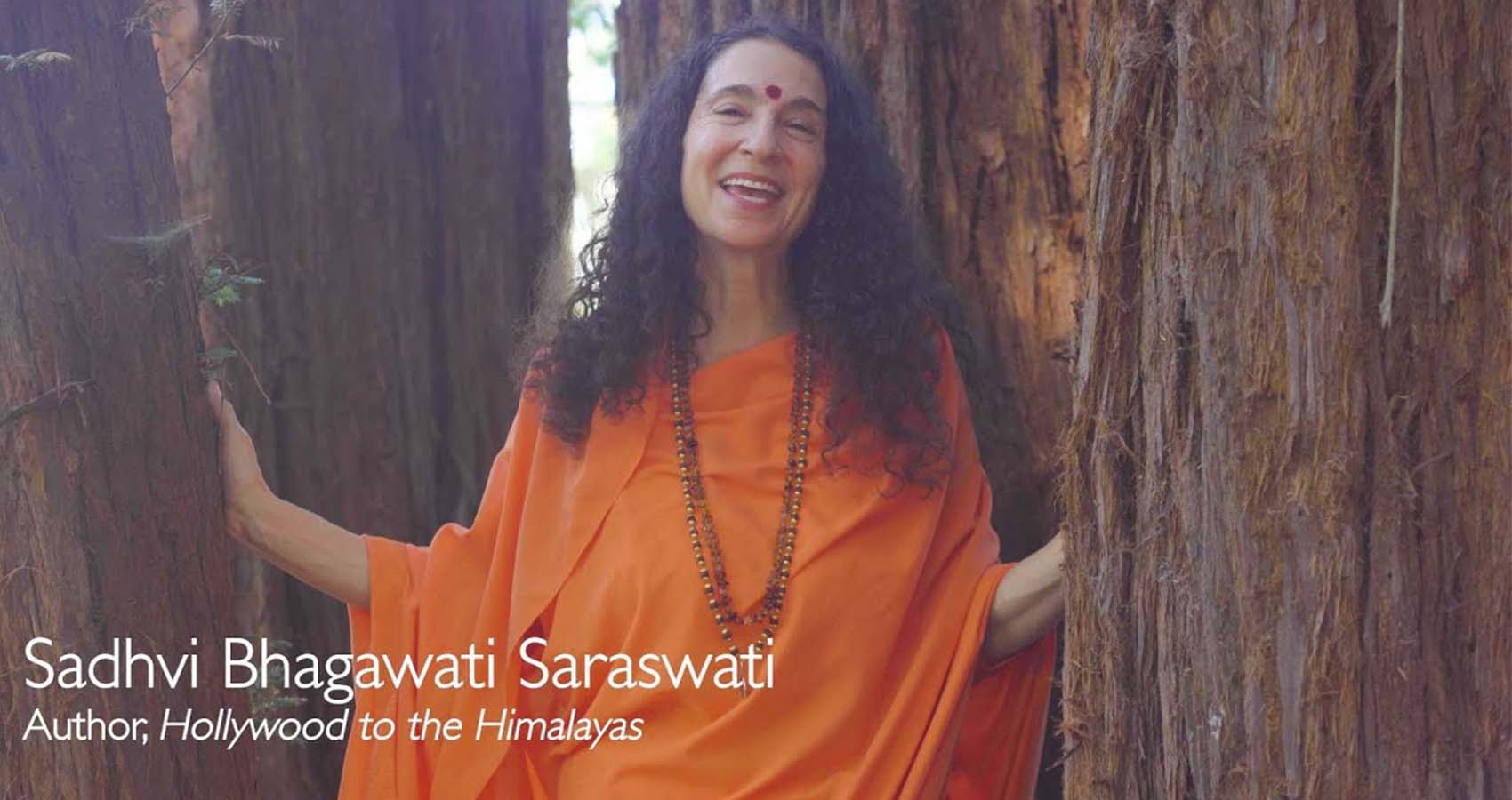
 The event was attended, among others, by the Secretary-General, Religions for Peace Prof. Azza Karam; secretary-general, Global Interfaith WASH Alliance, Parmarth Niketan; Special Adviser to the Secretary-General of the UN and head of the United Nations Office of Genocide Prevention, Alice Nderitu; President of Parmarth Niketan and founder and chair of Global Interfaith WASH Alliance, Swami Chidanand Saraswati; India’s Minister of State for External Affairs & Culture, Meenakshi Lekhi; Consul General of India to New York Randhir Jaiswal; President/Founder of the International Academy for Multicultural Cooperation, President of the Light of Awareness International Spiritual Family Audrey Kitagawa, JD; Padma Shri Dr. Sudhir Parikh, chairman of Parikh Worldwide Media and ITV Gold; and Jonathan Granoff, president, Global Security Institute.
The event was attended, among others, by the Secretary-General, Religions for Peace Prof. Azza Karam; secretary-general, Global Interfaith WASH Alliance, Parmarth Niketan; Special Adviser to the Secretary-General of the UN and head of the United Nations Office of Genocide Prevention, Alice Nderitu; President of Parmarth Niketan and founder and chair of Global Interfaith WASH Alliance, Swami Chidanand Saraswati; India’s Minister of State for External Affairs & Culture, Meenakshi Lekhi; Consul General of India to New York Randhir Jaiswal; President/Founder of the International Academy for Multicultural Cooperation, President of the Light of Awareness International Spiritual Family Audrey Kitagawa, JD; Padma Shri Dr. Sudhir Parikh, chairman of Parikh Worldwide Media and ITV Gold; and Jonathan Granoff, president, Global Security Institute. After the ceremonial lighting of the lamp and recitation of auspicious prayers, Sadhvi Bhagawatiji presented each of the dignitaries on the dais a copy of Hollywood to the Himalayas. Minister of State for External Affairs and Culture Meenakshi Lekhi praised the Indian-American community for its devotion to the well-being of India. “Let me say at the outset how proud I am of all of you. We, in India, are extremely grateful to our diaspora which carries on all the traditional functions and are the ‘Ambassadors of India’ while the formal Ambassadors have formal jobs to do. But the ‘informal ambassadors’ carry the job far, far, far better and reach out to people,” Lekhi said. “The values that India stands for are exhibited by people who are away from their homes, but carry their hearts on their sleeves and always believe in and stand up for Mother India,,” she added.
After the ceremonial lighting of the lamp and recitation of auspicious prayers, Sadhvi Bhagawatiji presented each of the dignitaries on the dais a copy of Hollywood to the Himalayas. Minister of State for External Affairs and Culture Meenakshi Lekhi praised the Indian-American community for its devotion to the well-being of India. “Let me say at the outset how proud I am of all of you. We, in India, are extremely grateful to our diaspora which carries on all the traditional functions and are the ‘Ambassadors of India’ while the formal Ambassadors have formal jobs to do. But the ‘informal ambassadors’ carry the job far, far, far better and reach out to people,” Lekhi said. “The values that India stands for are exhibited by people who are away from their homes, but carry their hearts on their sleeves and always believe in and stand up for Mother India,,” she added.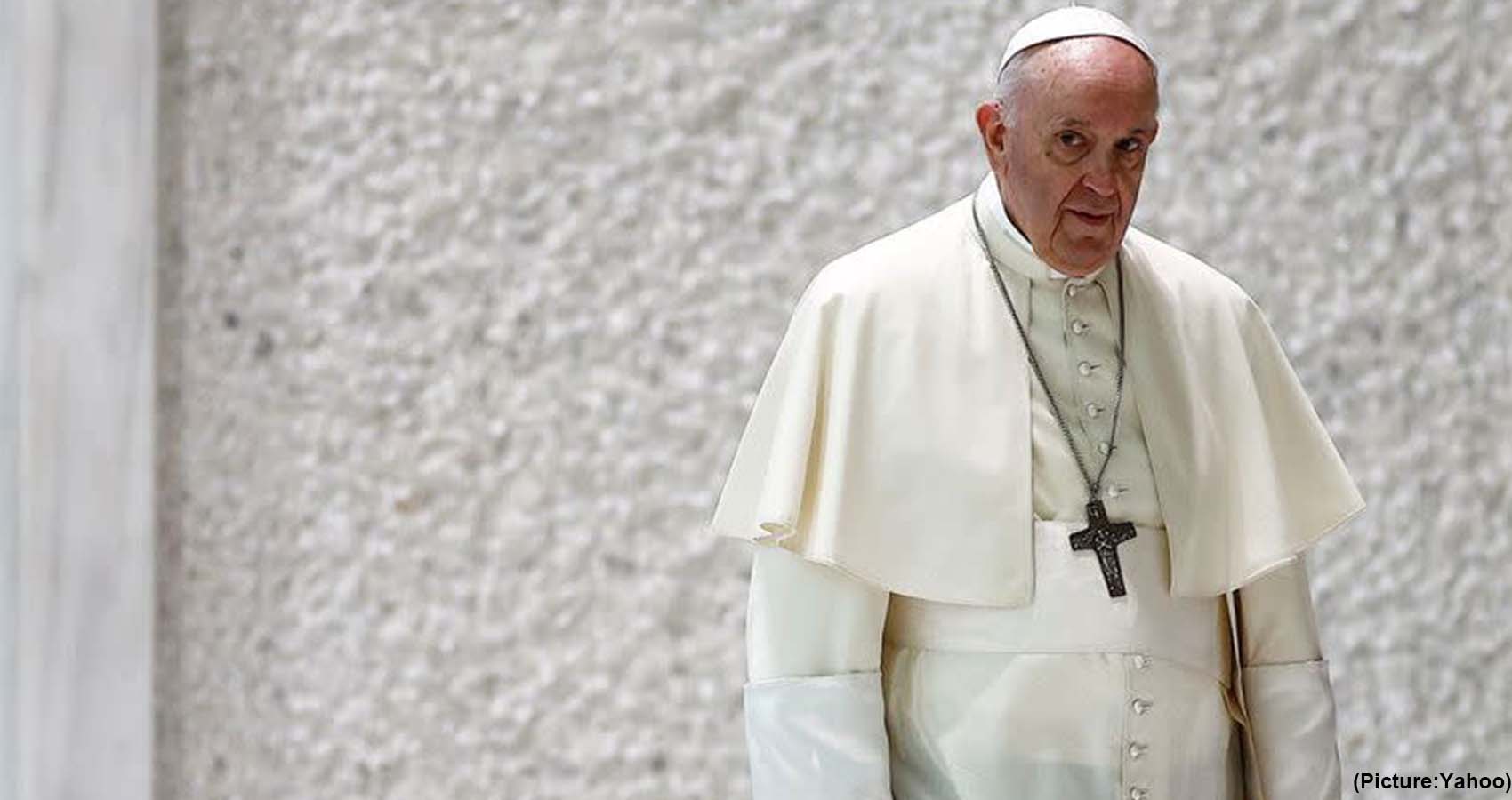
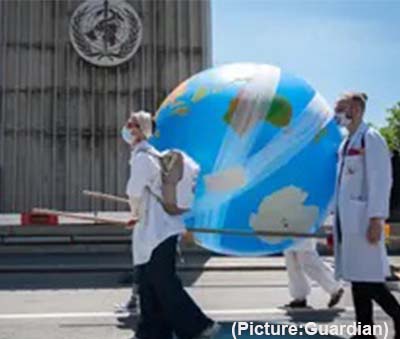 Their statement says: “Today, we are paying the price [of the climate emergency] … Tomorrow could be worse.” It concludes: “This is a critical moment. Our children’s future and the future of our common home depend on it.” The faith leaders have asked people to pray for world leaders ahead of Cop26, the global environment summit in Glasgow this autumn, and for individuals to make “meaningful sacrifices for the sake of the planet, working together and taking responsibility for how we use our resources”.
Their statement says: “Today, we are paying the price [of the climate emergency] … Tomorrow could be worse.” It concludes: “This is a critical moment. Our children’s future and the future of our common home depend on it.” The faith leaders have asked people to pray for world leaders ahead of Cop26, the global environment summit in Glasgow this autumn, and for individuals to make “meaningful sacrifices for the sake of the planet, working together and taking responsibility for how we use our resources”.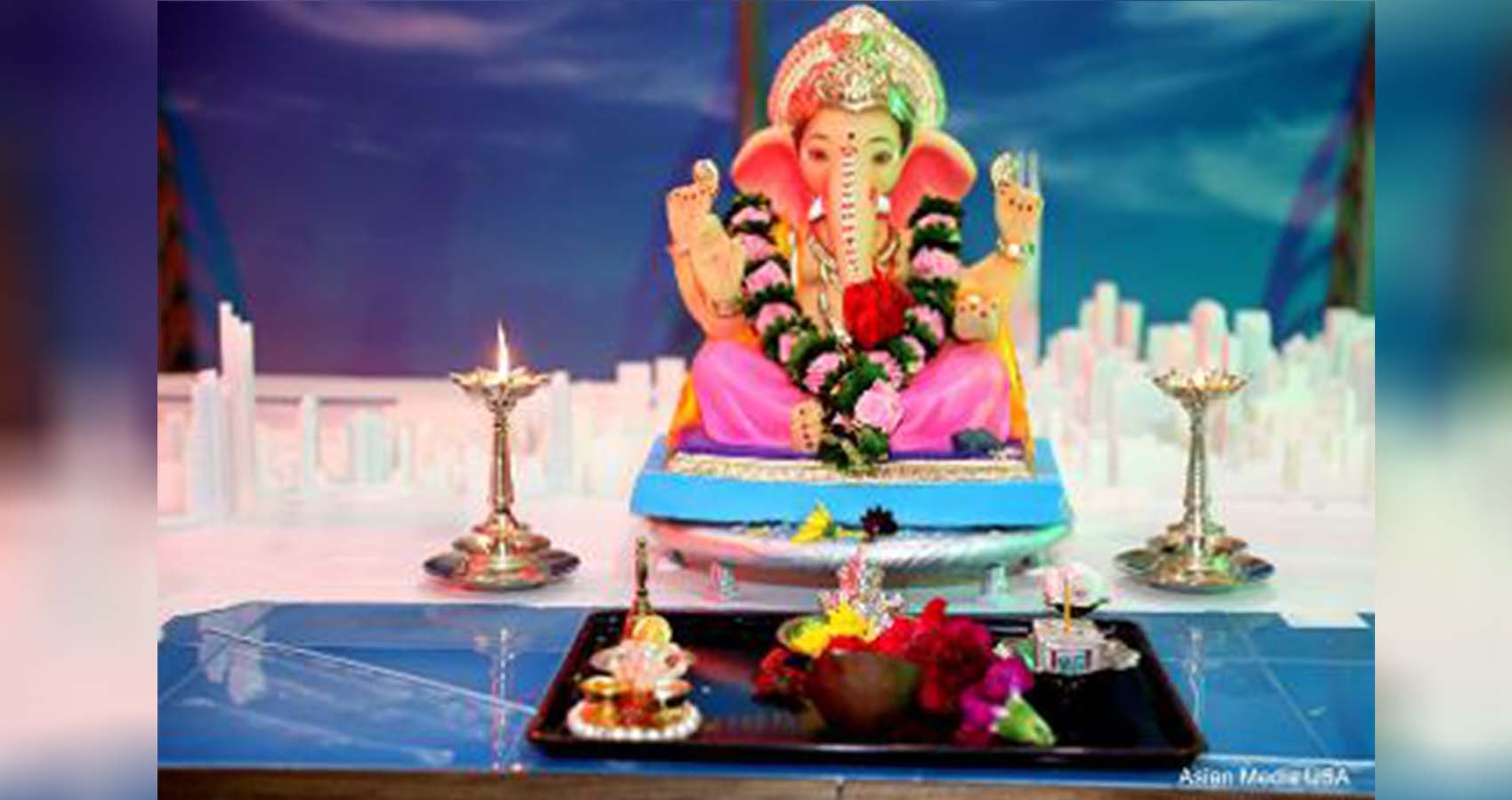
 First, Mr. Joshi looked through Google Earth block by block. Then, he downloaded each block and with various software’s, reconstructed each block for it to be printed. On average, each block required 20+ hours of work. This model featured the Willis Tower, the tallest building in Chicago downtown, requiring 27+ hours of 3D printing. In addition, the model included other Chicago land favorites like the John Hancock building, Solder Field, and the Chicago River. This relentless work day and night through these past 9 months left all Chicagoans speechless. We all can’t wait to see the project he creates next!
First, Mr. Joshi looked through Google Earth block by block. Then, he downloaded each block and with various software’s, reconstructed each block for it to be printed. On average, each block required 20+ hours of work. This model featured the Willis Tower, the tallest building in Chicago downtown, requiring 27+ hours of 3D printing. In addition, the model included other Chicago land favorites like the John Hancock building, Solder Field, and the Chicago River. This relentless work day and night through these past 9 months left all Chicagoans speechless. We all can’t wait to see the project he creates next!
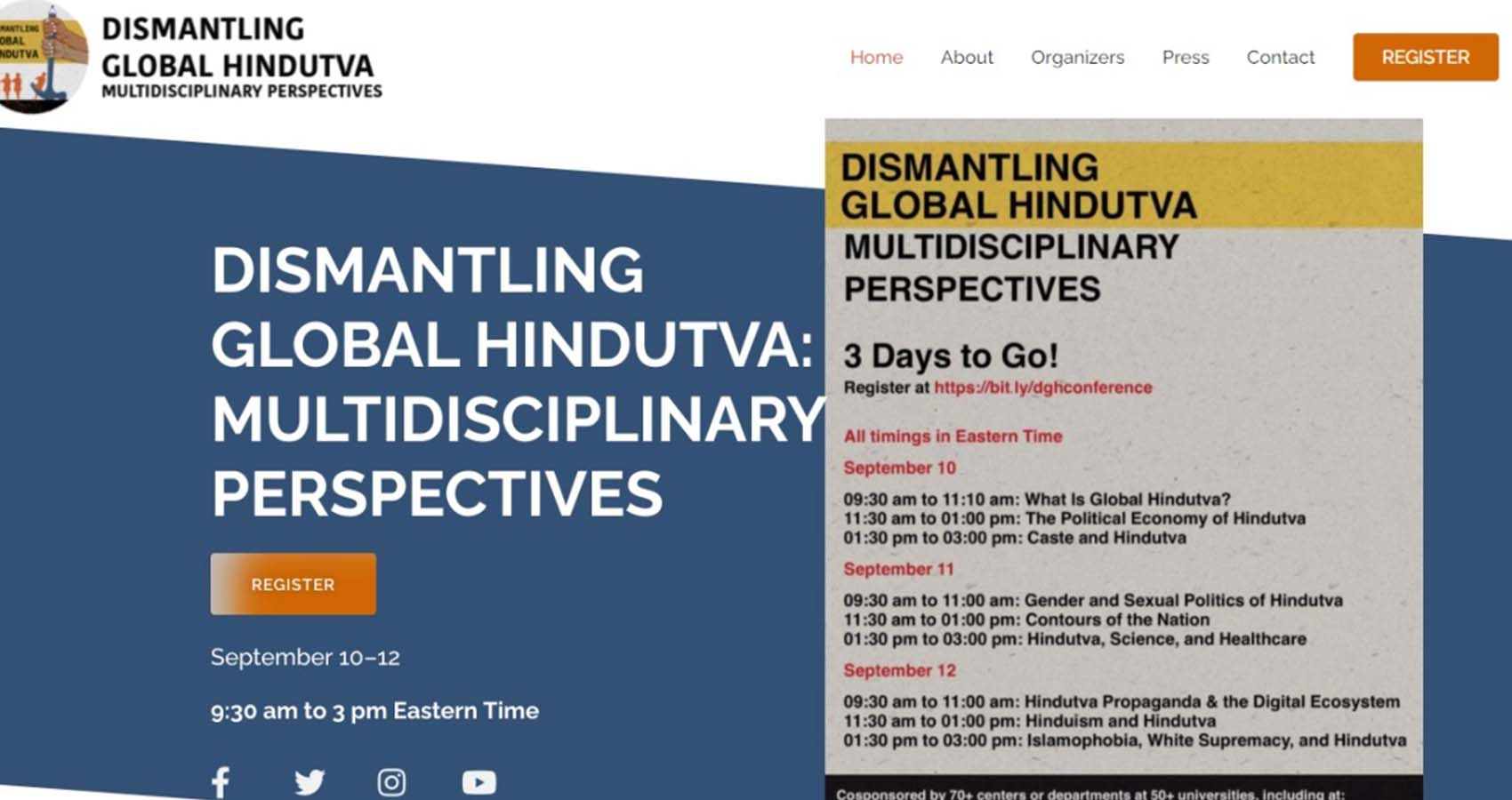
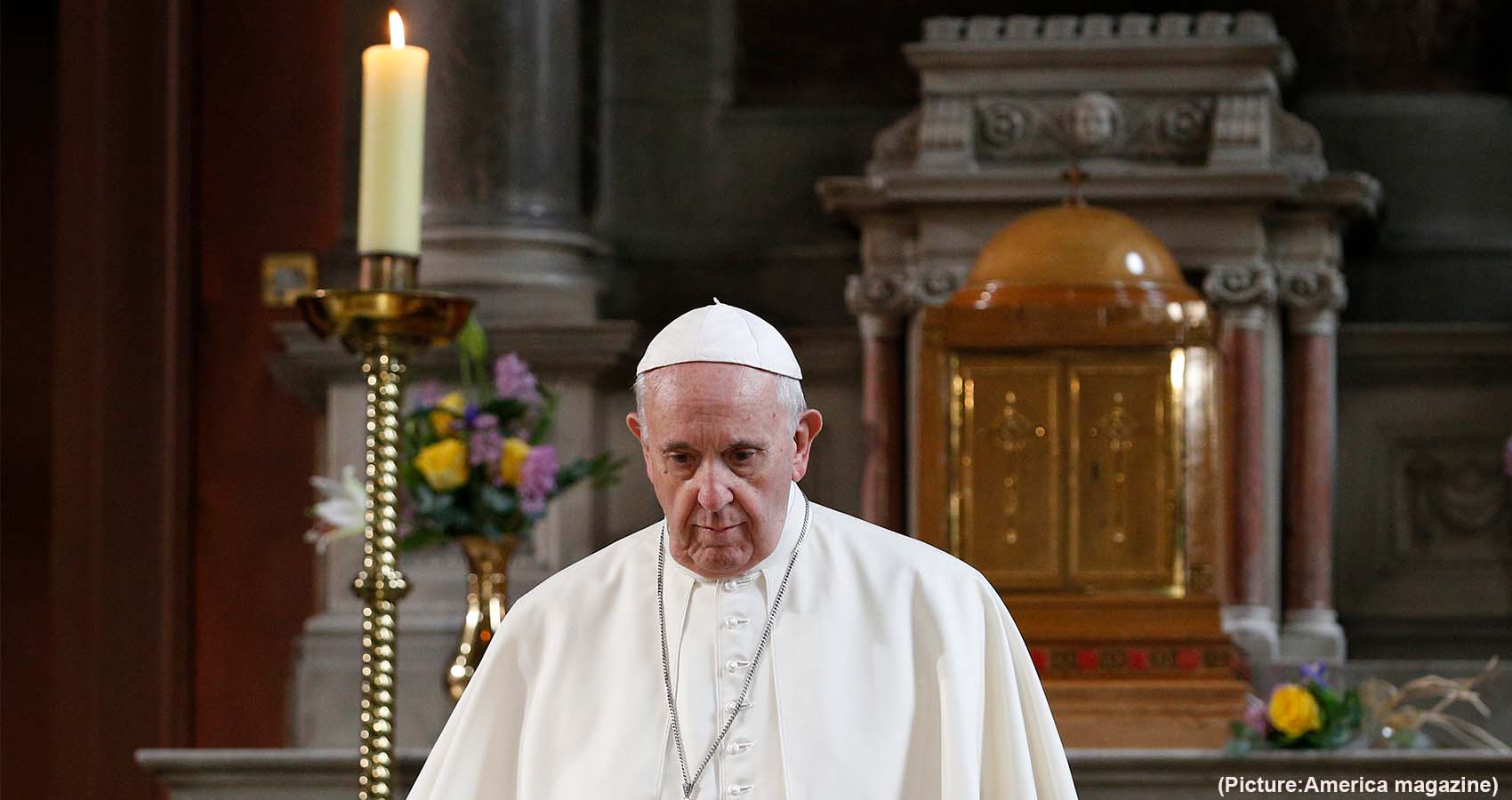
 In an hour-long, wide-ranging interview, Pope Francis addressed the consequences of the U.S. retreat from Afghanistan, relations with China and his ongoing efforts to reform the Catholic Church, while dismissing rumors that he would be the second pope in eight years to resign. The rumors began circling in Italian and Latin American media outlets after a planned surgery on July 6 to remove part of his left colon and the following hospital
In an hour-long, wide-ranging interview, Pope Francis addressed the consequences of the U.S. retreat from Afghanistan, relations with China and his ongoing efforts to reform the Catholic Church, while dismissing rumors that he would be the second pope in eight years to resign. The rumors began circling in Italian and Latin American media outlets after a planned surgery on July 6 to remove part of his left colon and the following hospital 
 Mother Teresa also known as Saint Teresa of Calcutta, but her original name was Anjeze Gonxhe Bojaxhiu. The word “Anjeze” means “a little flower” in Albanian. In 1928, when Mother Teresa was just 18 years old, she left her family to devote her life into social service. She had joined the Sisters of Loreto at Loreto Abbey in Rathfarnhan, Ireland to learn English with the view of becoming a missionary. She never saw her mother or sister after leaving home. Mother Teresa arrived in India in 1929, when she was mere 19. She spent most of her life in India. Mother Teresa was baptized in Skopje a day after her birth. She later started to consider the day of her baptised, August 27, as her “true birthday”.
Mother Teresa also known as Saint Teresa of Calcutta, but her original name was Anjeze Gonxhe Bojaxhiu. The word “Anjeze” means “a little flower” in Albanian. In 1928, when Mother Teresa was just 18 years old, she left her family to devote her life into social service. She had joined the Sisters of Loreto at Loreto Abbey in Rathfarnhan, Ireland to learn English with the view of becoming a missionary. She never saw her mother or sister after leaving home. Mother Teresa arrived in India in 1929, when she was mere 19. She spent most of her life in India. Mother Teresa was baptized in Skopje a day after her birth. She later started to consider the day of her baptised, August 27, as her “true birthday”.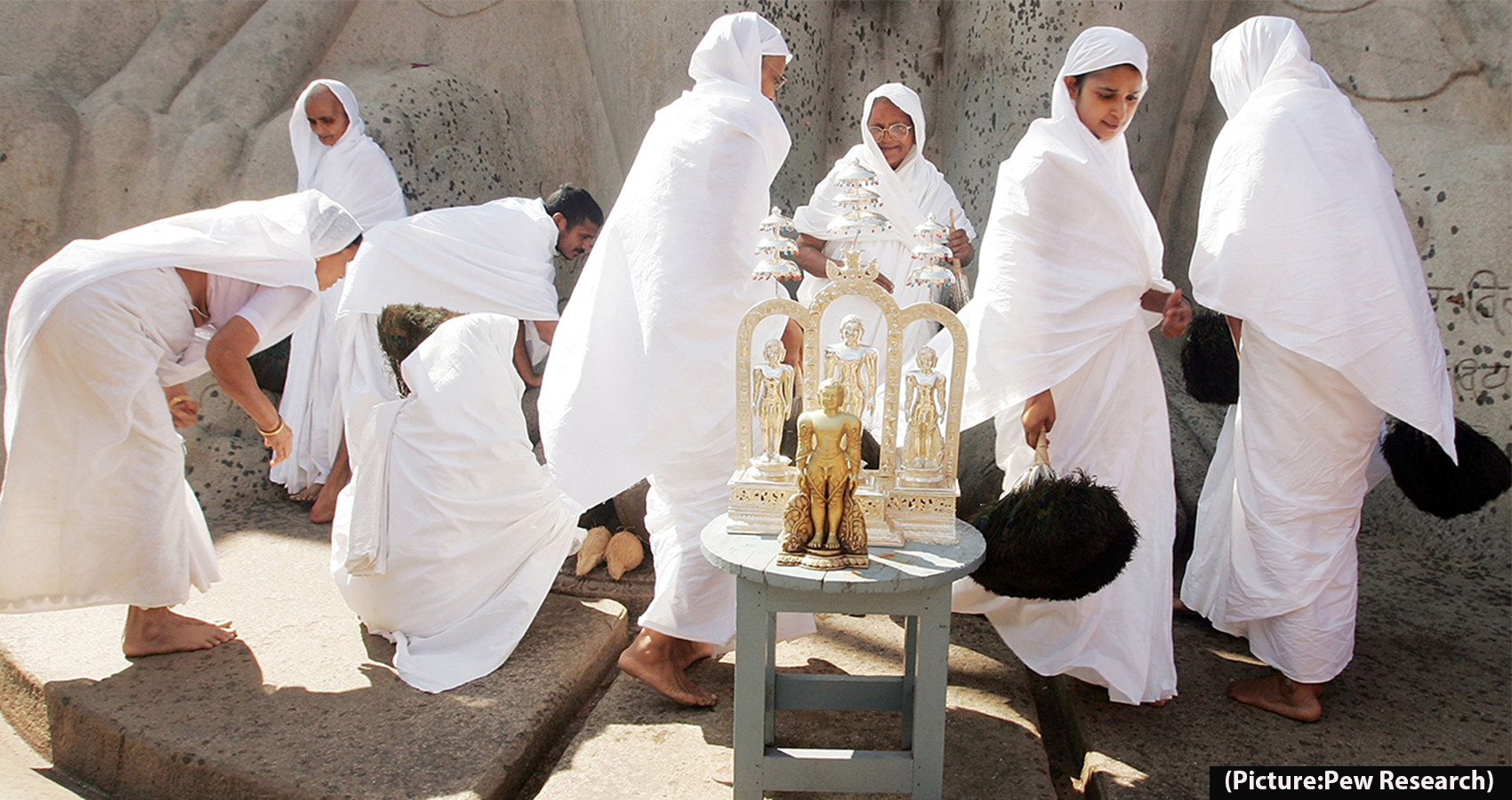
 The traditions of Jainism were largely carried forward by a succession of 24 tirthankaras, or teachers, most notably Vardhamana Mahavira, the last of the tirthankaras and likely a contemporary of Gautama Buddha. Both Mahavira and Buddha emphasized the importance of self-discipline, meditation and ascetic life as the key to salvation. Their teachings often stood in contrast to those of
The traditions of Jainism were largely carried forward by a succession of 24 tirthankaras, or teachers, most notably Vardhamana Mahavira, the last of the tirthankaras and likely a contemporary of Gautama Buddha. Both Mahavira and Buddha emphasized the importance of self-discipline, meditation and ascetic life as the key to salvation. Their teachings often stood in contrast to those of 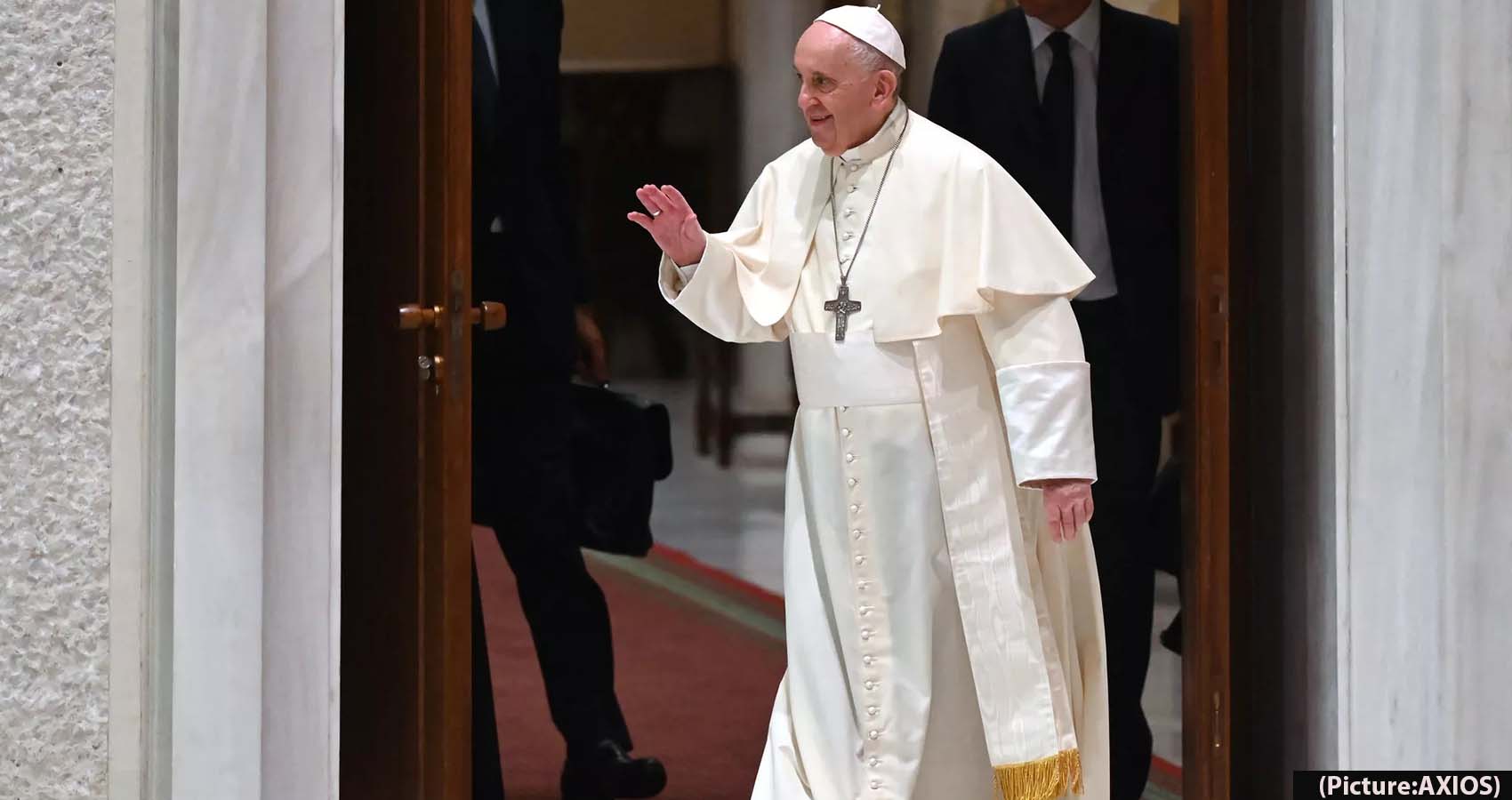
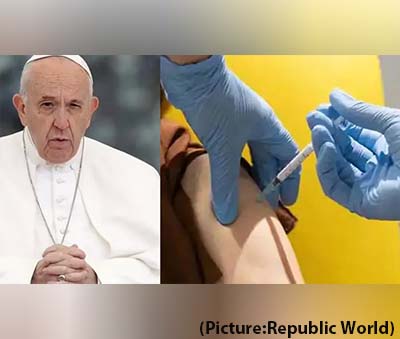 “Thanks to God and to the work of many, we now have vaccines to protect us from COVID-19. They grant us the hope of ending the pandemic, but only if they are available to all and if we work together,” the pope wrote in the message addressed to all people on the vaccination campaign against COVID-19.
“Thanks to God and to the work of many, we now have vaccines to protect us from COVID-19. They grant us the hope of ending the pandemic, but only if they are available to all and if we work together,” the pope wrote in the message addressed to all people on the vaccination campaign against COVID-19.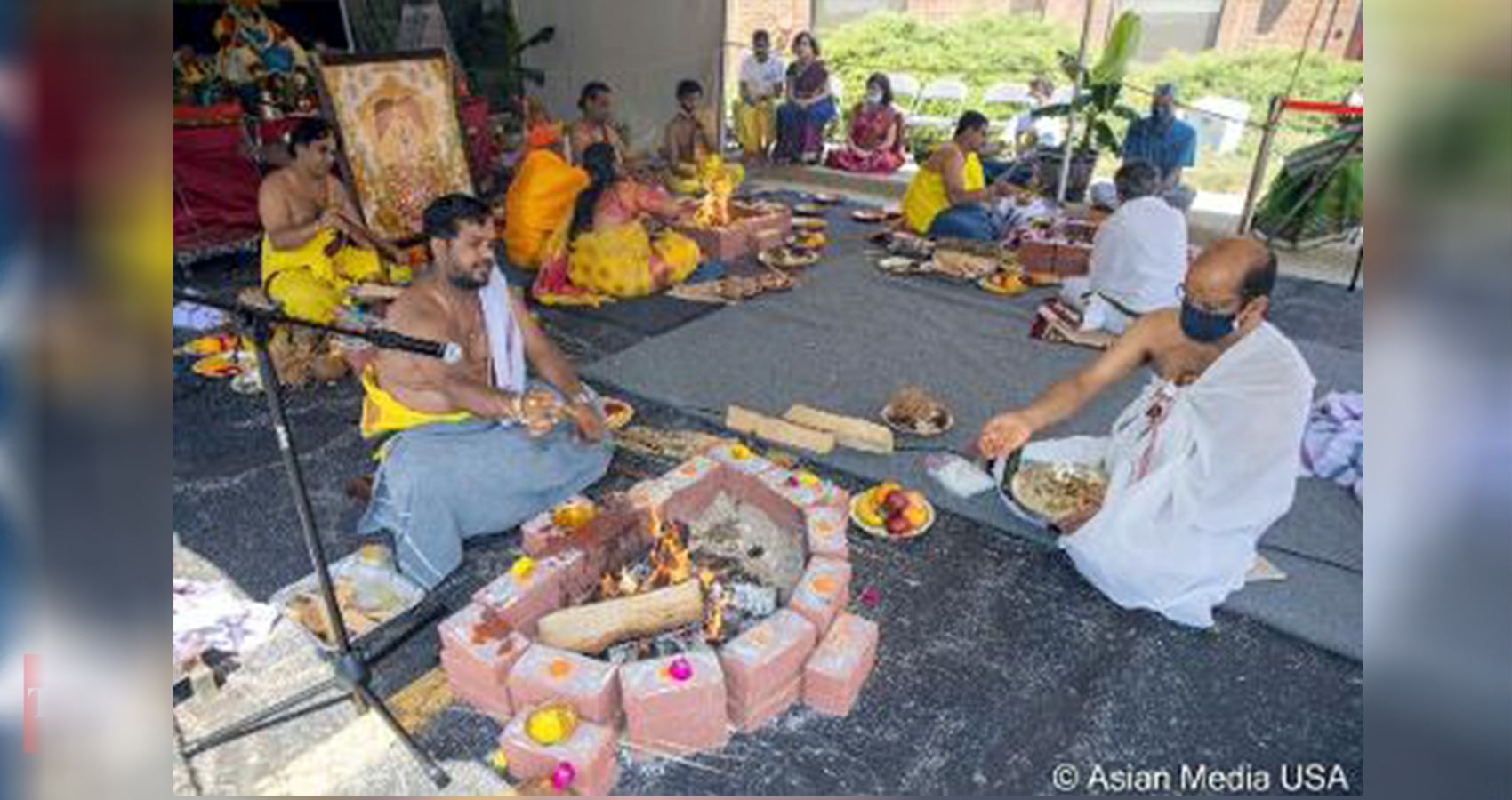
 The Guiding Principle behind opening Dwarkamai’s “Centers of Spiritual Excellence” was to take the worship center closer to devotee’s homes based on request from devotees in an area rather than make devotees drive for hours to visit a worship center.
The Guiding Principle behind opening Dwarkamai’s “Centers of Spiritual Excellence” was to take the worship center closer to devotee’s homes based on request from devotees in an area rather than make devotees drive for hours to visit a worship center.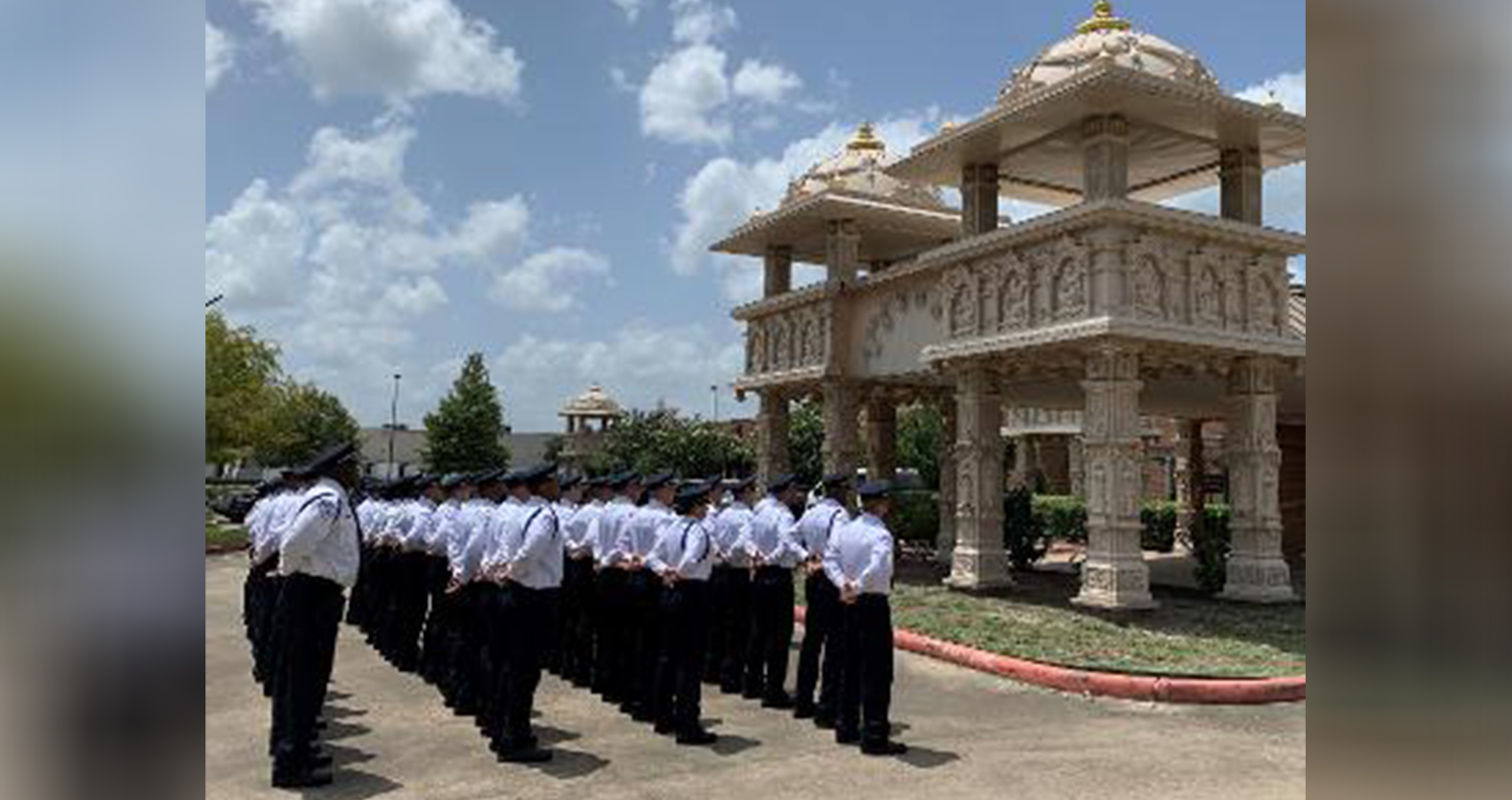

 Bishop Kevin C. Rhoades, who leads the doctrine committee of the U.S. Conference of Catholics Bishops, reiterated that the document will not bar any individuals from receiving Communion and said it is “going to be addressed to all Catholics, not a particular person or a single issue in the part on Eucharistic consistency.”
Bishop Kevin C. Rhoades, who leads the doctrine committee of the U.S. Conference of Catholics Bishops, reiterated that the document will not bar any individuals from receiving Communion and said it is “going to be addressed to all Catholics, not a particular person or a single issue in the part on Eucharistic consistency.”
 Since it did not fall under the “I disobeyed my parents and fought with my siblings” script of kids’ confessions, I never brought it up in confession. (What does an orphaned only child confess?)
Since it did not fall under the “I disobeyed my parents and fought with my siblings” script of kids’ confessions, I never brought it up in confession. (What does an orphaned only child confess?)
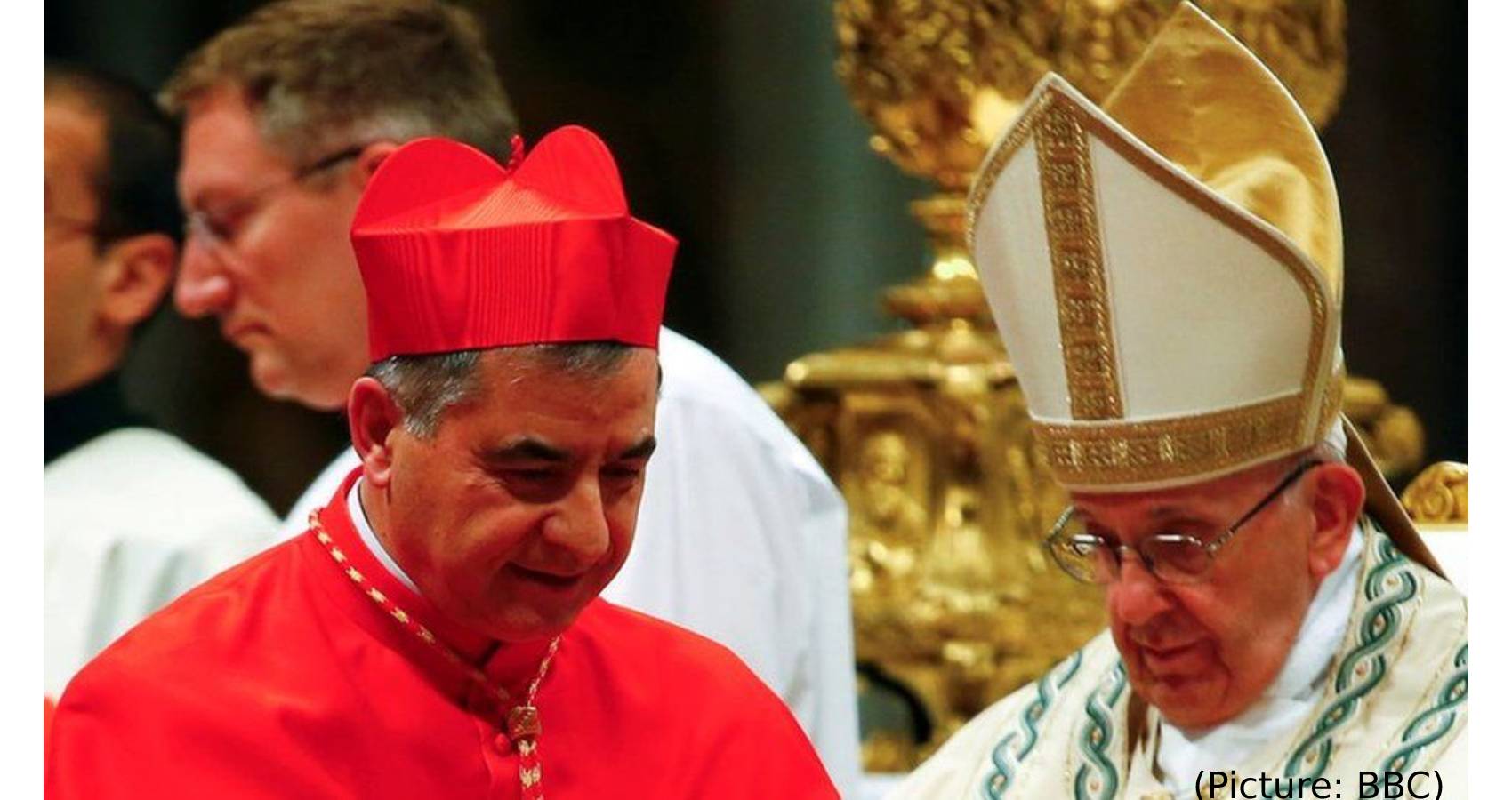
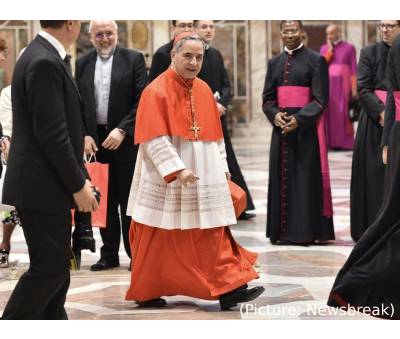 A two-year investigation exposed how the Vatican lost millions of euros, including donations from worshippers, after buying a former Harrods warehouse in Sloane Avenue, Chelsea, in 2014. The cardinal was formerly in charge of donations at the secretariat which handles Vatican funds. The charges against him include allegedly channeling money to businesses run by his brothers in their native Sardinia. Nine other defendants are also accused of crimes including extortion, embezzlement, money-laundering and abuse of office.
A two-year investigation exposed how the Vatican lost millions of euros, including donations from worshippers, after buying a former Harrods warehouse in Sloane Avenue, Chelsea, in 2014. The cardinal was formerly in charge of donations at the secretariat which handles Vatican funds. The charges against him include allegedly channeling money to businesses run by his brothers in their native Sardinia. Nine other defendants are also accused of crimes including extortion, embezzlement, money-laundering and abuse of office.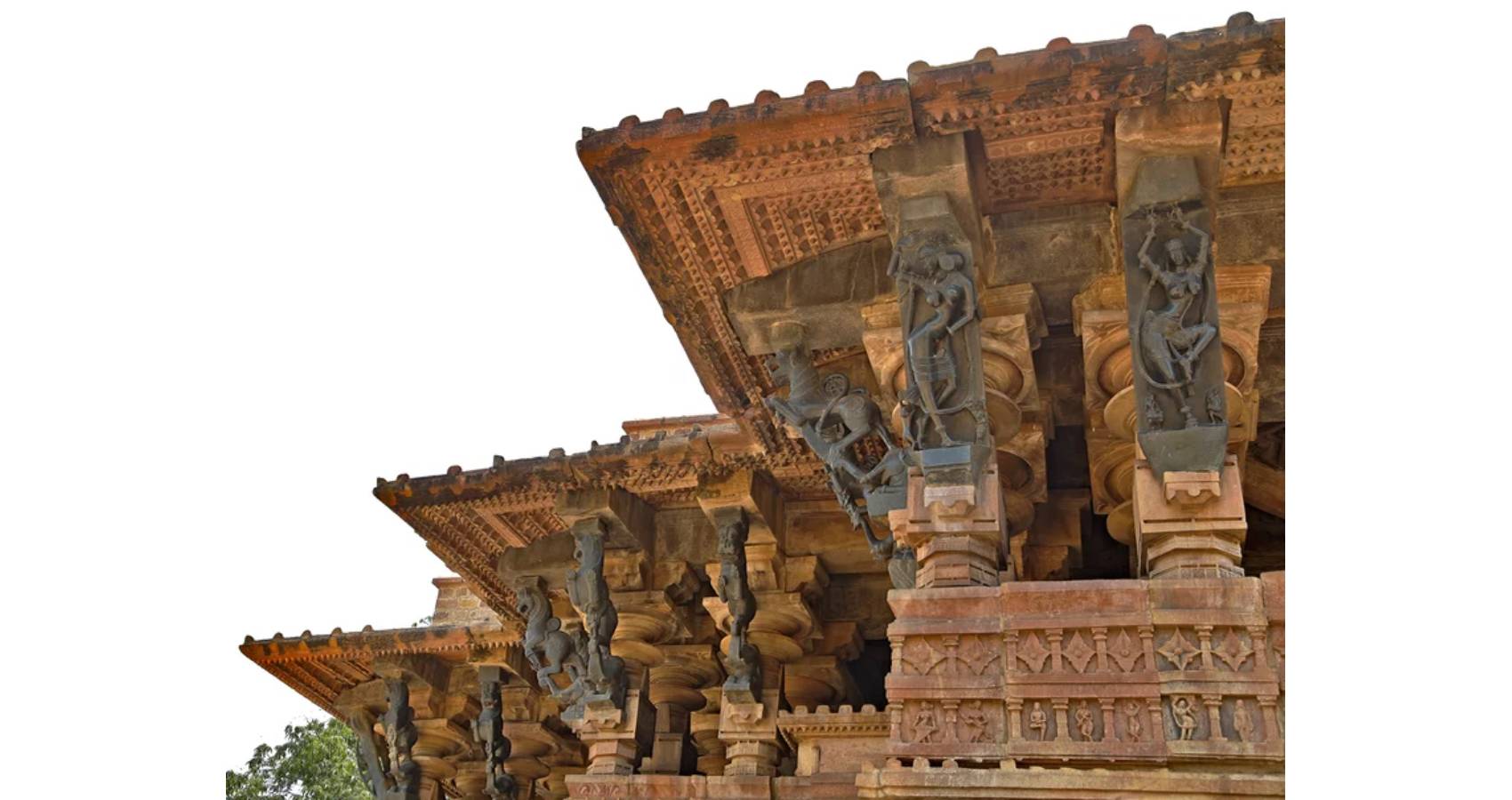
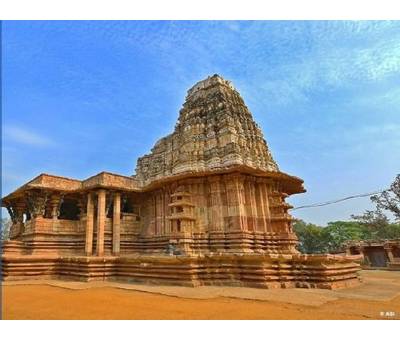 A World Heritage Site is a location with an “outstanding universal value”. This signifies “cultural and/or natural significance which is so exceptional as to transcend national boundaries and to be of common importance for present and future generations of all humanity”. To be included, sites must meet at least one of the ten selection criteria.
A World Heritage Site is a location with an “outstanding universal value”. This signifies “cultural and/or natural significance which is so exceptional as to transcend national boundaries and to be of common importance for present and future generations of all humanity”. To be included, sites must meet at least one of the ten selection criteria.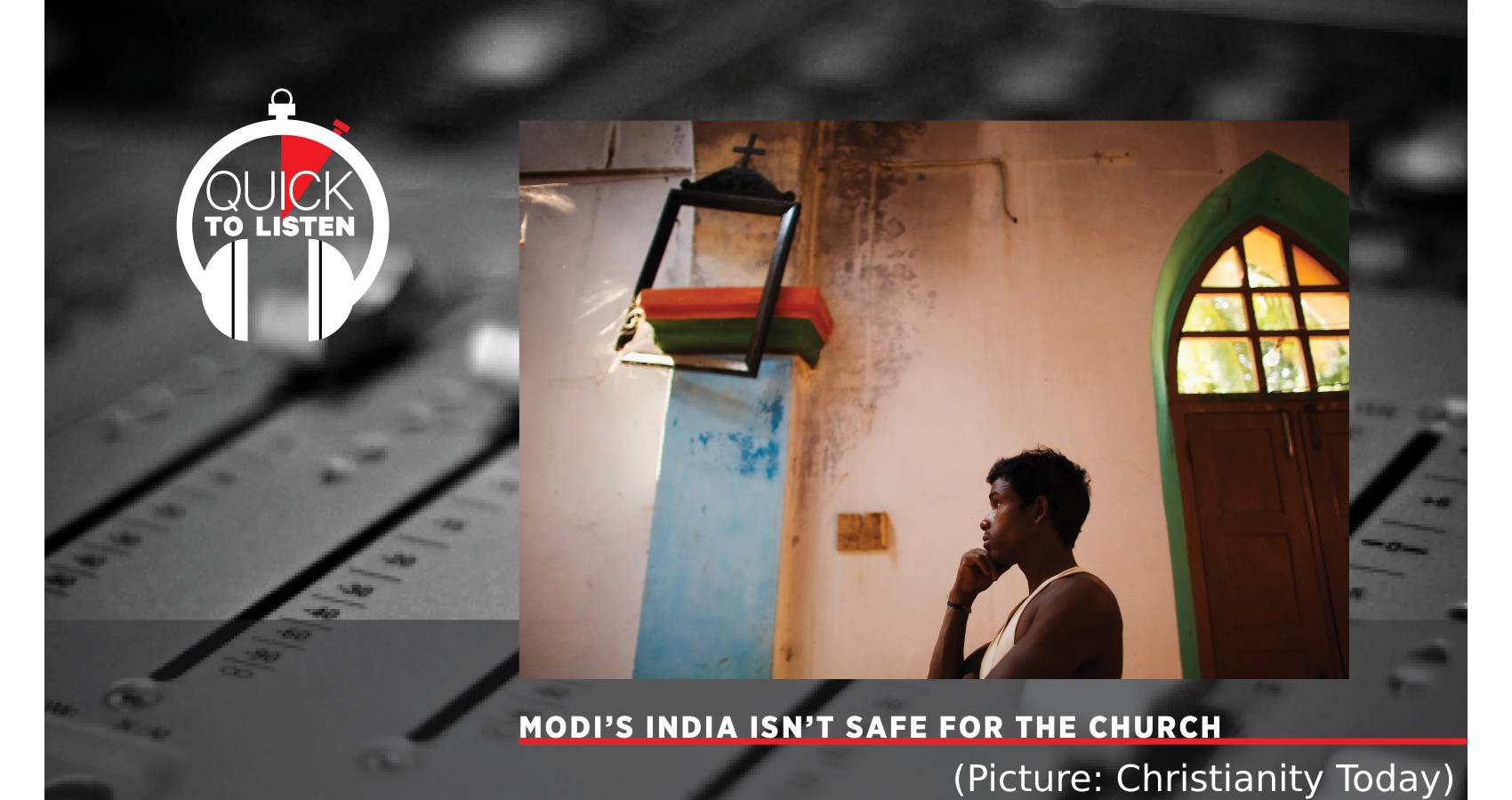
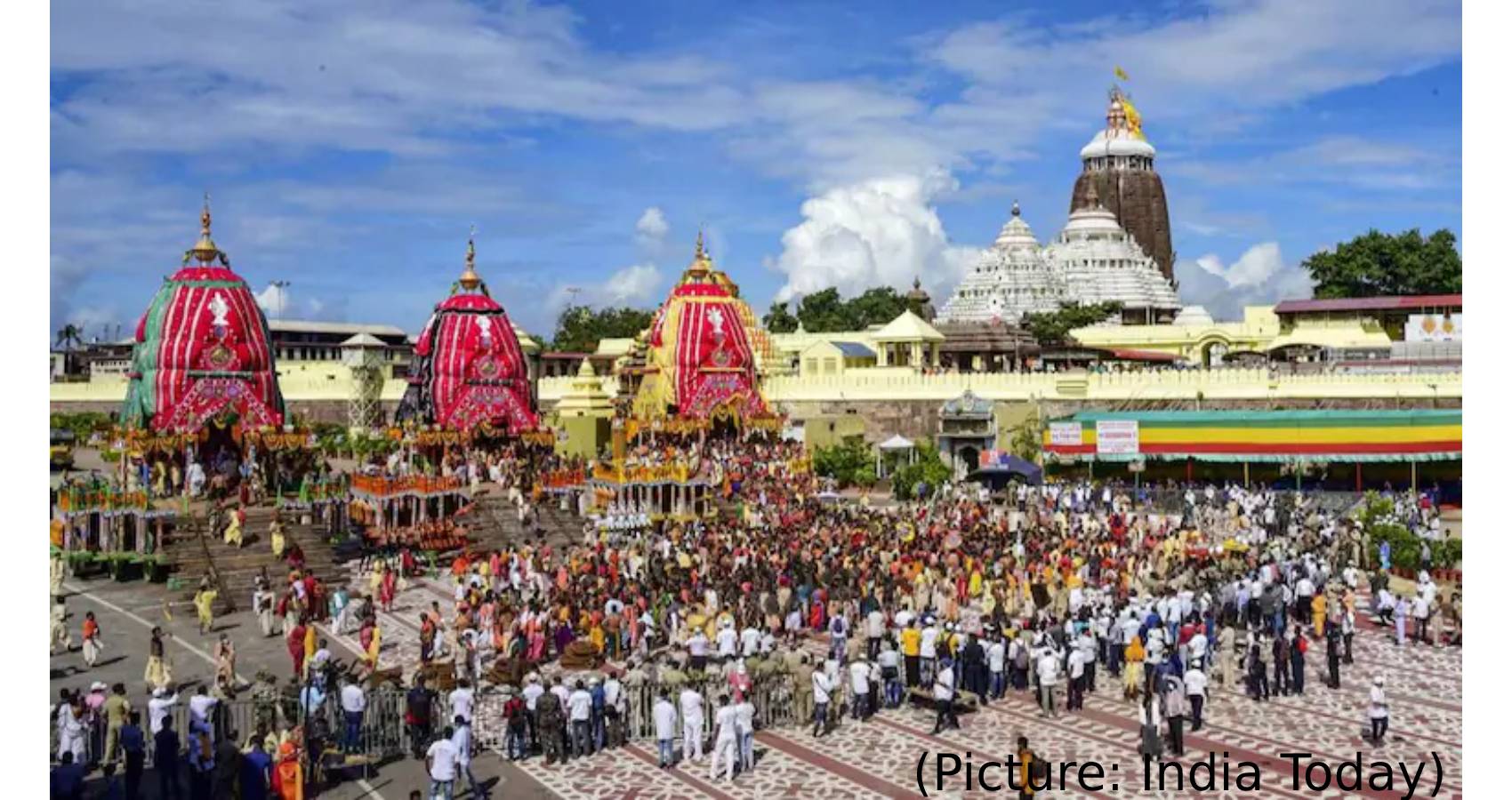
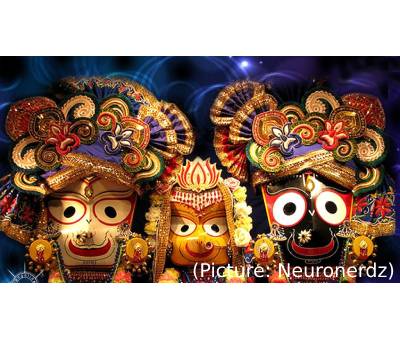 At the JagannathPuri shrine, Shri Jagannathji, Subhadraji, and Balabhadraji are revered and they ride in separate chariots during the RathYatra to their aunt’s residence, the Gundicha temple. After an eight-day visit, they return to Puri temple. For the unversed, the distance between Jagannath temple and Gundicha temple is around three kilometres. The idols o
At the JagannathPuri shrine, Shri Jagannathji, Subhadraji, and Balabhadraji are revered and they ride in separate chariots during the RathYatra to their aunt’s residence, the Gundicha temple. After an eight-day visit, they return to Puri temple. For the unversed, the distance between Jagannath temple and Gundicha temple is around three kilometres. The idols o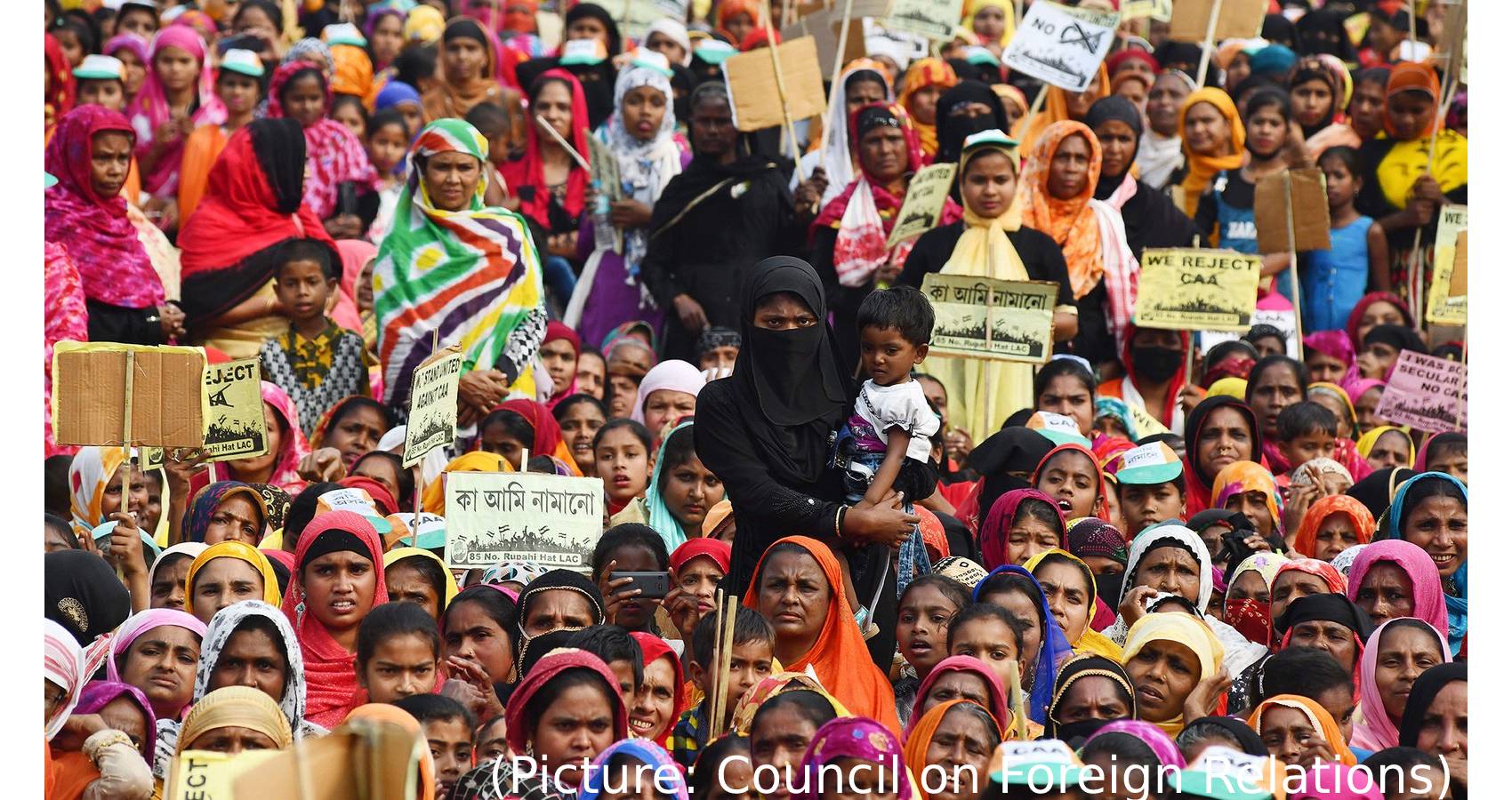
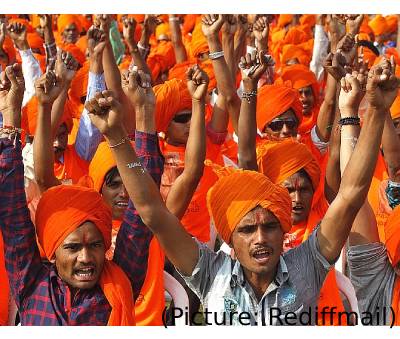 IAMC this week led an initiative to have a Joint Resolution approved at the summit that also calls for the State Department to designate India a CPC. The resolution was supported by more than 30 signatories and is being transmitted to the office of Secretary of State Antony Blinken. Ms. Bhargava pointed out that the Citizenship Amendment Act and the National Register of Citizens are limiting or eliminating pathways for Muslims to be able to demonstrate their citizenship, which can lead to them being wrongfully detained, deported, or worse, rendered stateless. With those laws, India is acting much like Myanmar, in how the latter systematically discriminated against the Rohingyas leading up to their genocide.
IAMC this week led an initiative to have a Joint Resolution approved at the summit that also calls for the State Department to designate India a CPC. The resolution was supported by more than 30 signatories and is being transmitted to the office of Secretary of State Antony Blinken. Ms. Bhargava pointed out that the Citizenship Amendment Act and the National Register of Citizens are limiting or eliminating pathways for Muslims to be able to demonstrate their citizenship, which can lead to them being wrongfully detained, deported, or worse, rendered stateless. With those laws, India is acting much like Myanmar, in how the latter systematically discriminated against the Rohingyas leading up to their genocide.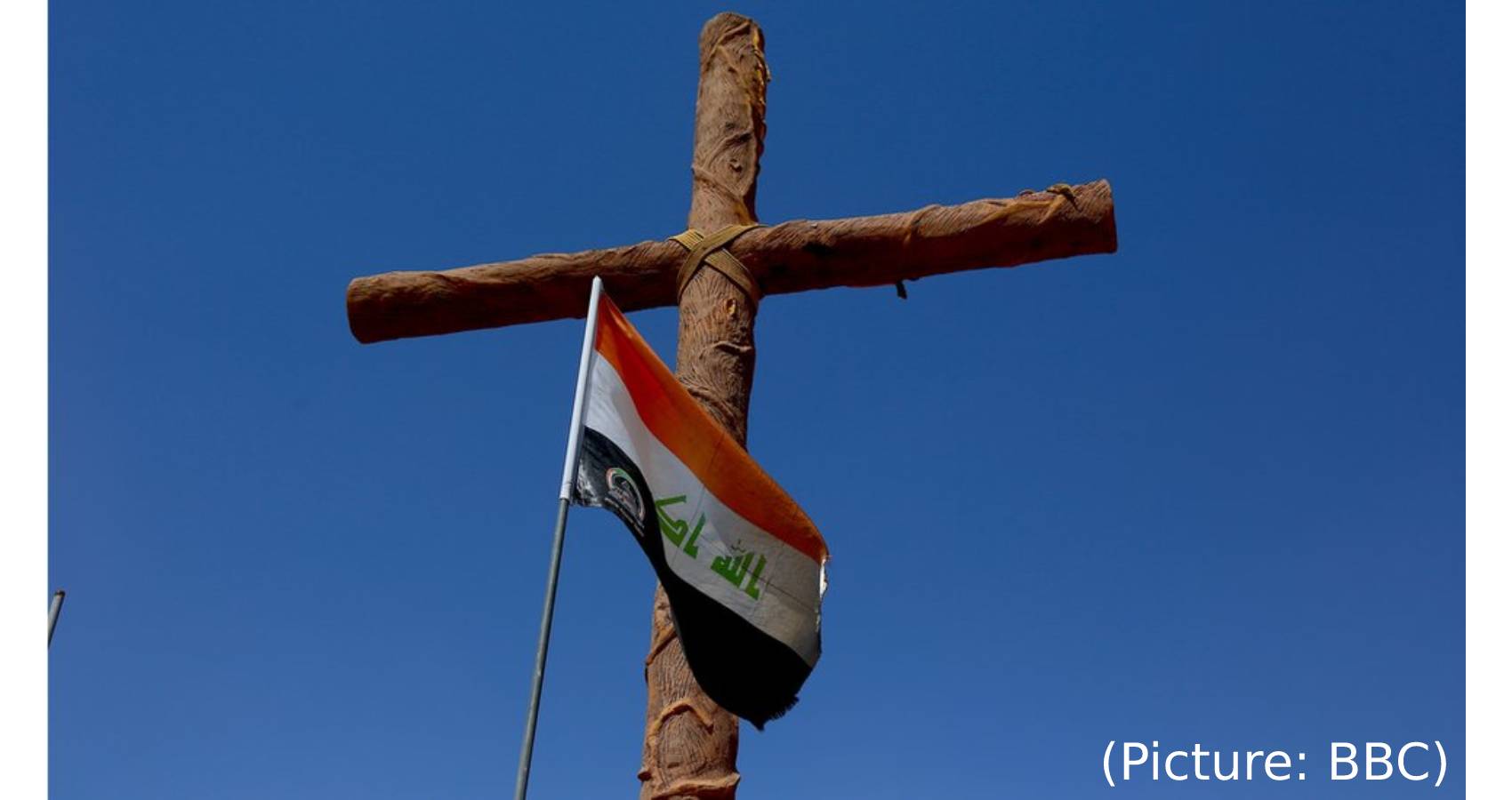
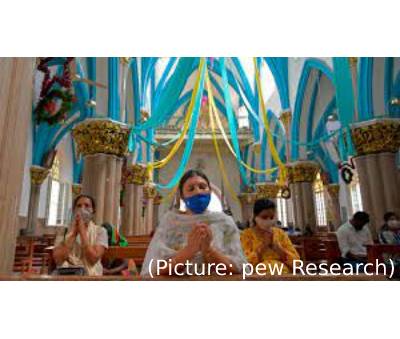 Three-quarters of Indian Christians (76%) say religion is very important in their lives, and Indian Christians engage in a variety of traditional beliefs and practices. Nearly all Indian Christians (98%) say they believe in God, and Christians in India are more likely than most other religious communities to say they pray daily (77%). Most Indian Christians also attend church weekly (55%), and an overwhelming share give money to a church (89%). At the same time, even though 78% of Indian Christians say they read or listen to the Bible at least weekly, smaller shares say they hold several traditional beliefs rooted in the Bible, including belief in Judgment Day (49%) and miracles (48%).
Three-quarters of Indian Christians (76%) say religion is very important in their lives, and Indian Christians engage in a variety of traditional beliefs and practices. Nearly all Indian Christians (98%) say they believe in God, and Christians in India are more likely than most other religious communities to say they pray daily (77%). Most Indian Christians also attend church weekly (55%), and an overwhelming share give money to a church (89%). At the same time, even though 78% of Indian Christians say they read or listen to the Bible at least weekly, smaller shares say they hold several traditional beliefs rooted in the Bible, including belief in Judgment Day (49%) and miracles (48%).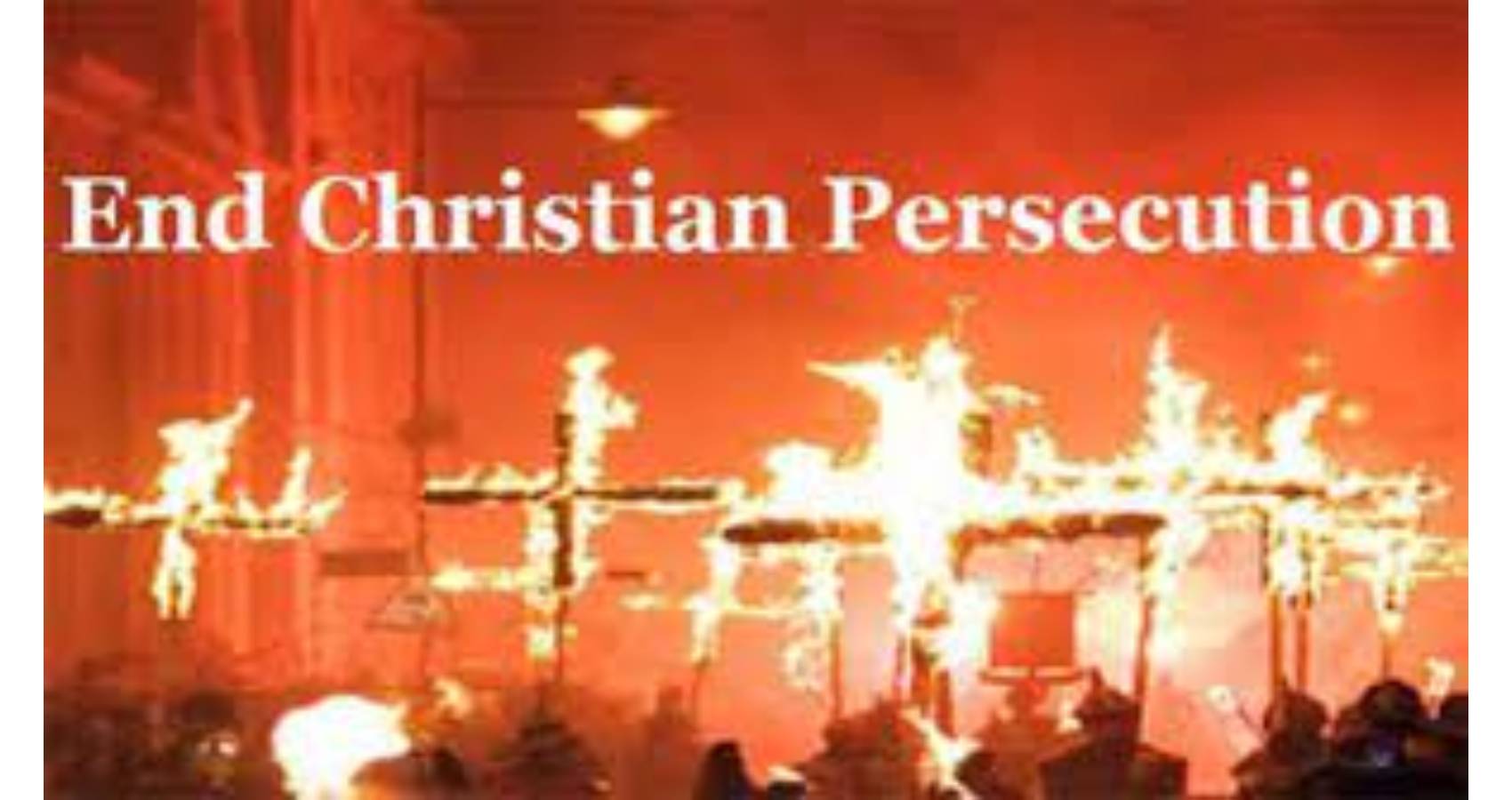
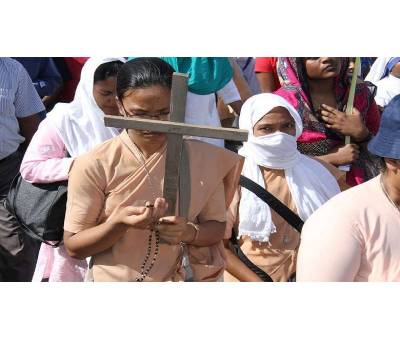 Two North Indian states Chhattisgarh and Jharkhand have recorded 22 incidents of violence against Christians in these six months followed by 19 in Uttar Pradesh and 17 in Karnataka. Other states which are witnessing violence against Christians for their faith are: Madhya Pradesh (15), Odisha (12), Maharashtra (9), Tamil Nadu (6), Punjab (6), Bihar (6), Andhra Pradesh (4), Uttarakhand (3), Delhi (3), Haryana (2), Gujarat (2), Telangana (1), West Bengal (1), Assam (1) and Rajasthan (1). Over one thousand (1137) calls were attended to at UCF helpline number and provided much needed solace to them through advocacy and assisting in reaching their grievances to the concerned authorities. Through these interventions the team could manage to obtain release of 84 persons from detention. Also 29 places of worship were reopened or continue to have prayer services. But, sadly, as always 18 FIRs could only be registered against the violence perpetrators.
Two North Indian states Chhattisgarh and Jharkhand have recorded 22 incidents of violence against Christians in these six months followed by 19 in Uttar Pradesh and 17 in Karnataka. Other states which are witnessing violence against Christians for their faith are: Madhya Pradesh (15), Odisha (12), Maharashtra (9), Tamil Nadu (6), Punjab (6), Bihar (6), Andhra Pradesh (4), Uttarakhand (3), Delhi (3), Haryana (2), Gujarat (2), Telangana (1), West Bengal (1), Assam (1) and Rajasthan (1). Over one thousand (1137) calls were attended to at UCF helpline number and provided much needed solace to them through advocacy and assisting in reaching their grievances to the concerned authorities. Through these interventions the team could manage to obtain release of 84 persons from detention. Also 29 places of worship were reopened or continue to have prayer services. But, sadly, as always 18 FIRs could only be registered against the violence perpetrators.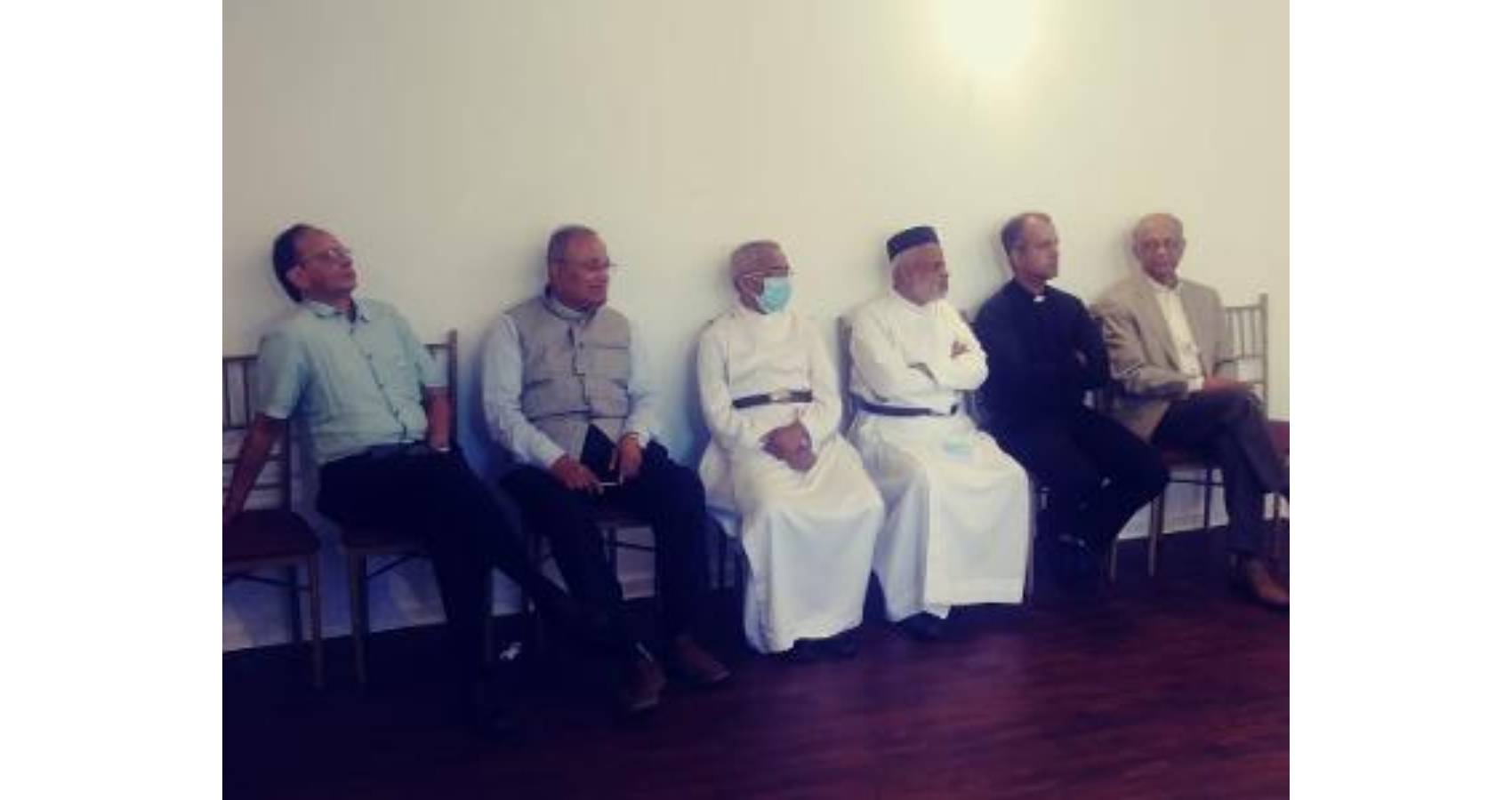
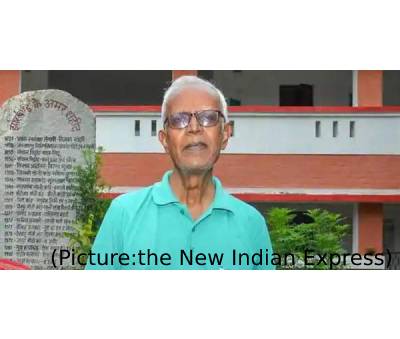 Pastor Wilson Jose, Pastor of the Grace International Church in Mineola, said while we have gathered here to celebrate Father Stan’s life, we would like to express our indignation as Pravasis, the way the political leaders and the judiciary treated him in India. Father Stan represented Christ’s teachings to its core and did his best to uplift the neglected ones by a caste system that is in place over centuries. Jesus said, love your enemies and pray for those who persecute you, and Fr. Stan’s life exemplified those principles. During the freedom struggle, Mahatma Gandhi was jailed many times by the British authorities. However, they respected his ideals and made sure no harm happened to him. Sadly today, the Government of India lacks even that basic level of humanity in the treatment of its own citizens!
Pastor Wilson Jose, Pastor of the Grace International Church in Mineola, said while we have gathered here to celebrate Father Stan’s life, we would like to express our indignation as Pravasis, the way the political leaders and the judiciary treated him in India. Father Stan represented Christ’s teachings to its core and did his best to uplift the neglected ones by a caste system that is in place over centuries. Jesus said, love your enemies and pray for those who persecute you, and Fr. Stan’s life exemplified those principles. During the freedom struggle, Mahatma Gandhi was jailed many times by the British authorities. However, they respected his ideals and made sure no harm happened to him. Sadly today, the Government of India lacks even that basic level of humanity in the treatment of its own citizens!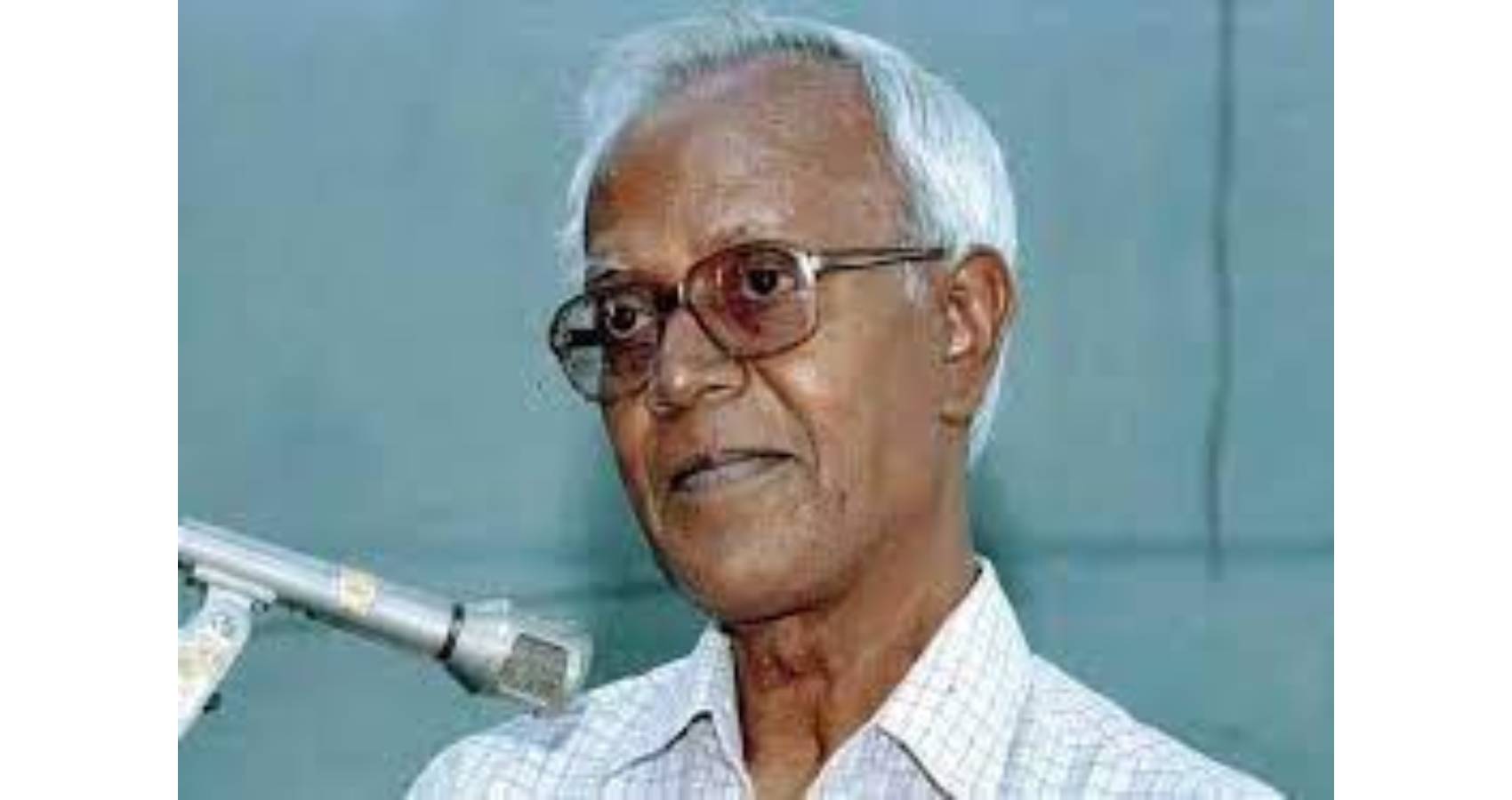
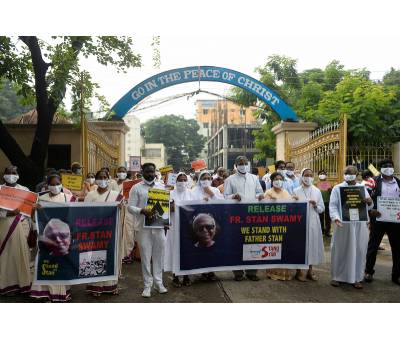 Dr. Stanislaus D’Souza SJ, the Jesuit Provincial of India, said: “With a deep sense of pain, anguish and hope we have surrendered Fr Stan Swamy, aged 84, to his eternal abode.”The funeral service and Mass was led by Father Arun De Souza, Jesuit provincial of
Dr. Stanislaus D’Souza SJ, the Jesuit Provincial of India, said: “With a deep sense of pain, anguish and hope we have surrendered Fr Stan Swamy, aged 84, to his eternal abode.”The funeral service and Mass was led by Father Arun De Souza, Jesuit provincial of 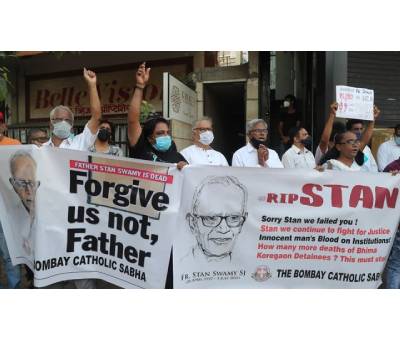 Archbishop Felix Toppo of Ranchi and Auxiliary Bishop Theodore Mascarenhas. “The ‘caged parrot’ now sings in heaven but its blood is on our hands,” they wrote, “May the hand of God intervene to bring justice to all innocent victims of insensitivity, vindictiveness and injustice. We have lost Fr. Stan Swamy but we still hope in the God of justice,” they added.The Jamshedpur Jesuit Province, to which Father Swamy belonged, also expressed “a deep sense of pain, anguish and hope” at the death of the “servant in mission of justice and reconciliation”. In a Facebook post, Father Jerome Cutinha noted that the “author of life” had given Father Swamy “a mission to work among the Advasis [indigenous], Dalits [downtrodden] and other marginalized communities so that the poor may have life and life to the full, with dignity and honour”. “The Society of Jesus [Jesuits], at this moment, recommits itself to take forward the legacy of Fr. Stan in hits mission of justice and reconciliation,” Father Cutinha wrote.
Archbishop Felix Toppo of Ranchi and Auxiliary Bishop Theodore Mascarenhas. “The ‘caged parrot’ now sings in heaven but its blood is on our hands,” they wrote, “May the hand of God intervene to bring justice to all innocent victims of insensitivity, vindictiveness and injustice. We have lost Fr. Stan Swamy but we still hope in the God of justice,” they added.The Jamshedpur Jesuit Province, to which Father Swamy belonged, also expressed “a deep sense of pain, anguish and hope” at the death of the “servant in mission of justice and reconciliation”. In a Facebook post, Father Jerome Cutinha noted that the “author of life” had given Father Swamy “a mission to work among the Advasis [indigenous], Dalits [downtrodden] and other marginalized communities so that the poor may have life and life to the full, with dignity and honour”. “The Society of Jesus [Jesuits], at this moment, recommits itself to take forward the legacy of Fr. Stan in hits mission of justice and reconciliation,” Father Cutinha wrote.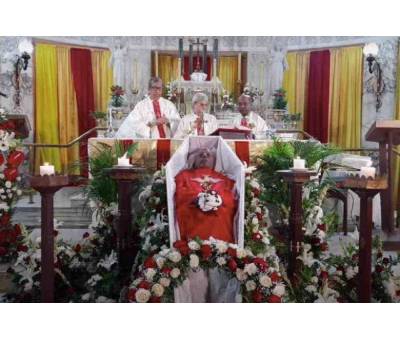 India’s caste system was officially abolished in 1950, but the 2,000-year-old social hierarchy imposed on people by birth still exists in many aspects of life. The caste system categorizes Hindus at birth, defining their place in society, what jobs they can do and who they can marry. In October last year, Swamy was arrested and charged under the country’s anti-terrorism laws, which critics have described as draconian.
India’s caste system was officially abolished in 1950, but the 2,000-year-old social hierarchy imposed on people by birth still exists in many aspects of life. The caste system categorizes Hindus at birth, defining their place in society, what jobs they can do and who they can marry. In October last year, Swamy was arrested and charged under the country’s anti-terrorism laws, which critics have described as draconian.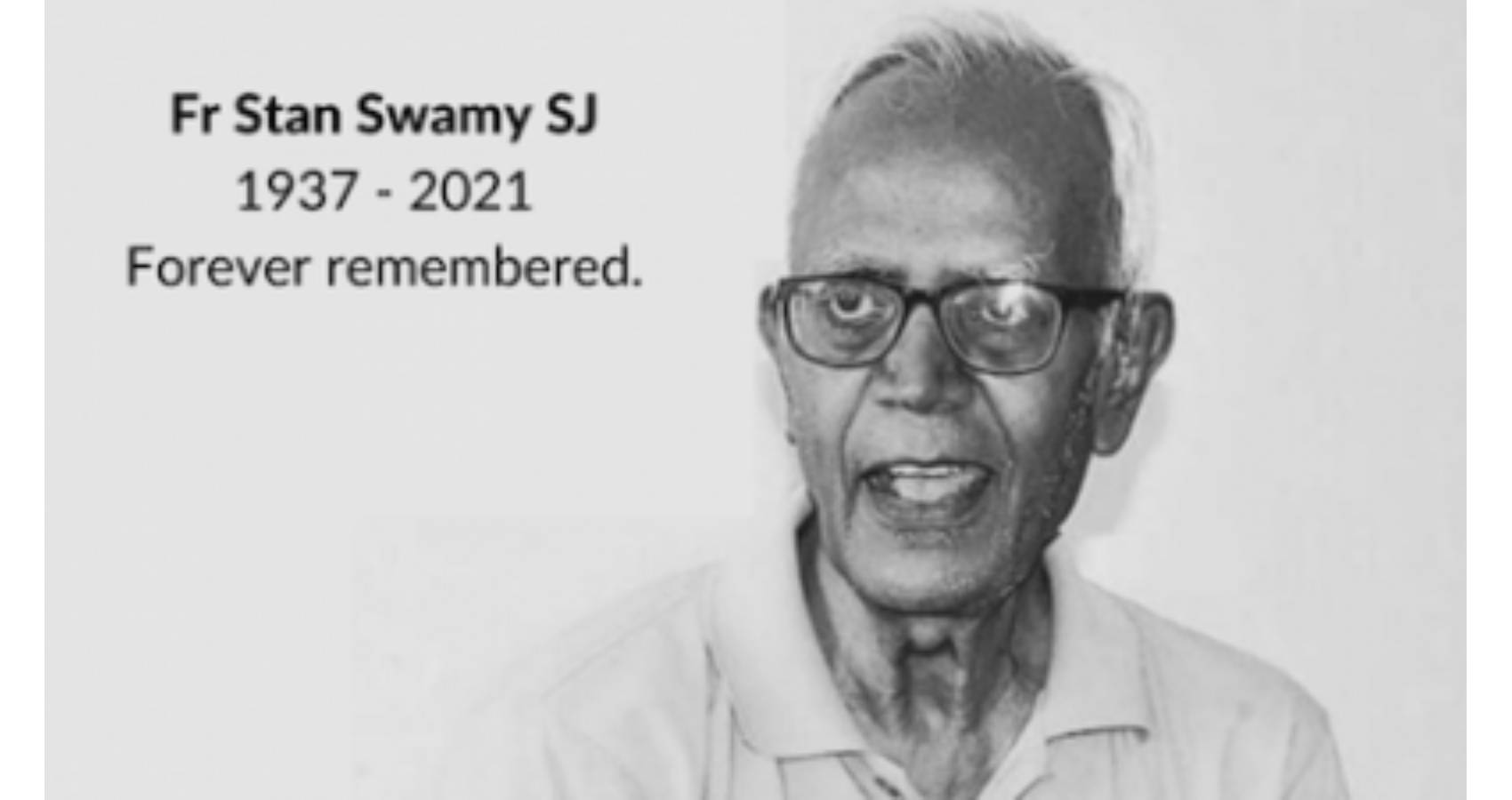
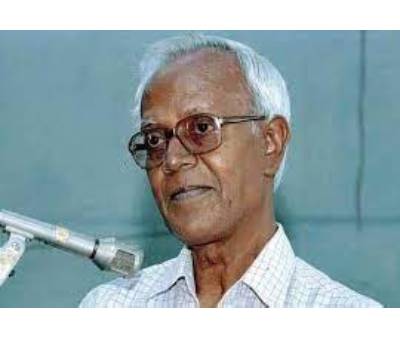 Secondly, I feel happy for him because Fr. Stan is now in a better state than he was, while alive in circumstances such were inflicted on him for reasons he could not understand. There is a school of thought that it is easier for an innocent man to suffer. They think so because they have never suffered, innocently or otherwise. The anguish in guilt-less suffering is that one’s suffering makes no sense. It is absurd. What is absurd is unendurable. If you are punished for your wrongdoings, then you can reconcile yourself to your plight. Think, if you dare, of the plight of an old and chronically ill man in a prison. Prison-life conditions, including the psychological poison that goes with it, being what they are, even individuals much younger than Fr. Stan and in better states of health disintegrate fast. Fr. Stan himself said that it is better to die than to be in prison the way he was. So, why shouldn’t we celebrate his release from misery through the mercy of death, for neither mercy nor justice was likely to reach him in any other way?
Secondly, I feel happy for him because Fr. Stan is now in a better state than he was, while alive in circumstances such were inflicted on him for reasons he could not understand. There is a school of thought that it is easier for an innocent man to suffer. They think so because they have never suffered, innocently or otherwise. The anguish in guilt-less suffering is that one’s suffering makes no sense. It is absurd. What is absurd is unendurable. If you are punished for your wrongdoings, then you can reconcile yourself to your plight. Think, if you dare, of the plight of an old and chronically ill man in a prison. Prison-life conditions, including the psychological poison that goes with it, being what they are, even individuals much younger than Fr. Stan and in better states of health disintegrate fast. Fr. Stan himself said that it is better to die than to be in prison the way he was. So, why shouldn’t we celebrate his release from misery through the mercy of death, for neither mercy nor justice was likely to reach him in any other way?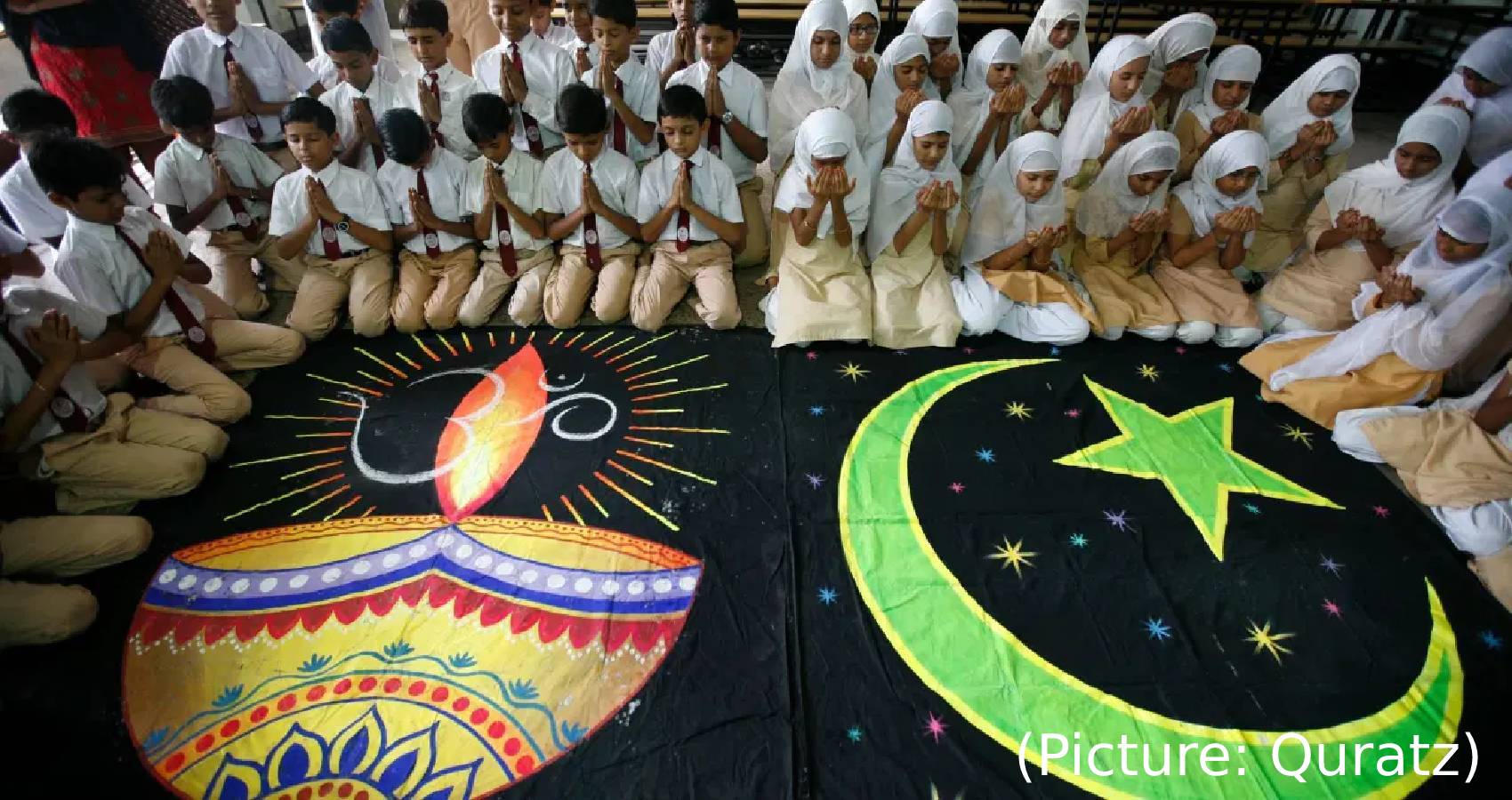
 A major new Pew Research Center survey of religion across India, based on nearly 30,000 face-to-face interviews of adults conducted in 17 languages between late 2019 and early 2020 (before the
A major new Pew Research Center survey of religion across India, based on nearly 30,000 face-to-face interviews of adults conducted in 17 languages between late 2019 and early 2020 (before the 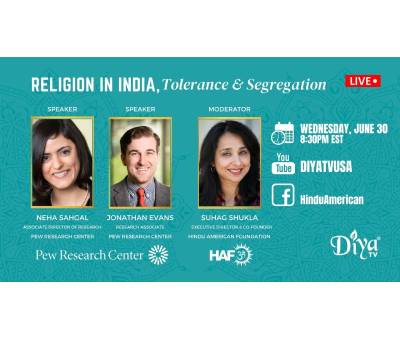 Even though Hindu BJP voters who link national identity with religion and language are more inclined to support a religiously segregated India, they also are more likely than other Hindu voters to express positive opinions about India’s religious diversity. Nearly two-thirds (65%) of this group – Hindus who say that being a Hindu and being able to speak Hindi are very important to be truly Indian and who voted for the BJP in 2019 – say religious diversity benefits India, compared with about half (47%) of other Hindu voters. This finding suggests that for many Hindus, there is no contradiction between valuing religious diversity (at least in principle) and feeling that Hindus are somehow more authentically Indian than fellow citizens who follow other religions.
Even though Hindu BJP voters who link national identity with religion and language are more inclined to support a religiously segregated India, they also are more likely than other Hindu voters to express positive opinions about India’s religious diversity. Nearly two-thirds (65%) of this group – Hindus who say that being a Hindu and being able to speak Hindi are very important to be truly Indian and who voted for the BJP in 2019 – say religious diversity benefits India, compared with about half (47%) of other Hindu voters. This finding suggests that for many Hindus, there is no contradiction between valuing religious diversity (at least in principle) and feeling that Hindus are somehow more authentically Indian than fellow citizens who follow other religions.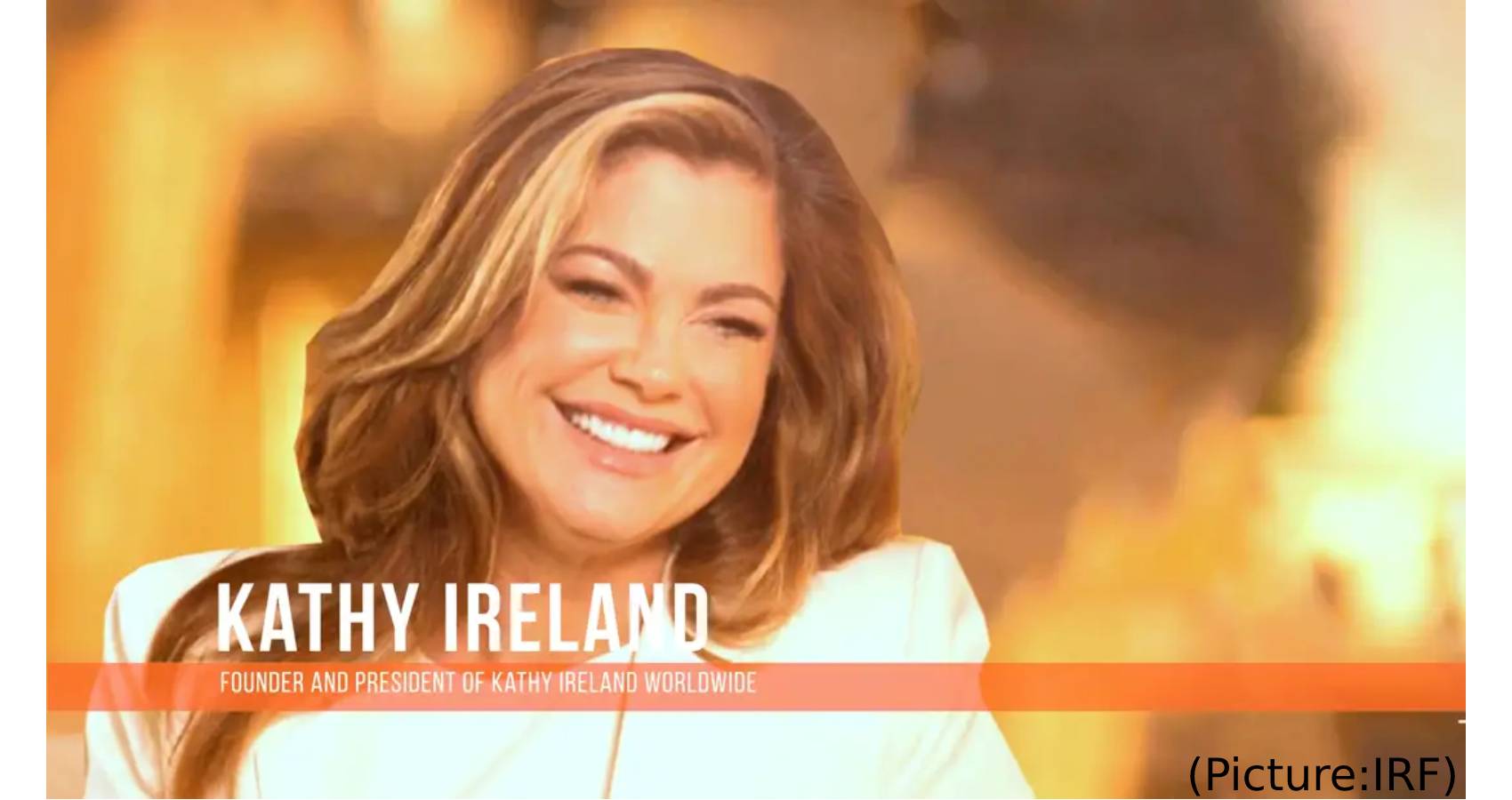
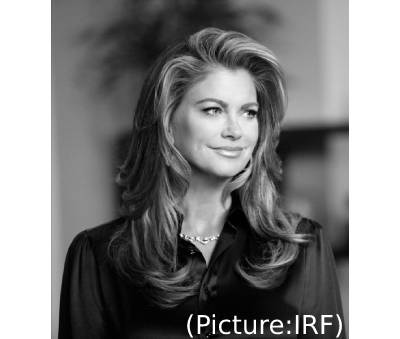 Kathy’s engagement did not stop when the genocide did. This August 22, Kathy is co-hosting with the Religious Freedom & Business Foundation a
Kathy’s engagement did not stop when the genocide did. This August 22, Kathy is co-hosting with the Religious Freedom & Business Foundation a 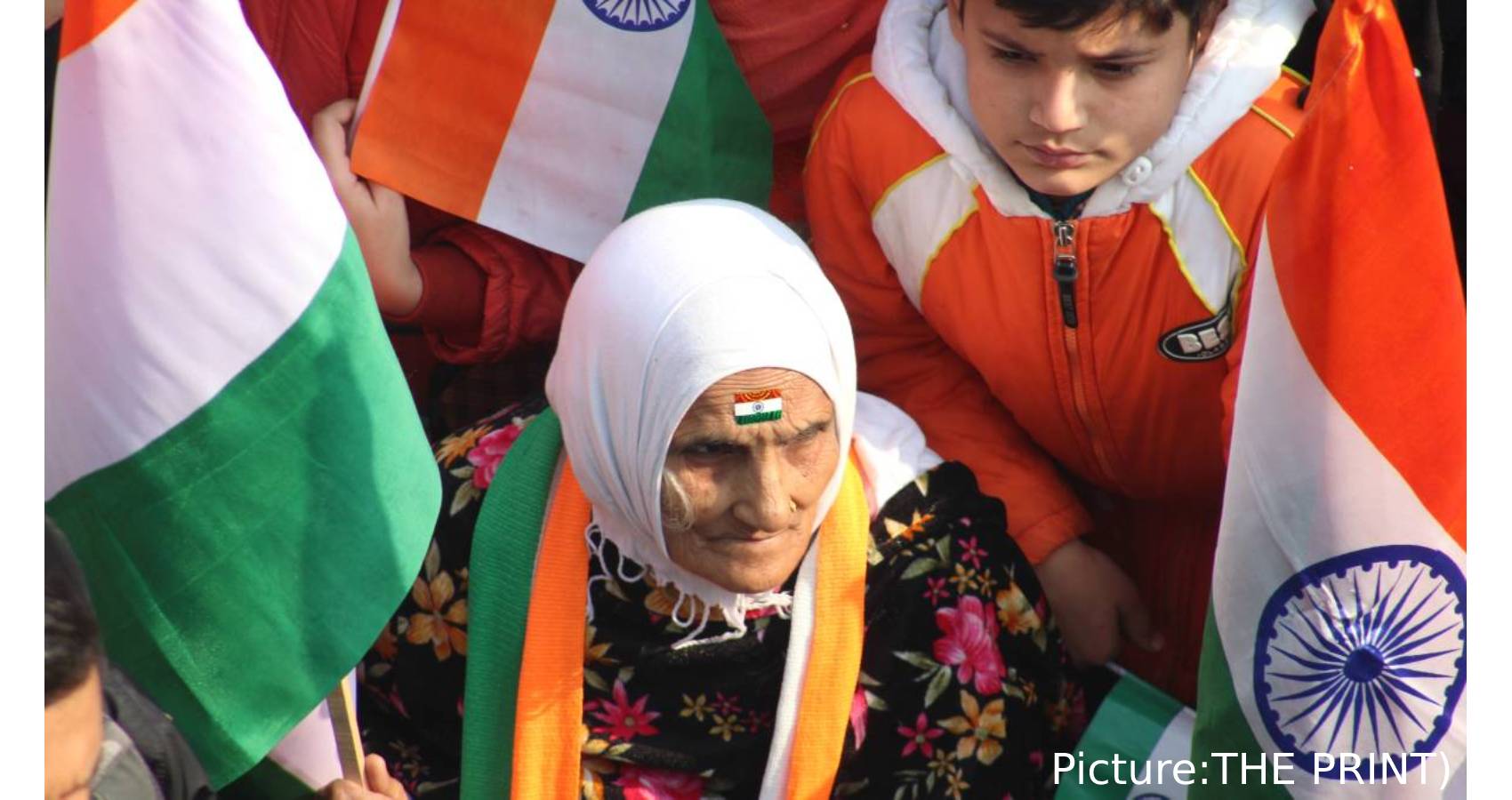
 Most Indians share some common values and beliefs across religious lines like karma, Sufism or respecting elders, which is considered very important to their faiths. The survey also found Indians tend to see religious ceremonies for the three rites of passage at birth (or infancy), marriage and death as highly important. “For example, the vast majority of Muslims (92 percent), Christians (86 percent) and Hindus (85 percent) say it is very important to have a religious burial or cremation for their loved ones.” And yet members of major religious communities also tend to see themselves as very different from others.
Most Indians share some common values and beliefs across religious lines like karma, Sufism or respecting elders, which is considered very important to their faiths. The survey also found Indians tend to see religious ceremonies for the three rites of passage at birth (or infancy), marriage and death as highly important. “For example, the vast majority of Muslims (92 percent), Christians (86 percent) and Hindus (85 percent) say it is very important to have a religious burial or cremation for their loved ones.” And yet members of major religious communities also tend to see themselves as very different from others.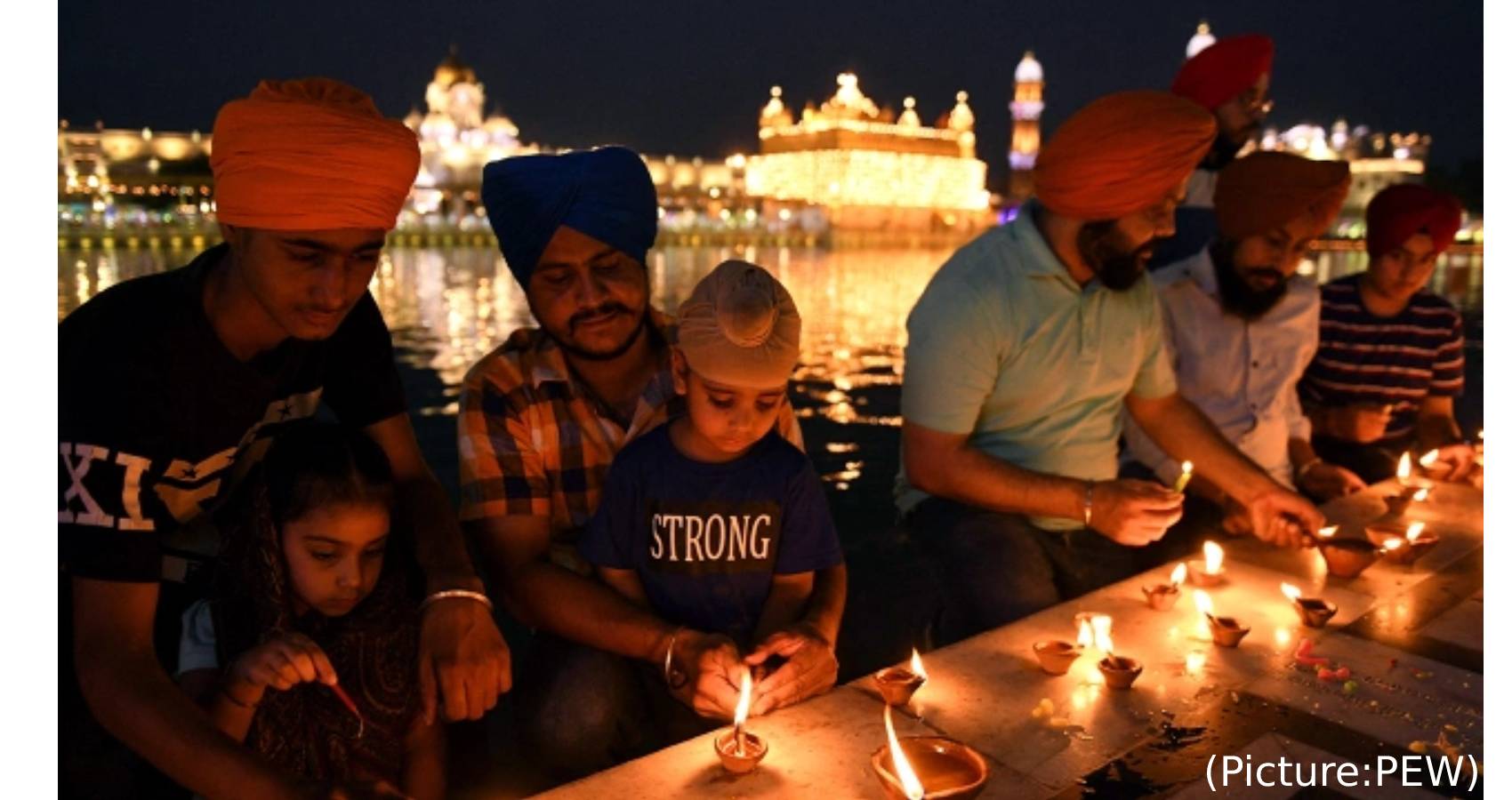
 But Indians’ commitment to tolerance is accompanied by a strong preference for keeping religious communities segregated. For example, Indians generally say they do not have much in common with members of other religious groups, and large majorities in the six major groups say their close friends come mainly or entirely from their own religious community. That’s true not only for 86% of India’s large Hindu population, but also for smaller groups such as Sikhs (80%) and Jains (72%). Moreover, roughly two-thirds of Hindus say it is very important to stop Hindu women (67%) or Hindu men (65%) from marrying into other religious communities. Even larger shares of Muslims oppose interreligious marriage: 80% say it is very important to stop Muslim women from marrying outside their religion, and 76% say it is very important to stop Muslim men from doing so.
But Indians’ commitment to tolerance is accompanied by a strong preference for keeping religious communities segregated. For example, Indians generally say they do not have much in common with members of other religious groups, and large majorities in the six major groups say their close friends come mainly or entirely from their own religious community. That’s true not only for 86% of India’s large Hindu population, but also for smaller groups such as Sikhs (80%) and Jains (72%). Moreover, roughly two-thirds of Hindus say it is very important to stop Hindu women (67%) or Hindu men (65%) from marrying into other religious communities. Even larger shares of Muslims oppose interreligious marriage: 80% say it is very important to stop Muslim women from marrying outside their religion, and 76% say it is very important to stop Muslim men from doing so.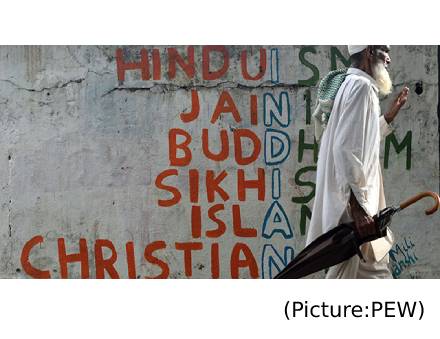 An overall pattern of stability in the share of religious groups is accompanied by little net change from movement into, or out of, most religious groups. Among Hindus, for instance, any conversion out of the group is matched by conversion into the group: 0.7% of respondents say they were raised Hindu but now identify as something else, and roughly the same share (0.8%) say they were not raised Hindu but now identify as Hindu. For Christians, however, there are some net gains from conversion: 0.4% of survey respondents are former Hindus who now identify as Christian, while 0.1% were raised Christian but have since left Christianity.
An overall pattern of stability in the share of religious groups is accompanied by little net change from movement into, or out of, most religious groups. Among Hindus, for instance, any conversion out of the group is matched by conversion into the group: 0.7% of respondents say they were raised Hindu but now identify as something else, and roughly the same share (0.8%) say they were not raised Hindu but now identify as Hindu. For Christians, however, there are some net gains from conversion: 0.4% of survey respondents are former Hindus who now identify as Christian, while 0.1% were raised Christian but have since left Christianity.
 The congregation, however, followed church laws to give her an opportunity to appeal to the Vatican and continue in the convent. The nun appealed against the congregation’s dismissal order before the Vatican’s Congregation for Oriental Churches, which rejected her appeal on Oct. 11, 2019.But she refused to move out of the convent and within a fortnight appealed to the Supreme Tribunal, the Vatican’s highest appeal court, against her dismissal. The appeal now stands rejected and the Vatican has confirmed her dismissal, said Sister Ann Joseph, the congregation’s superior general, in a June 12 letter.
The congregation, however, followed church laws to give her an opportunity to appeal to the Vatican and continue in the convent. The nun appealed against the congregation’s dismissal order before the Vatican’s Congregation for Oriental Churches, which rejected her appeal on Oct. 11, 2019.But she refused to move out of the convent and within a fortnight appealed to the Supreme Tribunal, the Vatican’s highest appeal court, against her dismissal. The appeal now stands rejected and the Vatican has confirmed her dismissal, said Sister Ann Joseph, the congregation’s superior general, in a June 12 letter.
 Tagore, the poet of Indian nationalism, was India’s pre-eminent cultural and literary personality of the twentieth century. The influence of the Buddha on his poetry and his novels has been much studied and written about. This influence came about in diverse ways. His immediate family was steeped in Buddhist study. In 1859 his father Debendranath Tagore had been to Ceylon and had come back with not just knowledge of but keen interest in the Buddha’s life and his teachings. He wrote Sakya Muni O NirvanTattvai in 1882. Satyendranath Tagore, Rabindranath’s elder brother, who had accompanied their father to Ceylon, wrote Bauddha Dharma in 1901. The BrahmoSamaj, of which the Tagore family was an integral part, had also taken up the study of the Buddha’s teachings. A very early influence regarding the Buddha on Rabindranath Tagore was that of RajendralalaMitra, who has figured in this narrative earlier.
Tagore, the poet of Indian nationalism, was India’s pre-eminent cultural and literary personality of the twentieth century. The influence of the Buddha on his poetry and his novels has been much studied and written about. This influence came about in diverse ways. His immediate family was steeped in Buddhist study. In 1859 his father Debendranath Tagore had been to Ceylon and had come back with not just knowledge of but keen interest in the Buddha’s life and his teachings. He wrote Sakya Muni O NirvanTattvai in 1882. Satyendranath Tagore, Rabindranath’s elder brother, who had accompanied their father to Ceylon, wrote Bauddha Dharma in 1901. The BrahmoSamaj, of which the Tagore family was an integral part, had also taken up the study of the Buddha’s teachings. A very early influence regarding the Buddha on Rabindranath Tagore was that of RajendralalaMitra, who has figured in this narrative earlier.
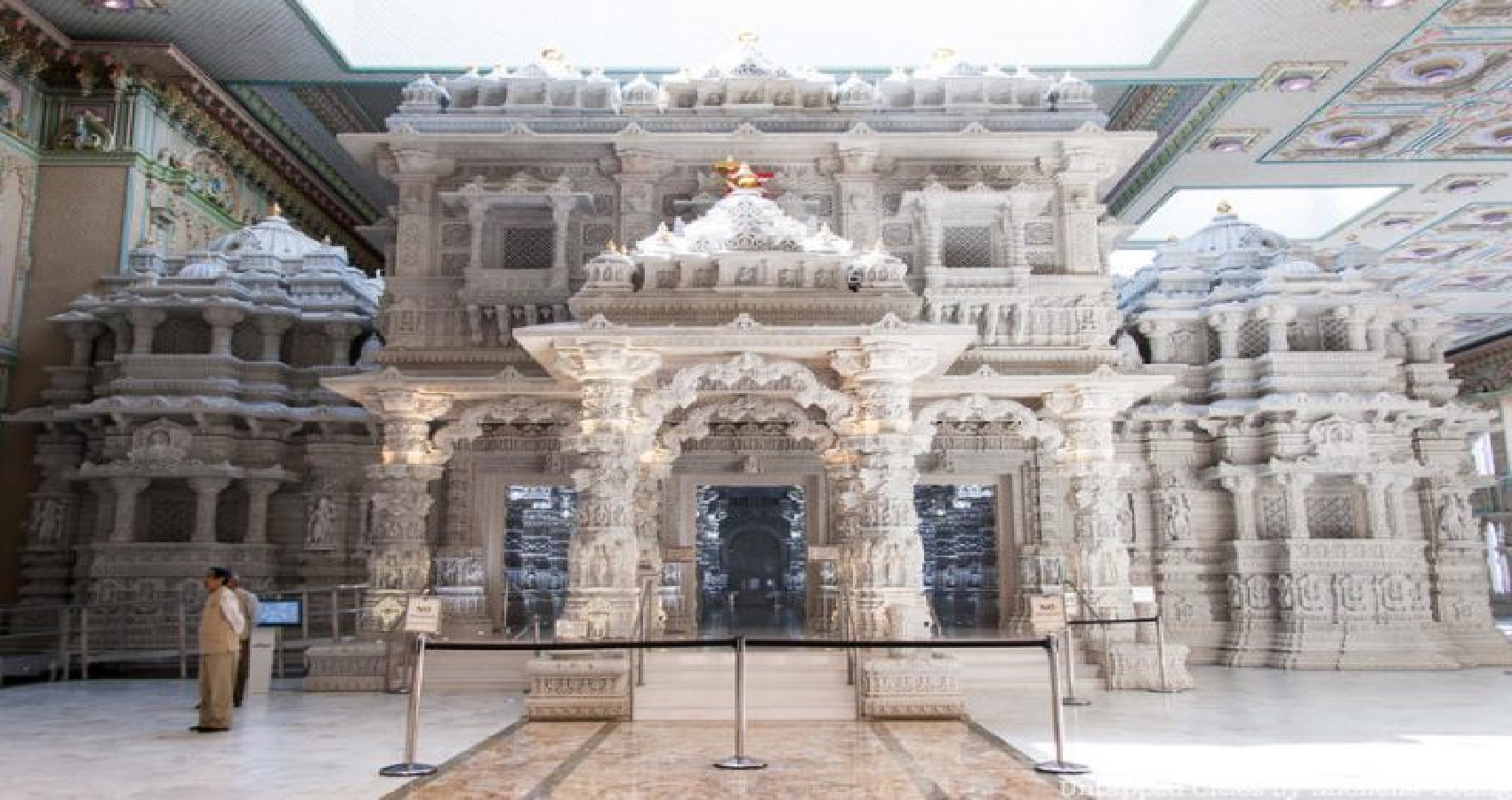
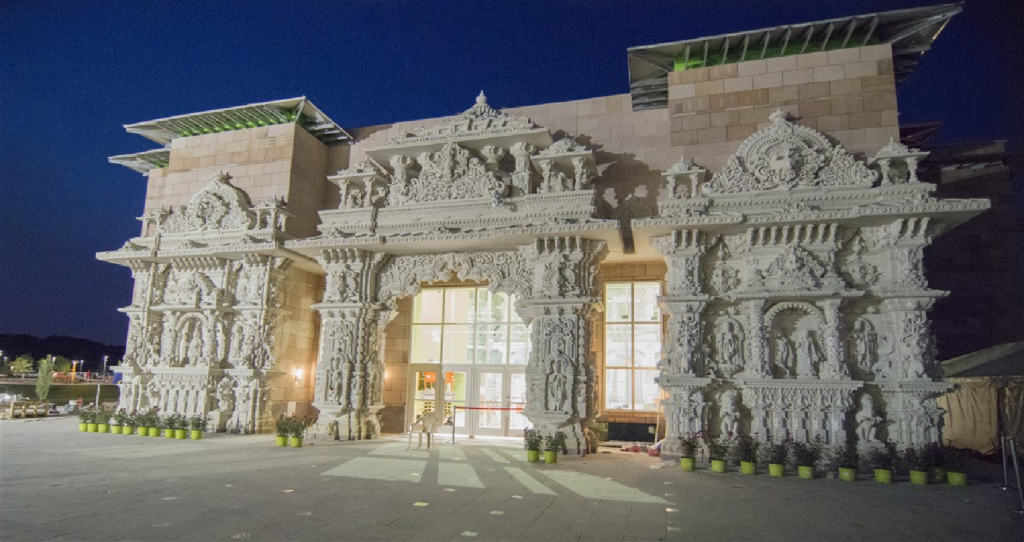 BAPS has been accused of human trafficking and wage law violations. An FBI spokesperson confirmed that agents were at the temple on “court-authorized law enforcement activity,” but wouldn’t elaborate. One of the attorneys who filed the suit said some workers had been removed from the site May 11.The lawsuit has been filed a month after New Jersey labor authorities halted work by a contractor at the Robbinsville temple and at a BAPS temple in Edison. The new lawsuit is a proposed class action complaint, alleging around 200 workers on religious immigration visas endured forced manual labor for the ongoing construction and expansion of the religious property on the 100-acre site.
BAPS has been accused of human trafficking and wage law violations. An FBI spokesperson confirmed that agents were at the temple on “court-authorized law enforcement activity,” but wouldn’t elaborate. One of the attorneys who filed the suit said some workers had been removed from the site May 11.The lawsuit has been filed a month after New Jersey labor authorities halted work by a contractor at the Robbinsville temple and at a BAPS temple in Edison. The new lawsuit is a proposed class action complaint, alleging around 200 workers on religious immigration visas endured forced manual labor for the ongoing construction and expansion of the religious property on the 100-acre site.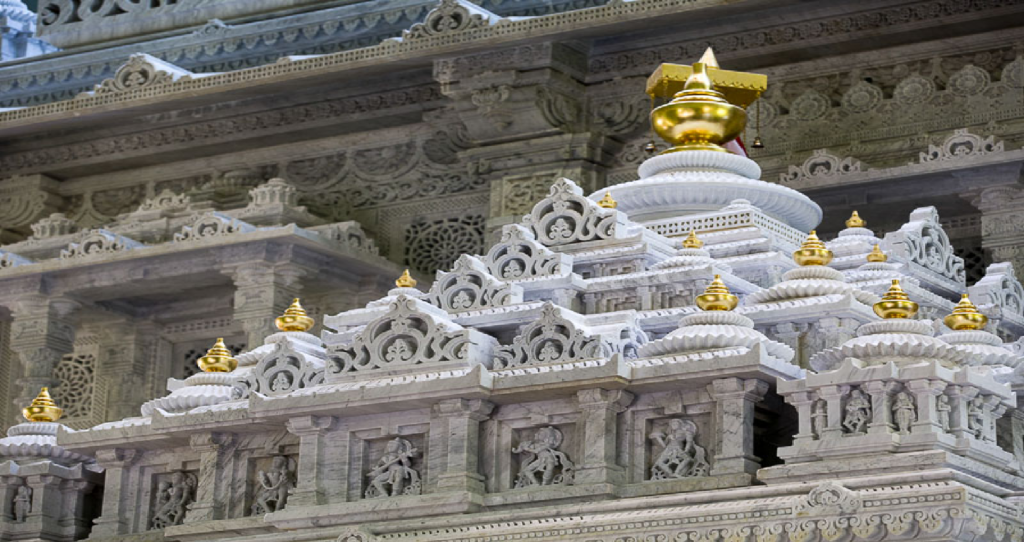 BAPS is a global sect of Hinduism founded in the early 20th century and aims to “preserve Indian culture and the Hindu ideals of faith, unity, and selfless service,” according to its website. The organization says it has built more than 1,100 mandirs — often large complexes that essentially function as community centers. BAPS is known for community service and philanthropy, taking an active role in the diaspora’s initiative to help India amid the current COVID-19 surge. According to the website for the Robbinsville mandir, its construction “is the epitome of volunteerism.”“Volunteers of all ages have devoted their time and resources from the beginning: assisting in the construction work, cleaning up around the site, preparing food for all the artisans on a daily basis and helping with other tasks,” the website says. “A total of 4.7 million man hours were required by craftsman and volunteers to complete the Mandir.”
BAPS is a global sect of Hinduism founded in the early 20th century and aims to “preserve Indian culture and the Hindu ideals of faith, unity, and selfless service,” according to its website. The organization says it has built more than 1,100 mandirs — often large complexes that essentially function as community centers. BAPS is known for community service and philanthropy, taking an active role in the diaspora’s initiative to help India amid the current COVID-19 surge. According to the website for the Robbinsville mandir, its construction “is the epitome of volunteerism.”“Volunteers of all ages have devoted their time and resources from the beginning: assisting in the construction work, cleaning up around the site, preparing food for all the artisans on a daily basis and helping with other tasks,” the website says. “A total of 4.7 million man hours were required by craftsman and volunteers to complete the Mandir.”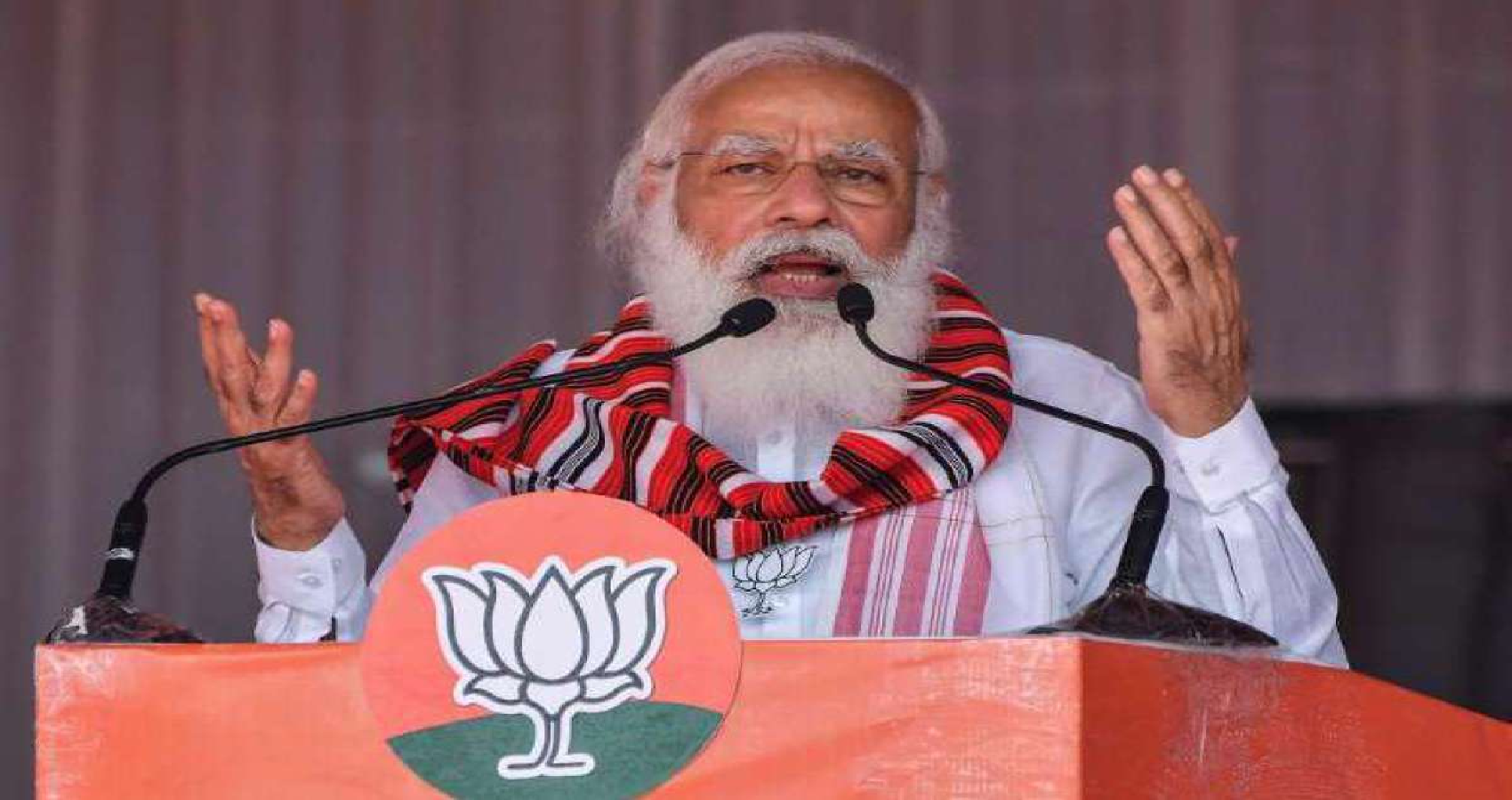
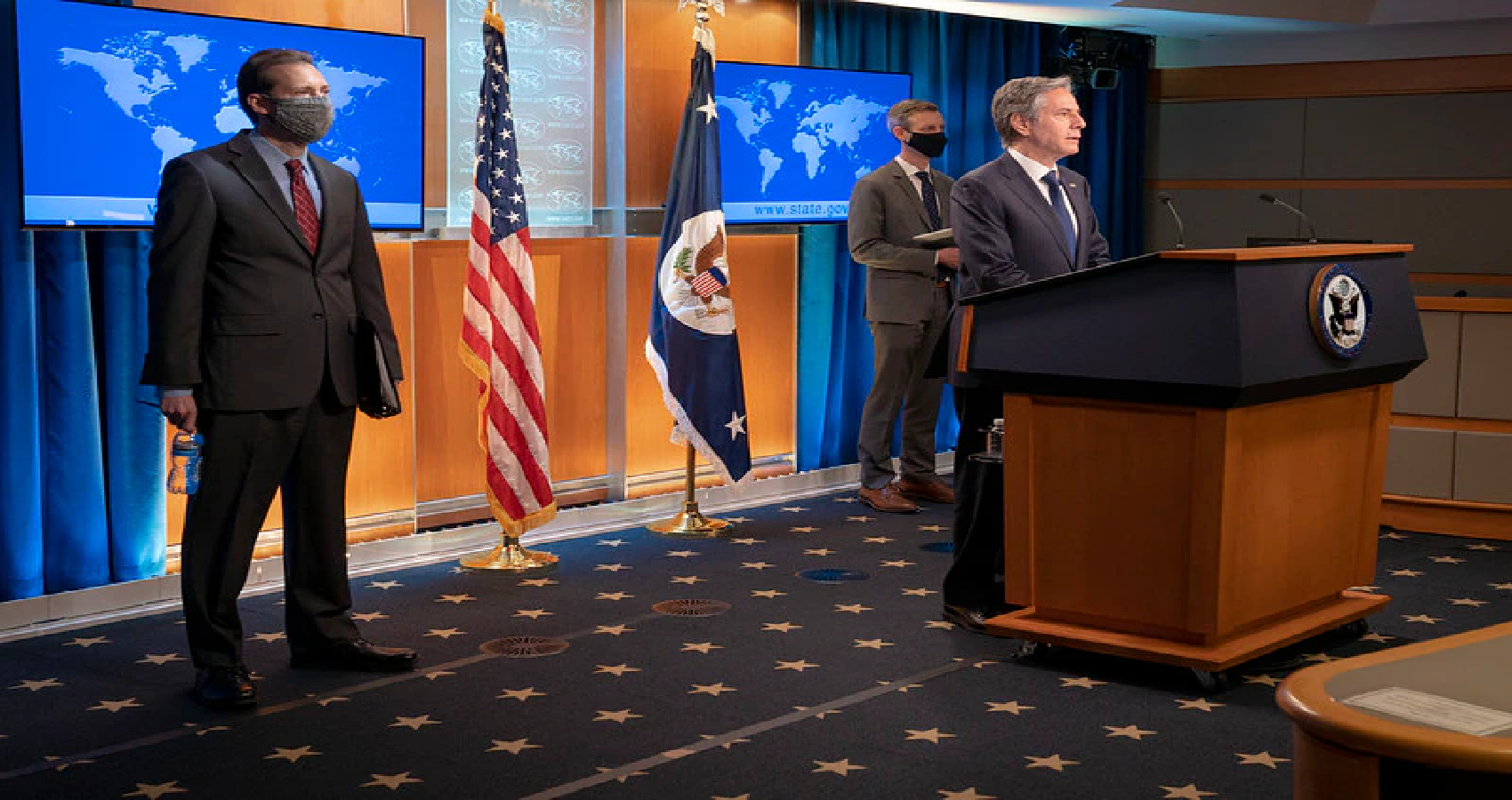

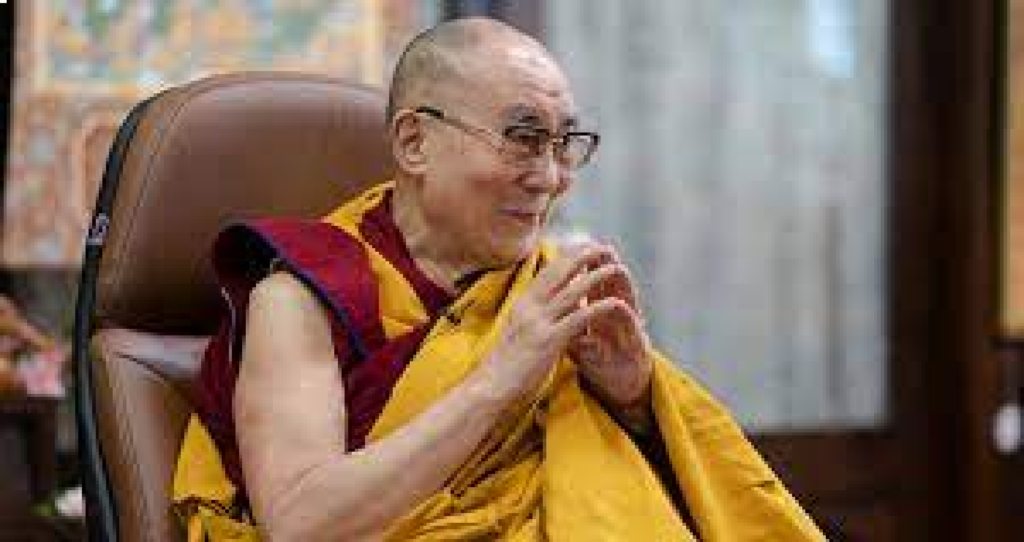 On query of Professor Medvedev that what value the study of ‘thukdam’ could have for humanity in general. The spiritual leader replied Tibetan Buddhists believe that people go through a process of dissolution in the course of death.
On query of Professor Medvedev that what value the study of ‘thukdam’ could have for humanity in general. The spiritual leader replied Tibetan Buddhists believe that people go through a process of dissolution in the course of death.
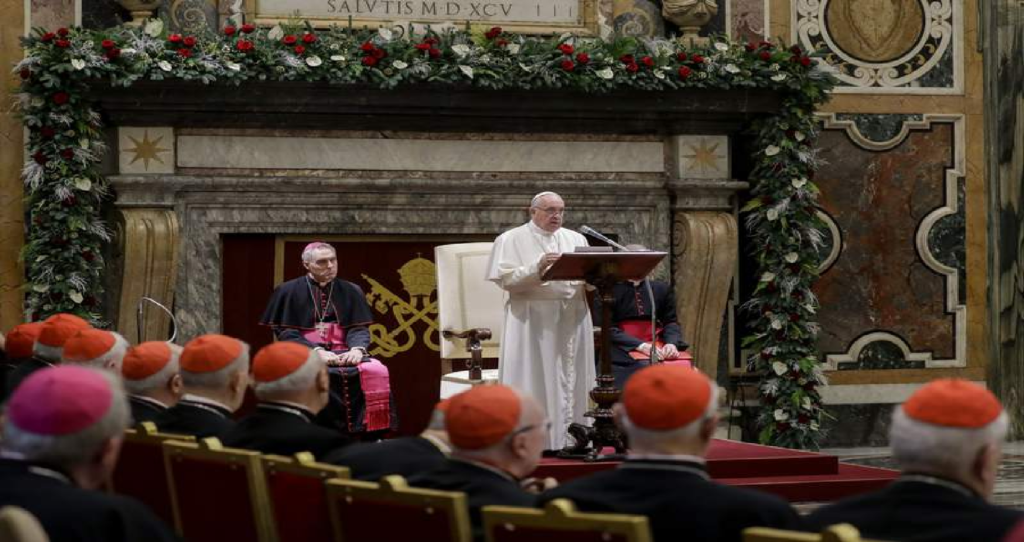 The National Catholic Register writes: “These gifts have been blamed for contributing to corruption in the Church when they were used between high-level Church officials to seek favors, most notably in cases like that of ex-cardinal Theodore McCarrick.”
The National Catholic Register writes: “These gifts have been blamed for contributing to corruption in the Church when they were used between high-level Church officials to seek favors, most notably in cases like that of ex-cardinal Theodore McCarrick.”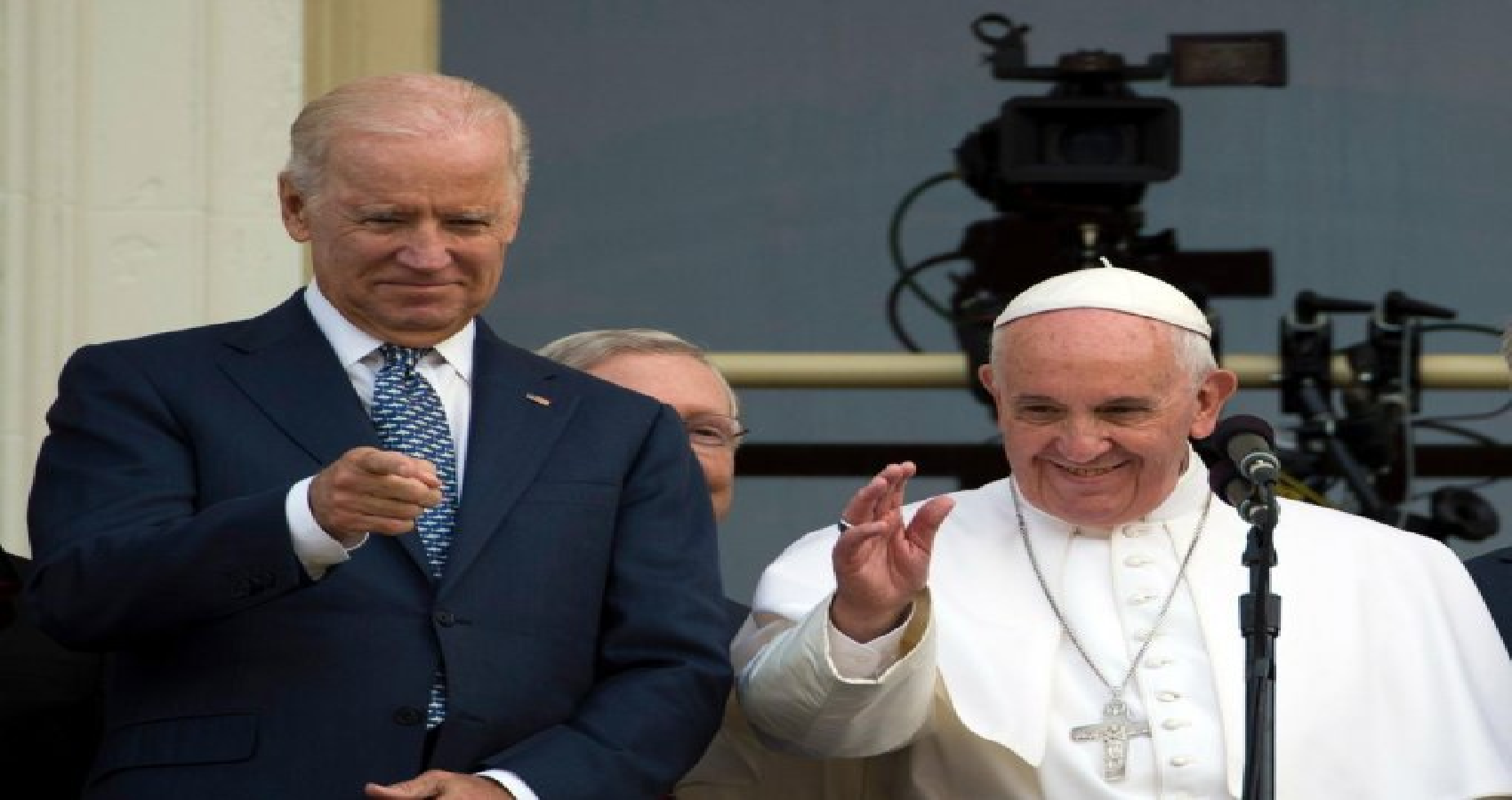
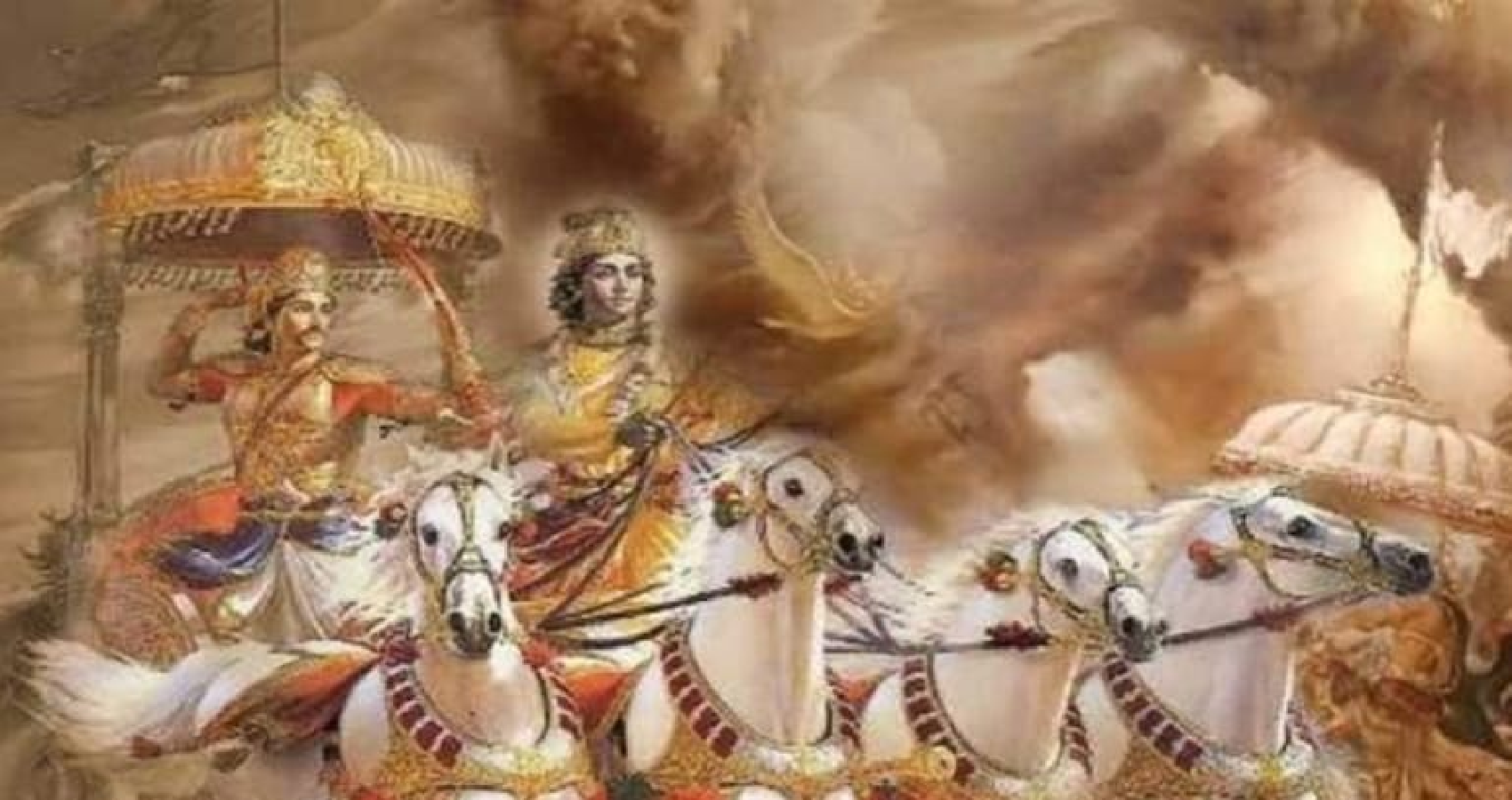
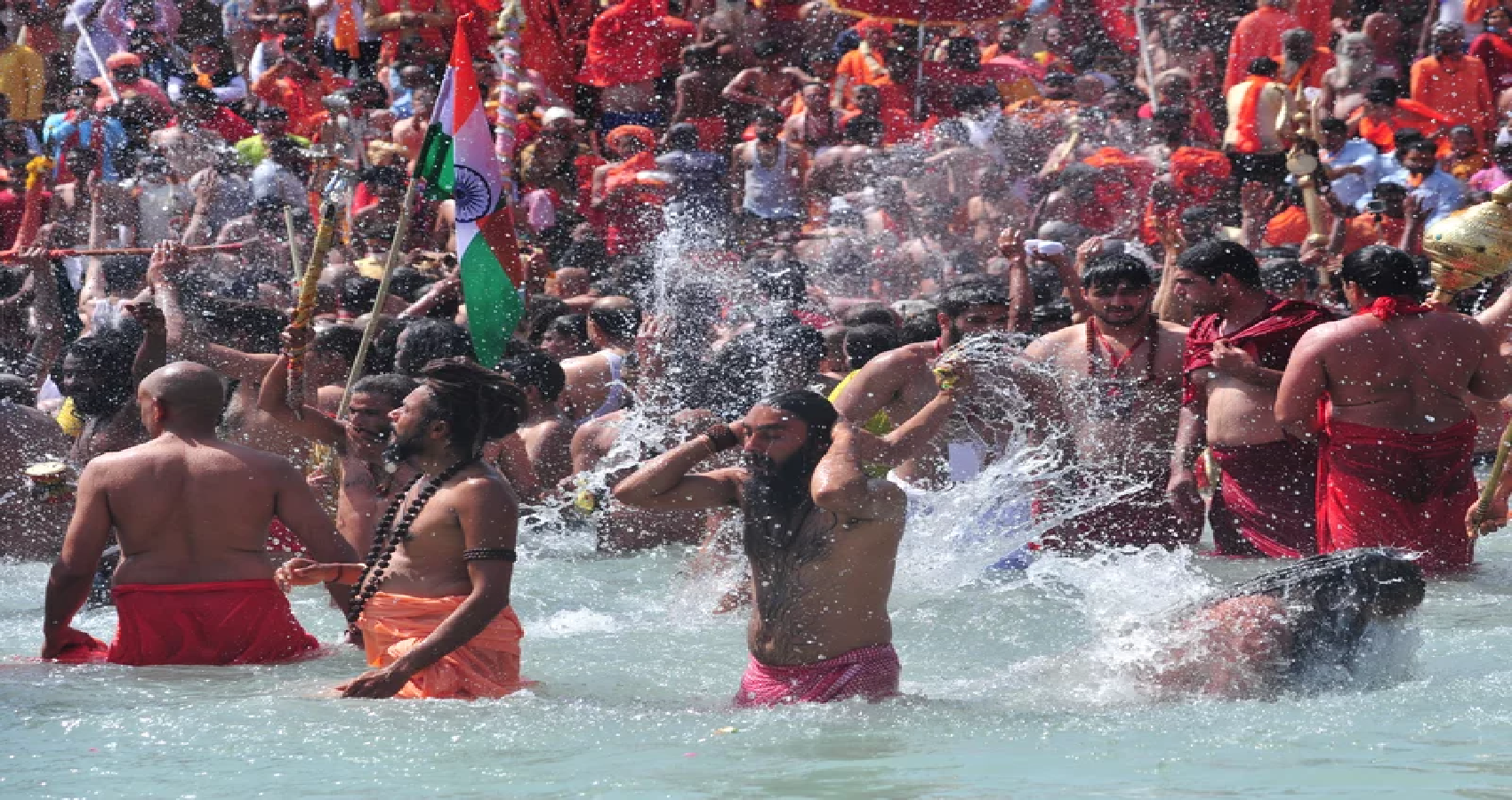
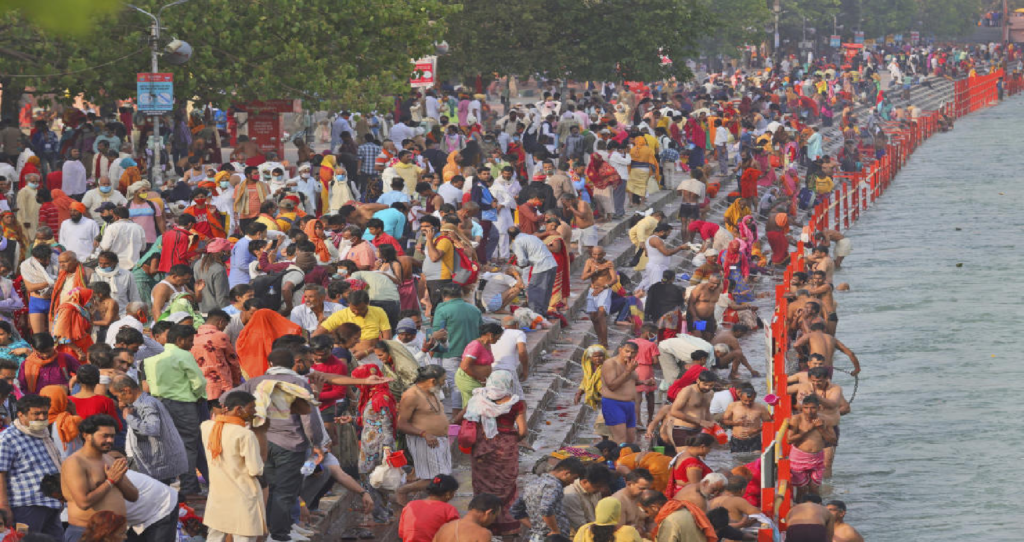 Hindus believe the river is holy and bathing in it will cleanse them of their sins and bring salvation. The Kumbh Mela takes place every 12 years and the venue is chosen from amongst four cities, including Allahabad, Haridwar, Nasik and Ujjain. Haridwar’s turn to host the gathering came amid a sharp rise in the number of coronavirus infections, with India consistently reporting more than 100,000 cases daily in the past few weeks.
Hindus believe the river is holy and bathing in it will cleanse them of their sins and bring salvation. The Kumbh Mela takes place every 12 years and the venue is chosen from amongst four cities, including Allahabad, Haridwar, Nasik and Ujjain. Haridwar’s turn to host the gathering came amid a sharp rise in the number of coronavirus infections, with India consistently reporting more than 100,000 cases daily in the past few weeks.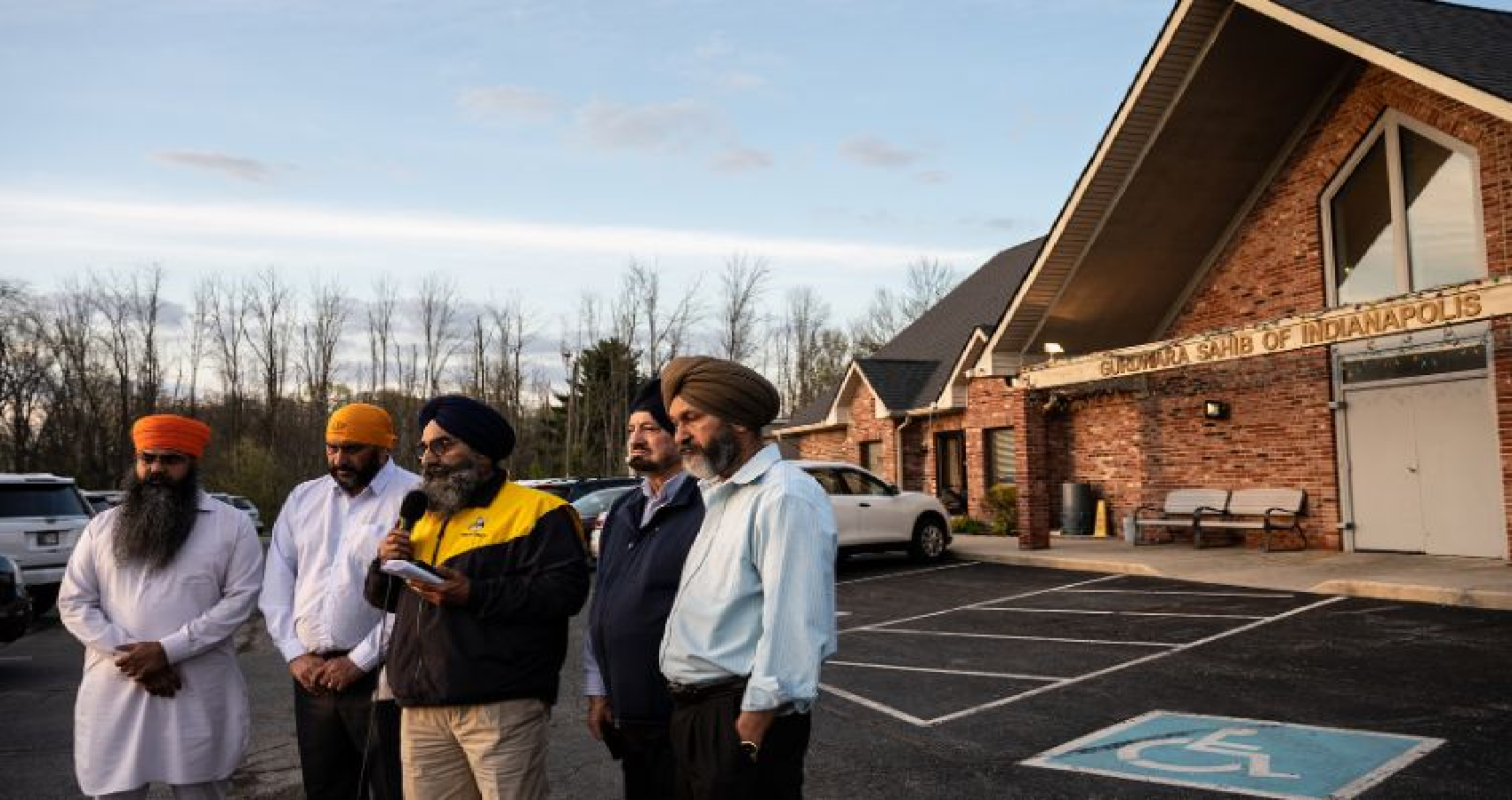
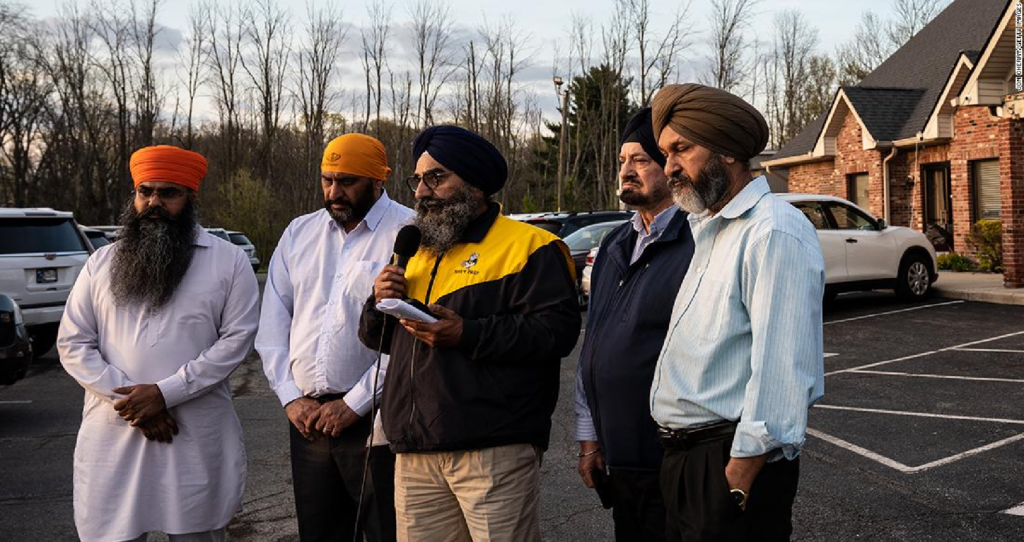 “We will invest significant resources into toppling those who seek to destroy our families, communities, and identity. The senseless gun violence that we’re seeing in this country is reflective of all of the spineless politicians who are beholden to the gun lobby. Period. End of story,” said Nikore. “They will be hearing from us — instead of offering thoughts and prayers, it’s time to mobilize for direct action and vote them out. That is what we’re doing today. We will end the violence, only when we have leaders who have the guts to do so.”
“We will invest significant resources into toppling those who seek to destroy our families, communities, and identity. The senseless gun violence that we’re seeing in this country is reflective of all of the spineless politicians who are beholden to the gun lobby. Period. End of story,” said Nikore. “They will be hearing from us — instead of offering thoughts and prayers, it’s time to mobilize for direct action and vote them out. That is what we’re doing today. We will end the violence, only when we have leaders who have the guts to do so.”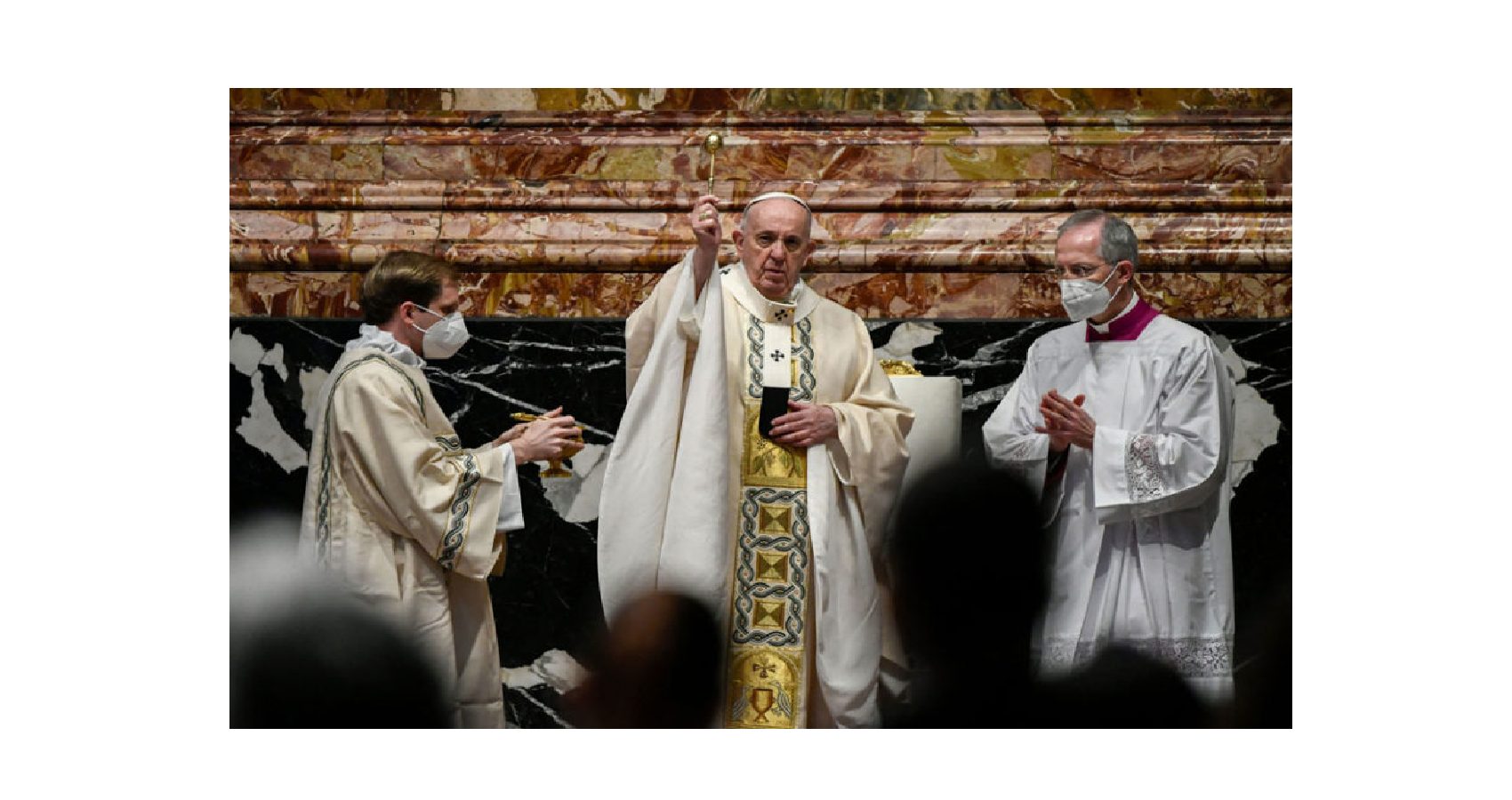
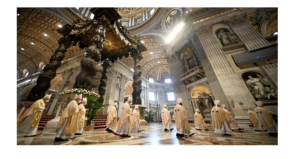 Francis presided over the ninth Easter service of his pontificate in the secondary altar of St. Peter’s Basilica and began two hours ahead of the usual schedule in order for congregants to be able to return home in time for Italy’s 10 p.m. curfew. The country is currently under strict lockdown in order to curb the rise in coronavirus cases.
Francis presided over the ninth Easter service of his pontificate in the secondary altar of St. Peter’s Basilica and began two hours ahead of the usual schedule in order for congregants to be able to return home in time for Italy’s 10 p.m. curfew. The country is currently under strict lockdown in order to curb the rise in coronavirus cases.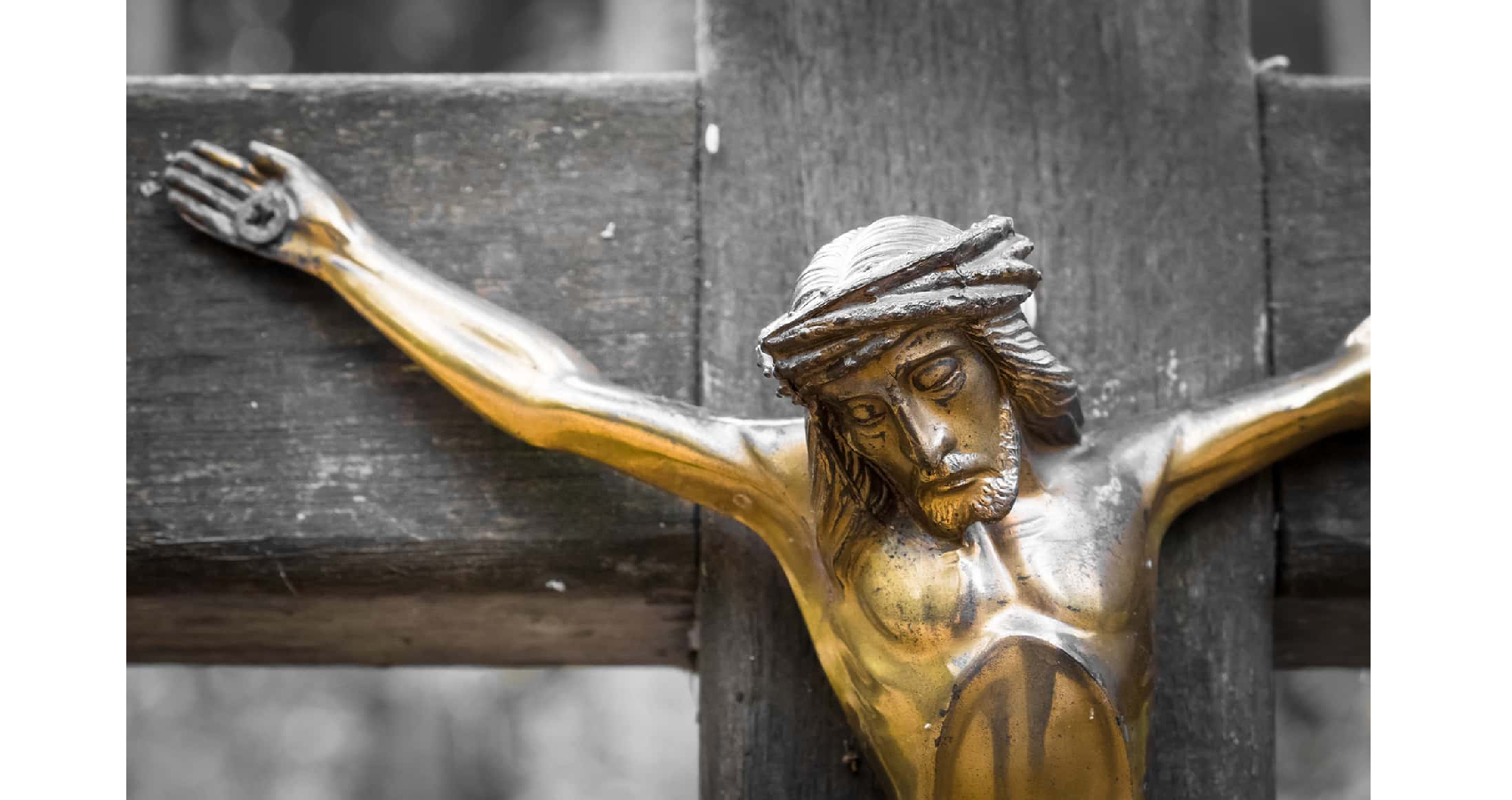
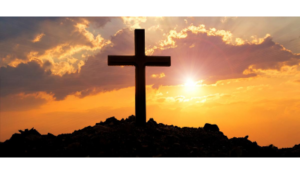 According to Beall, orthodox work on the incarnation begins with the standard doctrine that Christ is fully divine and fully human — having all properties that are essential to God but also all properties that are essential to being human, including all the essential limitations of being human. Philosophers and theologians have long struggled with this tension and, in a quest for logical consistency, have articulated theories that attempt to dissolve the apparent contradiction.
According to Beall, orthodox work on the incarnation begins with the standard doctrine that Christ is fully divine and fully human — having all properties that are essential to God but also all properties that are essential to being human, including all the essential limitations of being human. Philosophers and theologians have long struggled with this tension and, in a quest for logical consistency, have articulated theories that attempt to dissolve the apparent contradiction.


